Please use a modern browser to view this website. Some elements might not work as expected when using Internet Explorer.
- Landing Page
- Luxury Yacht Vacation Types
- Corporate Yacht Charter
- Tailor Made Vacations
- Luxury Exploration Vacations
- View All 3700
- Motor Yachts
- Sailing Yachts
- Classic Yachts
- Catamaran Yachts
- Filter By Destination
- More Filters
- Latest Reviews
- Charter Special Offers
- Destination Guides
- Inspiration & Features
- Mediterranean Charter Yachts
- France Charter Yachts
- Italy Charter Yachts
- Croatia Charter Yachts
- Greece Charter Yachts
- Turkey Charter Yachts
- Bahamas Charter Yachts
- Caribbean Charter Yachts
- Australia Charter Yachts
- Thailand Charter Yachts
- Dubai Charter Yachts
- Destination News
- New To Fleet
- Charter Fleet Updates
- Special Offers
- Industry News
- Yacht Shows
- Corporate Charter
- Finding a Yacht Broker
- Charter Preferences
- Questions & Answers
- Add my yacht
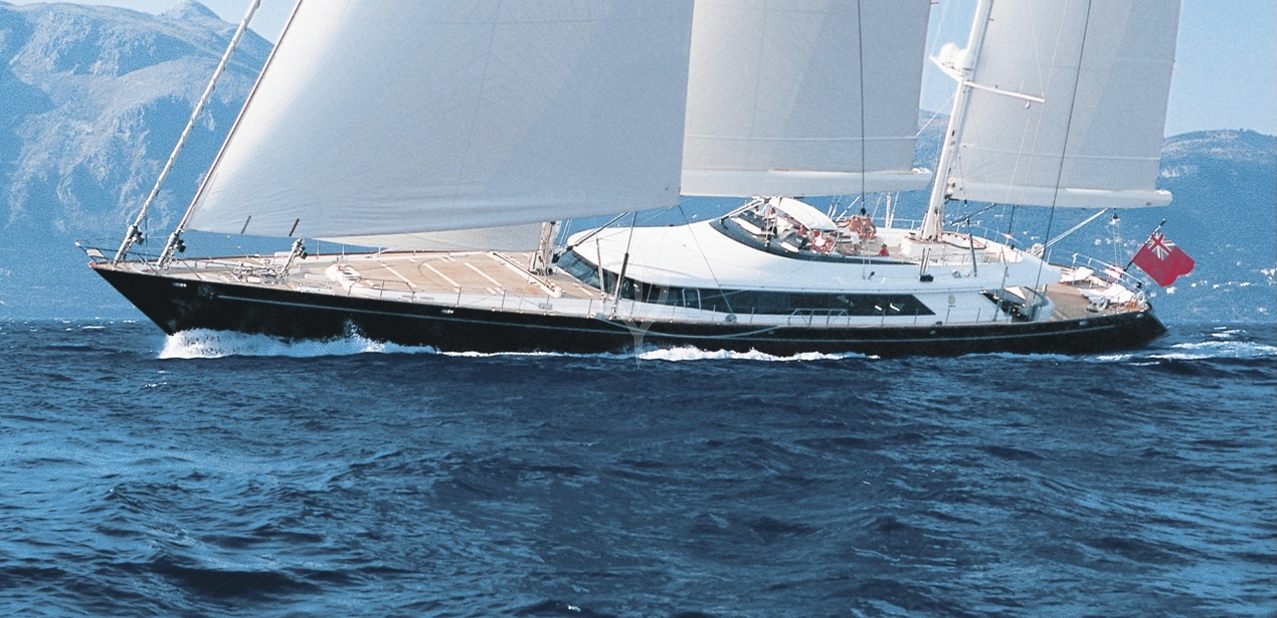
View More Photos
- Luxury Charter Yachts
- Sailing Yachts for Charter
Parsifal III
- Amenities & Toys
- Rates & Regions
- + Shortlist

PARSIFAL III YACHT CHARTER
53.8m / 176'6 perini navi 2005 / 2012.
- Previous Yacht
Cabin Configuration
Special Features:
- A perfectly proportioned ketch
- Capable of delivering an outstanding sailing experience
- Provides multiple interior and exterior spaces
- Space optimised by innovative design solutions
Luxury charter yacht 'Parsifal III' is the prime candidate for anyone looking for a taste of the superyacht lifestyle
The 54m/177'2" 'Parsifal III' sail yacht built by the Italian shipyard Perini Navi is available for charter for up to 12 guests in 5 cabins. This multi-award winning yacht features interior styling by Remi Tessier.
Offering an enticing combination of luxury and adventure, Parsifal III has all the bells and whistles and a wealth of convivial social spaces for the ultimate sun-kissed yacht charter getaway.
Guest Accommodation
Parsifal III is great for families thanks to her child-friendly setup. Built in 2005, She offers guest accommodation for up to 12 guests with a layout comprising a master suite, two double cabins and two twin cabins. There are 7 beds in total, including 1 king, 2 queen, 4 singles and 2 pullmans. She is also capable of carrying up to 9 crew onboard to ensure a relaxed luxury yacht charter experience.
Onboard Comfort & Entertainment
On your charter, you'll find plenty to keep you busy and entertained including a deck jacuzzi, perfect to enjoy the scenery with your favourite drink in hand.
Parsifal III benefits from some excellent features to improve your charter including Wi-Fi connectivity, allowing you to stay connected at all times, should you wish. You can stay comfortable on board whatever the weather, with air conditioning during your charter.
Performance & Range
Parsifal III is built with a aluminium hull and aluminium superstructure. Powered by 1 x Caterpillar engines, she comfortably cruises at 10 knots, reaches a maximum speed of 18 knots with a range of up to 3,400 nautical miles from her 46,200 litre fuel tanks at 13 knots.
Onboard Parsifal III has a range of toys and accessories to keep you and your guests entertained on the water throughout your stay. Principle among these are two Open Bic sailboats to bring out the explorer in you. Take to the sea on a Jet Ski offering you power and control on the water. Guests can feel the wind in their hair and jump the waves on a SeaDoo RXP WaveRunner. If that isn't enough Parsifal III also features towable toys, waterskis, a seabob and wakeboards. When it comes to Tenders, Parsifal III has you covered - with two tenders, including a 7.01m/23' Tender.
Marketing Description
The magnificent interior design is highlighted with her blend of dark ebony woodwork, light sycamore, stainless steel and fine leather. She features exquisite design and craftsmanship which creates an ultra modern and stylish yet warm, inviting and relaxed feeling. This is made possible with the skilled use of natural and restful textures. Features of note include a plunge pool, wireless internet, Teppinyaki BBQ, Modula seating in the saloon, and an array of sunning entertainment areas. Parsifal III is one of the most sought after and versatile sailing yachts on the charter market.
Parsifal III and her crew are available for charter this summer for cruising within the Mediterranean. She is already accepting bookings this winter for cruising in Bermuda and the Caribbean.
Sail yacht Parsifal III is an outstanding pedigree yacht that delivers on all fronts for superlative luxury yacht vacations.
TESTIMONIALS
Testimonials and reviews of the Parsifal III provided by Charter clients.
I wanted to write and thank you all from the bottom of my heart for the most amazing fourteen days a person could have ever imagined. Your team on Parsifal is second to none. If I’m fortunate enough to go to heaven I hope it’s a lot like my time on Parsifal. Warmest personal regards and appreciation for all you did to make our time onboard so great.
Supplied by: Mr. Devaney
Parsifal III Photos
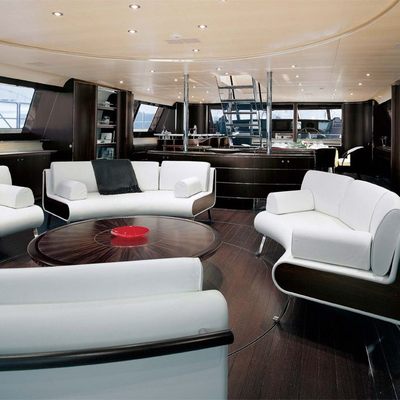
| Length | 53.8m / 176'6 |
| Beam | 10.7m / 35'1 |
| Draft | 4.5m / 14'9 |
| Gross Tonnage | 460 GT |
| Cruising Speed | 10 Knots |
| Built | | (Refitted) |
| Builder | Perini Navi |
| Model | Custom |
| Exterior Designer | Perini Navi |
| Interior Design | Remi Tessier |
Amenities & Entertainment
For your relaxation and entertainment Parsifal III has the following facilities, for more details please speak to your yacht charter broker.
Parsifal III is reported to be available to Charter with the following recreation facilities:
- 7.01m / 23' guest Tender
- 4.88m / 16' Tender
For a full list of all available amenities & entertainment facilities, or price to hire additional equipment please contact your broker.
Parsifal III Awards & Nominations
- The World Superyacht Awards 2006 Sailing Yacht of the Year Winner
- The World Superyacht Awards 2006 Best Interior Design - Sail Yacht Winner
- ShowBoats Awards 2006 Sailing Yacht Interior Winner
- + shortlist
For a full list of all available amenities & entertainment facilities, or price to hire additional equipment please contact your broker.
'Parsifal III' Charter Rates & Destinations
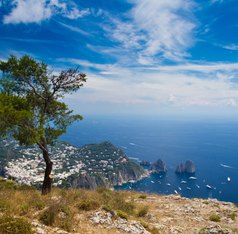
Summer Season
May - September
€245,000 p/week + expenses Approx $271,000
High Season
Cruising Regions
Mediterranean France, Greece, Italy, Monaco, Montenegro
HOT SPOTS: Amalfi Coast, Corsica, French Riviera, Mykonos, Sardinia
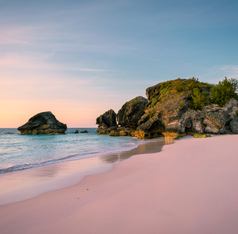
Winter Season
October - April
€235,000 p/week + expenses Approx $260,000
Bermuda Caribbean Antigua, Bahamas, Saint Martin, St Barts
Charter Parsifal III
To charter this luxury yacht contact your charter broker , or we can help you.
To charter this luxury yacht contact your charter broker or
BELOW DECK YACHT: PARSIFAL III
Charter yacht PARSIFAL III starred in Below Sailing Yacht season 1 under her real name. View all Below Deck yachts, their real names and the cost to rent them .
Update your yacht
Yacht Owner, Captain or Central Agents - Send us latest Photos, Charter Rates or Corrections Send Updates
SIMILAR YACHTS FOR CHARTER

Bahriyeli C
55m | Custom
from $20,000 p/week ♦︎
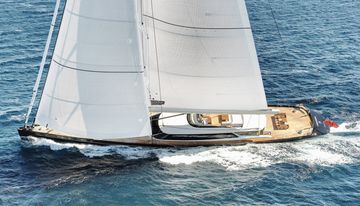
58m | Alloy Yachts
from $235,000 p/week
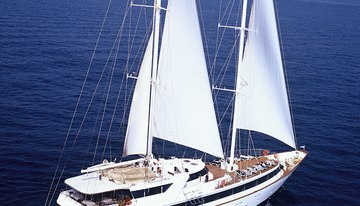
Pan Orama II
50m | Elthom
POA ♦︎
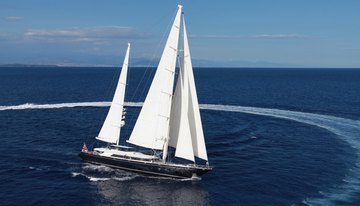
50m | Perini Navi
from $165,000 p/week

52m | Alloy Yachts
from $263,000 p/week ♦︎
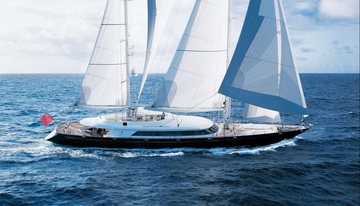
from $195,000 p/week ♦︎
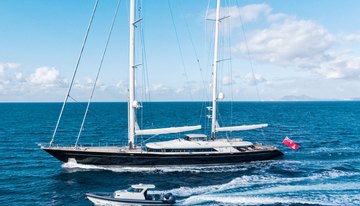
56m | Perini Navi
from $230,000 p/week

Baracuda Valletta
from $198,000 p/week ♦︎
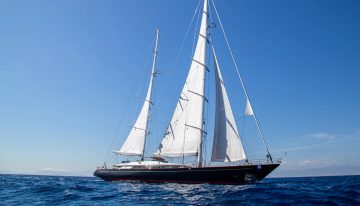
from $239,000 p/week ♦︎

53m | Alloy Yachts
from $175,000 p/week
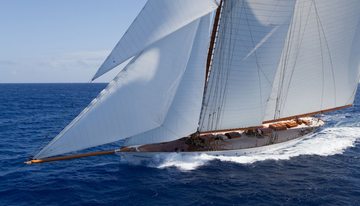
55m | Marin LuxurYachts
from $111,000 p/week ♦︎

55m | Vitters
from $184,000 p/week ♦︎
NOTE to U.S. Customs & Border Protection
Specification
SEASONAL CHARTER RATES
- Share on Facebook
- Share Yacht
SIMILAR LUXURY CHARTER YACHTS
Here are a selection of yachts which are similar to the current charter yacht. To view all similar luxury charter yachts click on the button below.
As Featured In
The YachtCharterFleet Difference
YachtCharterFleet makes it easy to find the yacht charter vacation that is right for you. We combine thousands of yacht listings with local destination information, sample itineraries and experiences to deliver the world's most comprehensive yacht charter website.
San Francisco
- Like us on Facebook
- Follow us on Twitter
- Follow us on Instagram
- Find us on LinkedIn
- Add My Yacht
- Affiliates & Partners
Popular Destinations & Events
- St Tropez Yacht Charter
- Monaco Yacht Charter
- St Barts Yacht Charter
- Greece Yacht Charter
- Mykonos Yacht Charter
- Caribbean Yacht Charter
Featured Charter Yachts
- Maltese Falcon Yacht Charter
- Wheels Yacht Charter
- Victorious Yacht Charter
- Andrea Yacht Charter
- Titania Yacht Charter
- Ahpo Yacht Charter
Receive our latest offers, trends and stories direct to your inbox.
Please enter a valid e-mail.
Thanks for subscribing.
Search for Yachts, Destinations, Events, News... everything related to Luxury Yachts for Charter.
Yachts in your shortlist
- BOAT OF THE YEAR
- Newsletters
- Sailboat Reviews
- Boating Safety
- Sails and Rigging
- Maintenance
- Sailing Totem
- Sailor & Galley
- Living Aboard
- Destinations
- Gear & Electronics
- Charter Resources
- Ultimate Boating Giveaway

20 Best Small Sailboats for the Weekender
- By Mark Pillsbury
- Updated: May 24, 2024
In order to go cruising, most of us require a sailboat with a head, a galley, and bunks. The boat, likely a 30-footer and more often a 40-footer, will have electronics for navigation and entertainment, refrigeration if the trip is longer than a coastal hop, an engine for light wind, and, depending on our appetites for food and fun, perhaps a genset to power our toys and appliances.
To go sailing , however, all we really need is a hull, mast, rudder, and sail. To experience the pure joy of sheeting in and scooting off across a lake, bay, or even the open ocean, there’s nothing better than a small sailboat – we’re talking sailboats under 25 feet. You can literally reach out and touch the water as it flows past. You instantly feel every puff of breeze and sense every change in trim.
Some of the boats in this list are new designs, others are time-tested models from small sailboat manufacturers, but every one is easy to rig, simple to sail, and looks like a whole lot of fun either for a solo outing on a breezy afternoon or to keep family and friends entertained throughout your entire sailing season. This list is made up of all types of sailboats , and if you’re looking for a list of some of the best small sailboats for beginners, you’ll find exactly that here.
Any one of these popular boats could be labeled as a trailerable sailboat, daysailer, or even a weekender sailboat. And while most would be labeled as a one or two person sailboat, some could comfortably fit three or even four people.
– CHECK THE WEATHER – The weather changes all the time. Always check the forecast and prepare for the worst case. Safety Tip Provided by the U.S. Coast Guard
Marblehead 22 Daysailer
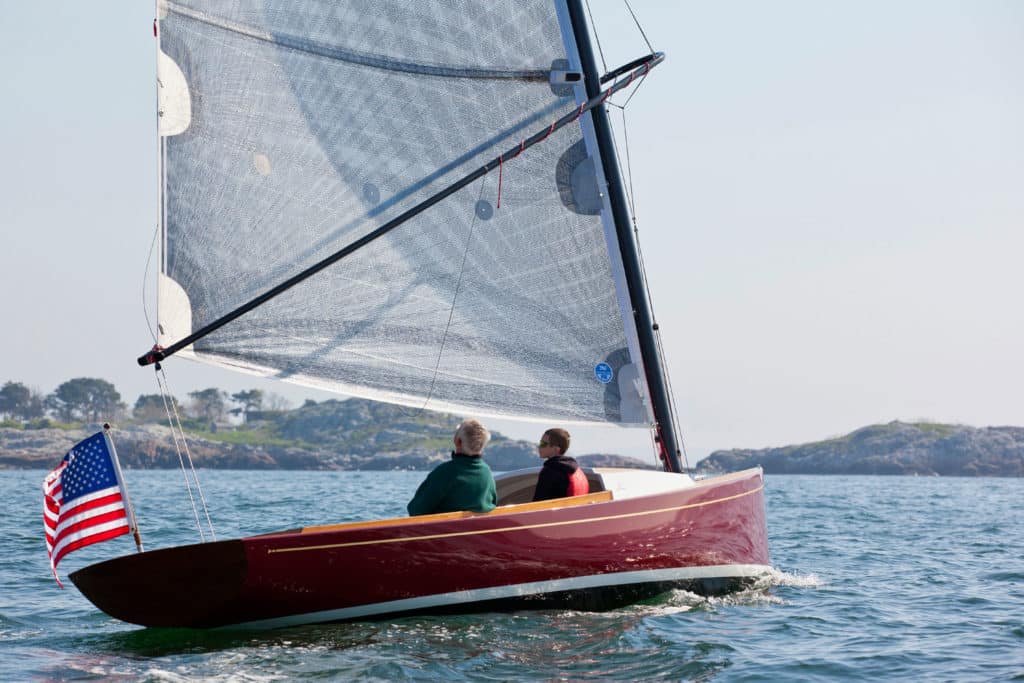
If you have an eye for elegant lines and your heart goes pitter-patter over just the right amount of overhang beneath a counter transom, the Marblehead 22 daysailer, designed by Doug Zurn and built by Samoset Boatworks in Boothbay, Maine, will definitely raise your pulse. Traditional-looking above the waterline and modern beneath, the cold-molded hull sports a deep bulb keel and a Hall Spars carbon-fiber mast with a wishbone rig and square-top main. The 11-foot-9-inch cockpit can seat a crowd, and a small cuddy forward will let you stow your friends’ gear for the day. samosetboatworks.com
Catalina 22 Sport
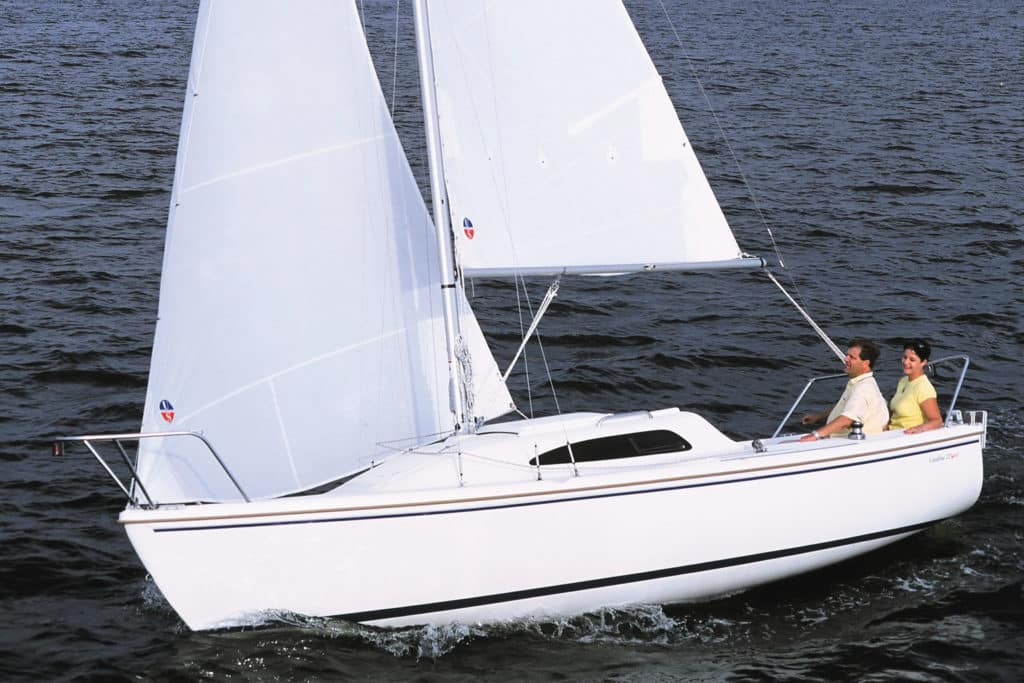
Many a harbor plays host to an active fleet of Catalina 22s, one of the most popular small sailboats over the years, given its basic amenities and retractable keel, which allows it to be easily trailered. Recently, the company introduced the Catalina 22 Sport, an updated design that can compete with the older 22s. The boat features a retractable lead keel; a cabin that can sleep four, with a forward hatch for ventilation; and a fractional rig with a mainsail and a roller-furling jib. Lifelines, a swim ladder, and an engine are options, as are cloth cushions; vinyl cushions are standard. The large cockpit will seat a crowd or let a mom-and-pop crew stretch out and enjoy their sail. It’s clear why the Catalina 22 is one of the best sailboats under 25 feet. catalinayachts.com
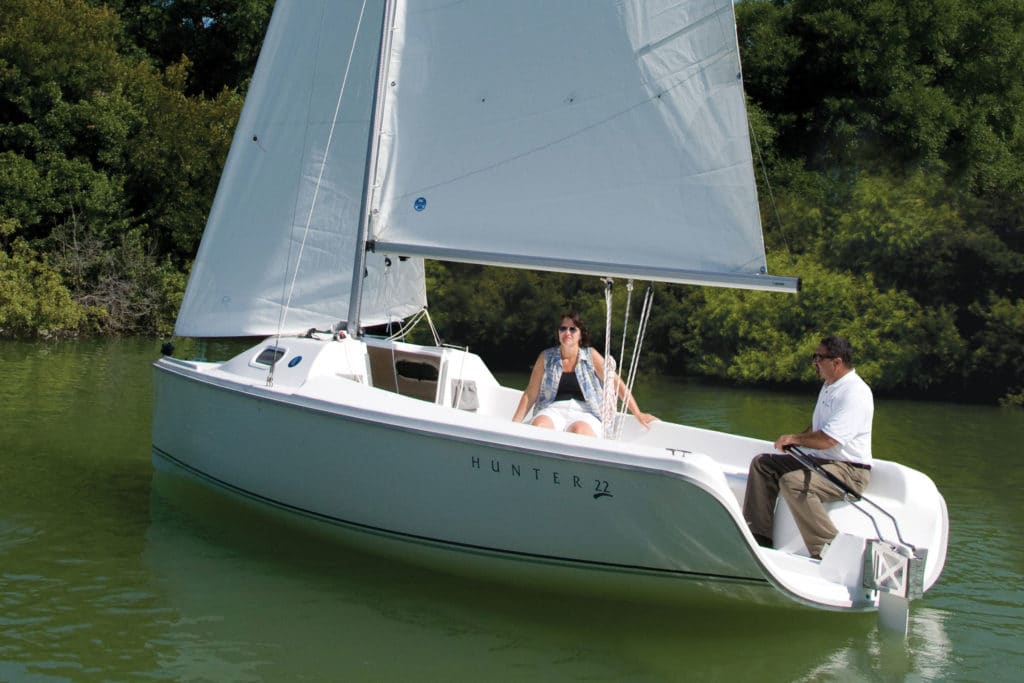
With its large, open-transom cockpit and sloop rig, the Hunter 22 makes a comfortable daysailer for family and friends. But with its cuddy cabin, twin bunks, optional electrical system, opening screened ports, and portable toilet, a parent and child or a couple could comfortably slip away for an overnight or weekend. Add in the optional performance package, which includes an asymmetric spinnaker, a pole, and a mainsheet traveler, and you could be off to the races. The boat features a laminated fiberglass hull and deck, molded-in nonskid, and a hydraulic lifting centerboard. Mount a small outboard on the stern bracket, and you’re set to go. marlow-hunter.com
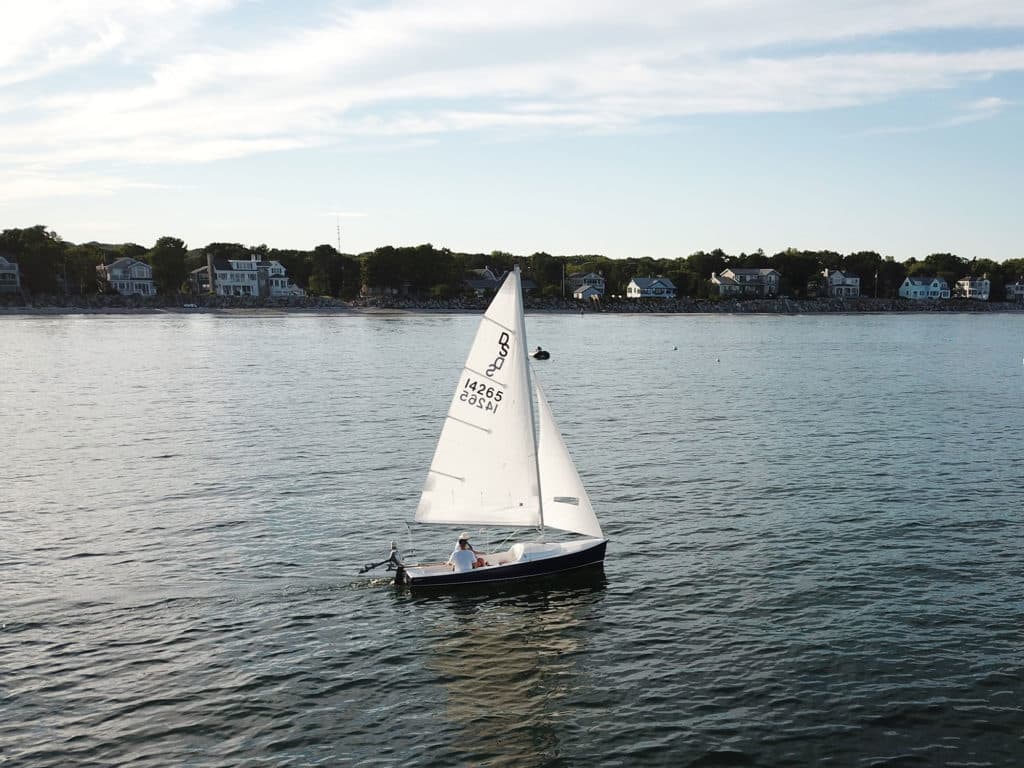
Not sure whether you want to race, cruise or just go out for an afternoon sail? Since 1958, sailors have been having a ball aboard the Uffa Fox/George O’Day-designed Daysailer. Fox, who in the 1950s was on the cutting edge of planning-dinghy design, collaborated with Fall River, Massachusetts boatbuilder O’Day Corp. to build the 16-foot Daysailer, a boat that features a slippery hull and a small cuddy cabin that covers the boat roughly from the mast forward. Thousands of Daysailers were built by various builders, and they can be found used for quite affordable prices. There are active racing fleets around the US, and new Daysailers are still in production today, built by Cape Cod Ship Building. capecodshipbuilding.com
BayRaider from Swallow Boats
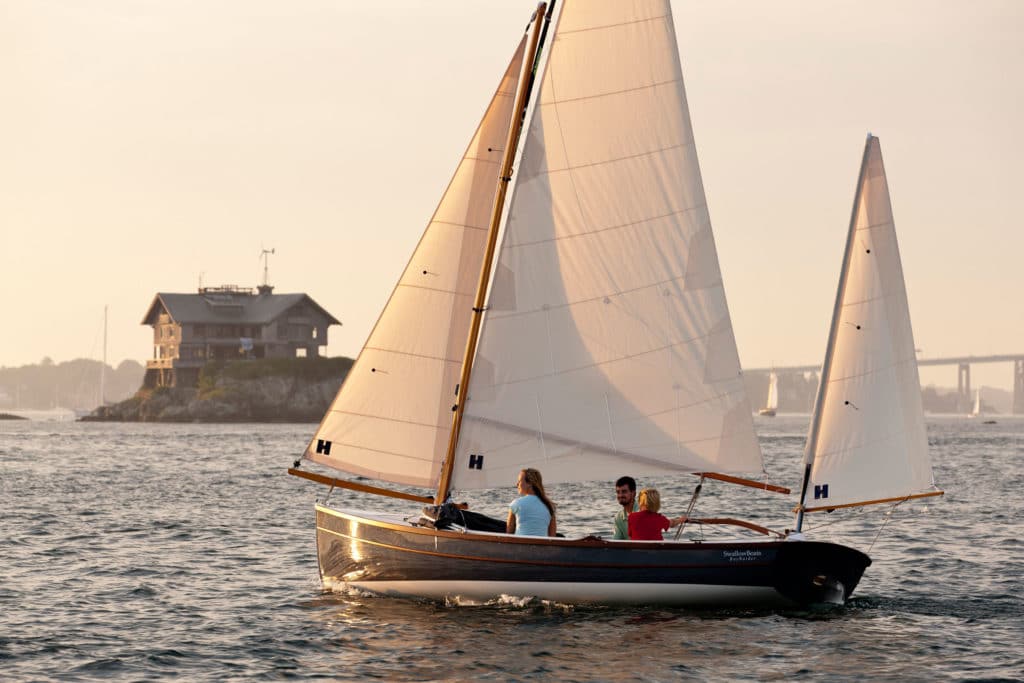
Easy to rig and trailer, the BayRaider from England’s Swallow Yachts is a relative newcomer to the small-boat market in the United States. Nearly all of its 19 feet 9 inches is open cockpit, though a spray hood can be added to keep the forward sections dry. The BayRaider is ketch-rigged with a gunter-style mainmast. The topmast and mizzen are both carbon-fiber, which is an option for the mainmast as well. The BayRaider can be sailed with a dry hull in lighter conditions or with 300 pounds of water ballast to increase its stability. With the centerboard and hinged rudder raised, the boat can maneuver in even the thinnest water.
$28,900, (904) 234-8779, swallowyachts.com
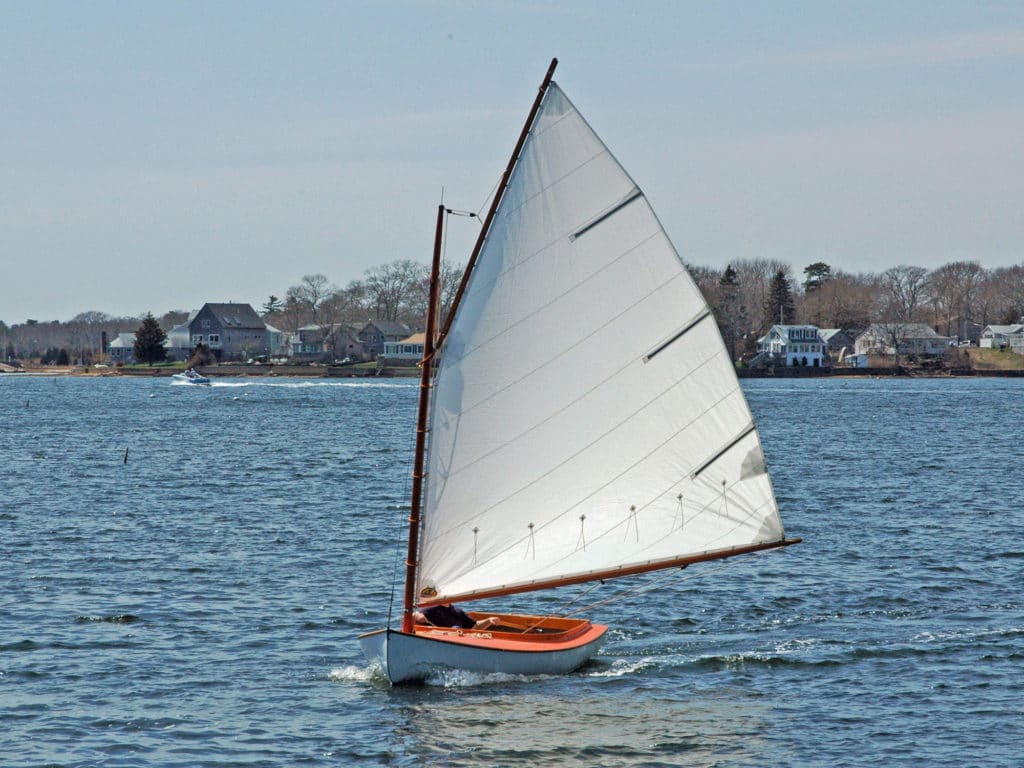
Big fun can come in small packages, especially if your vessel of choice happens to be the 12 ½-foot Beetle Cat. Designed by John Beetle and first built in 1921, the wooden shallow draft sailboat is still in production today in Wareham, Massachusetts at the Beetle Boat Shop. With a draft of just 2 feet, the boat is well-suited for shallow bays, but equally at home in open coastal waters. The single gaff-rigged sail provides plenty of power in light air and can be quickly reefed down to handle a blow. In a word, sailing a Beetle Cat is fun. beetlecat.com
– LEARN THE NAVIGATION RULES – Know the “Rules of the Road” that govern all boat traffic. Be courteous and never assume other boaters can see you. Safety Tip Provided by the U.S. Coast Guard
West Wight Potter P 19
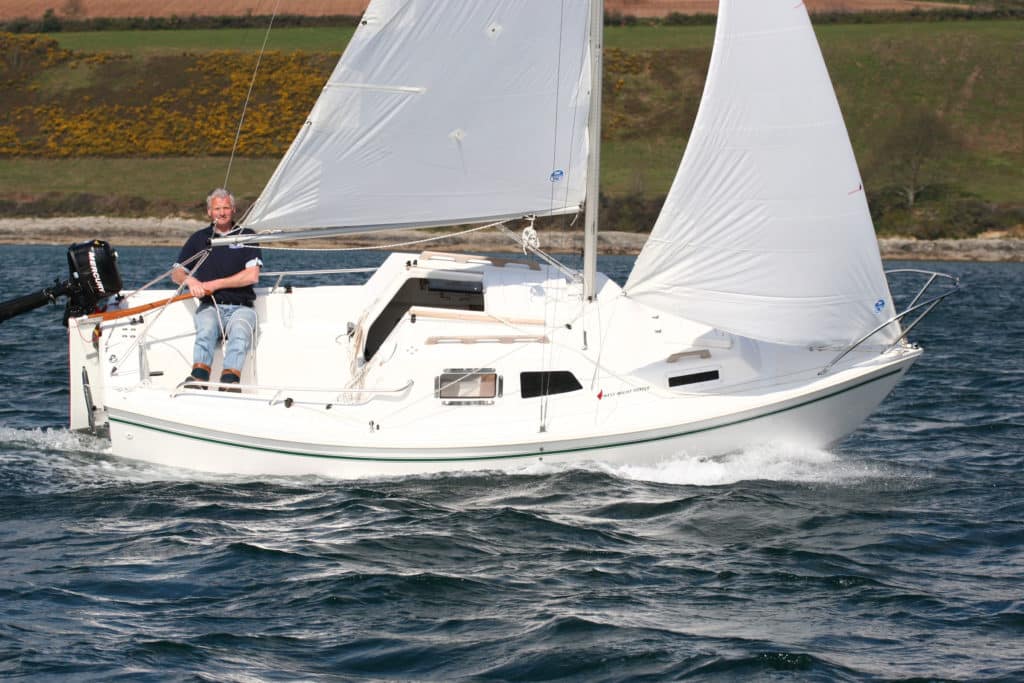
With berths for four and a workable galley featuring a cooler, a sink, and a stove, West Wight Potter has packed a lot into its 19-foot-long P 19. First launched in 1971, this is a line of boats that’s attracted a true following among trailer-sailors. The P 19′s fully retractable keel means that you can pull up just about anywhere and go exploring. Closed-cell foam fore and aft makes the boat unsinkable, and thanks to its hard chine, the boat is reportedly quite stable under way. westwightpotter.com
NorseBoat 17.5
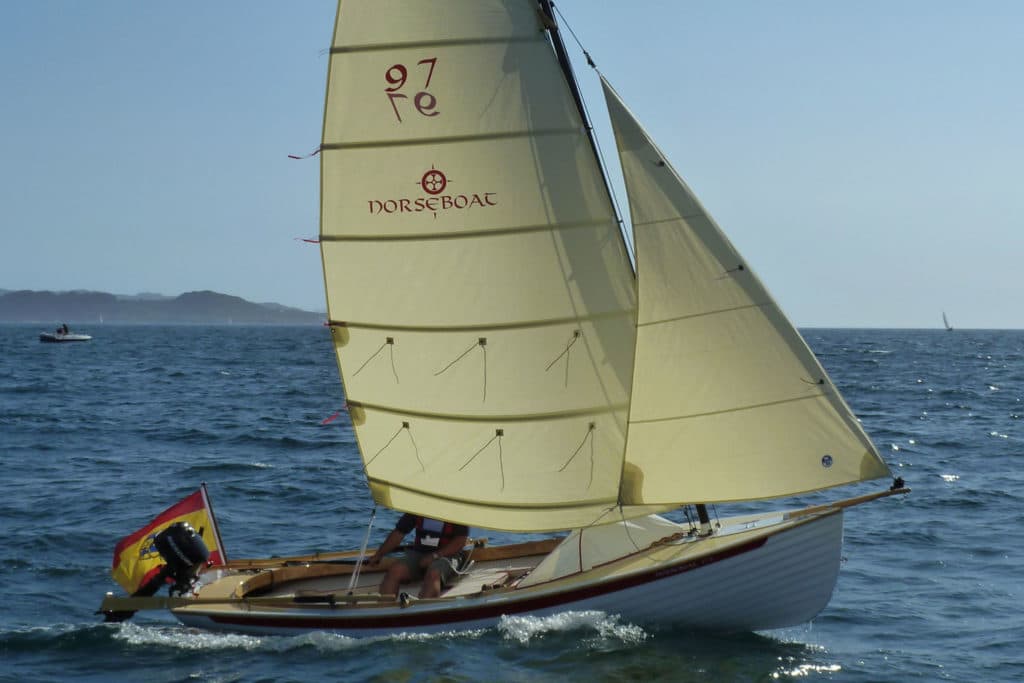
Designed for rowing and sailing (a motor mount is optional), the Canadian-built NorseBoat 17.5—one of which was spotted by a CW editor making its way through the Northwest Passage with a two-man crew—features an open cockpit, a carbon-fiber mast, and a curved-gaff rig, with an optional furling headsail set on a sprit. The lapstrake hull is fiberglass; the interior is ply and epoxy. The boat comes standard with two rowing stations and one set of 9-foot oars. The boat is designed with positive flotation and offers good load-carrying capacity, which you could put to use if you added the available canvas work and camping tent. NorseBoats offers a smaller sibling, the 12.5, as well; both are available in kit form.
$19,000, (902) 659-2790, norseboat.com
Montgomery 17
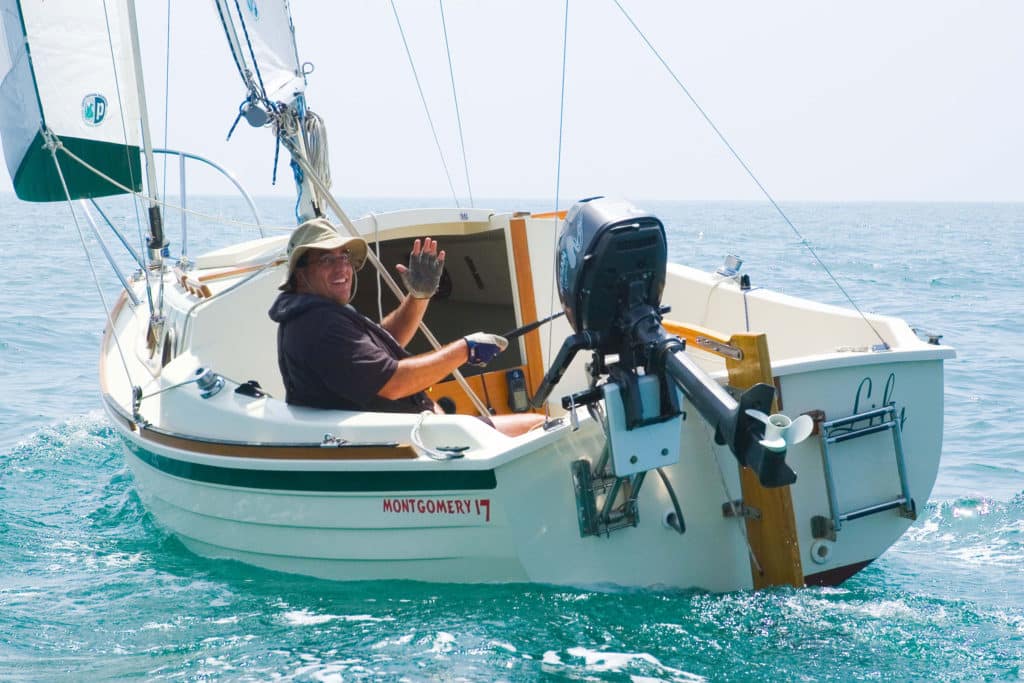
Billed as a trailerable pocket cruiser, the Montgomery 17 is a stout-looking sloop designed by Lyle Hess and built out of fiberglass in Ontario, California, by Montgomery Boats. With a keel and centerboard, the boat draws just under 2 feet with the board up and can be easily beached when you’re gunkholing. In the cuddy cabin you’ll find sitting headroom, a pair of bunks, a portable toilet, optional shore and DC power, and an impressive amount of storage space. The deck-stepped mast can be easily raised using a four-part tackle. The builder reports taking his own boat on trips across the Golfo de California and on visits to California’s coastal islands. Montgomery makes 15-foot and 23-foot models, as well. If you’re in search of a small sailboat with a cabin, the Montgomery 17 has to be on your wish list.
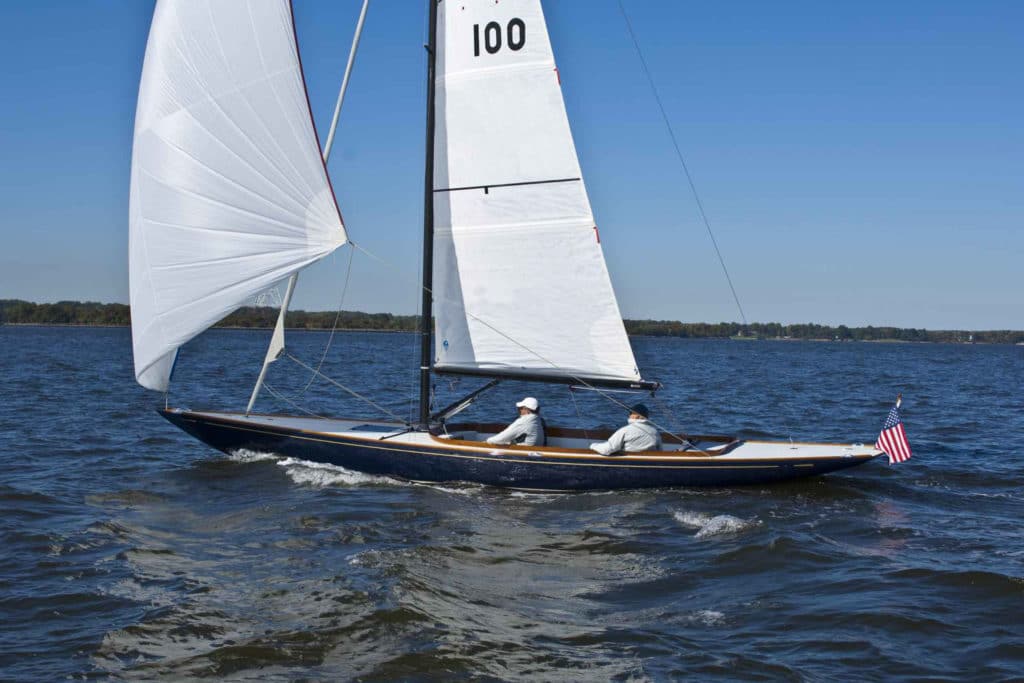
With long overhangs and shiny brightwork, the CW Hood 32 is on the larger end of the daysailer spectrum. Designers Chris Hood and Ben Stoddard made a conscious decision to forego a cabin and head in favor of an open cockpit big enough to bring 4 or 5 friends or family out for an afternoon on the water. The CW Hood 32 is sleek and graceful through the water and quick enough to do some racing, but keeps things simple with a self-tacking jib and controls that can be lead back to a single-handed skipper. A top-furling asymmetrical, electric sail drive and Torqeedo outboard are all optional. The CW Hood 32 makes for a great small family sailboat. cwhoodyachts.com
Sun Cat from Com-Pac
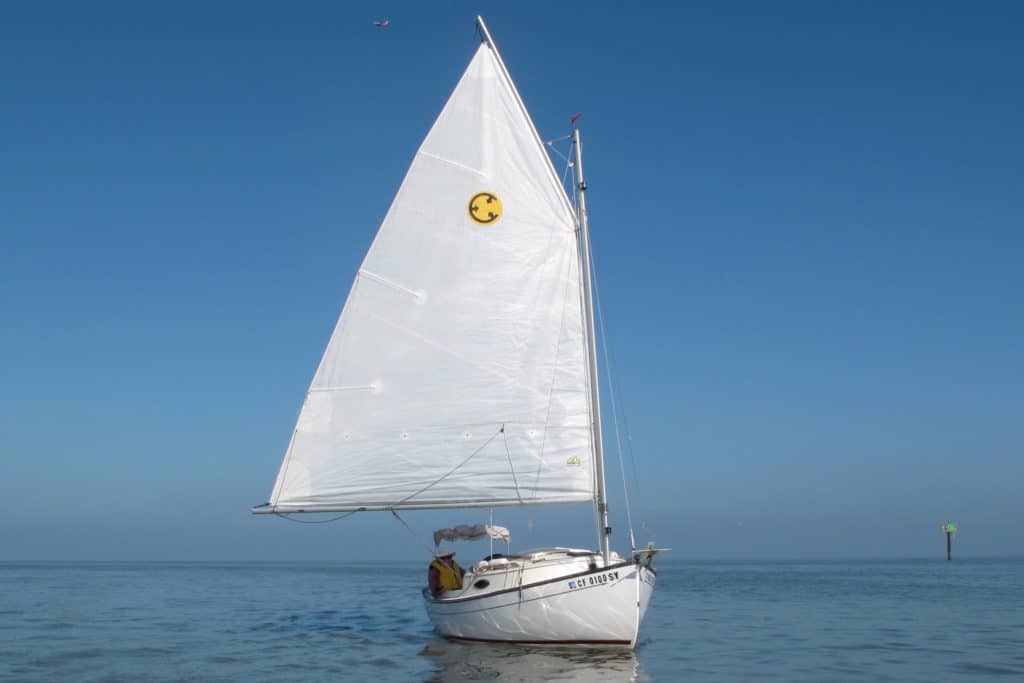
Shallow U.S. East Coast bays and rock-strewn coasts have long been graced by cat boats, whose large, gaff-rigged mainsails proved simple and powerful both on the wind and, better yet, when reaching and running. The 17-foot-4-inch Sun Cat, built by Com-Pac Yachts, updates the classic wooden cat with its fiberglass hull and deck and the easy-to-step Mastender Rigging System, which incorporates a hinged tabernacle to make stepping the mast a one-person job. If you want a personal sailboat ideal for solo sailing, the Sun Can is a great choice. Belowdecks, the twin 6-foot-5-inch berths and many other features and amenities make this cat a willing weekender.
$19,800, (727) 443-4408, com-pacyachts.com
Catalina 16.5
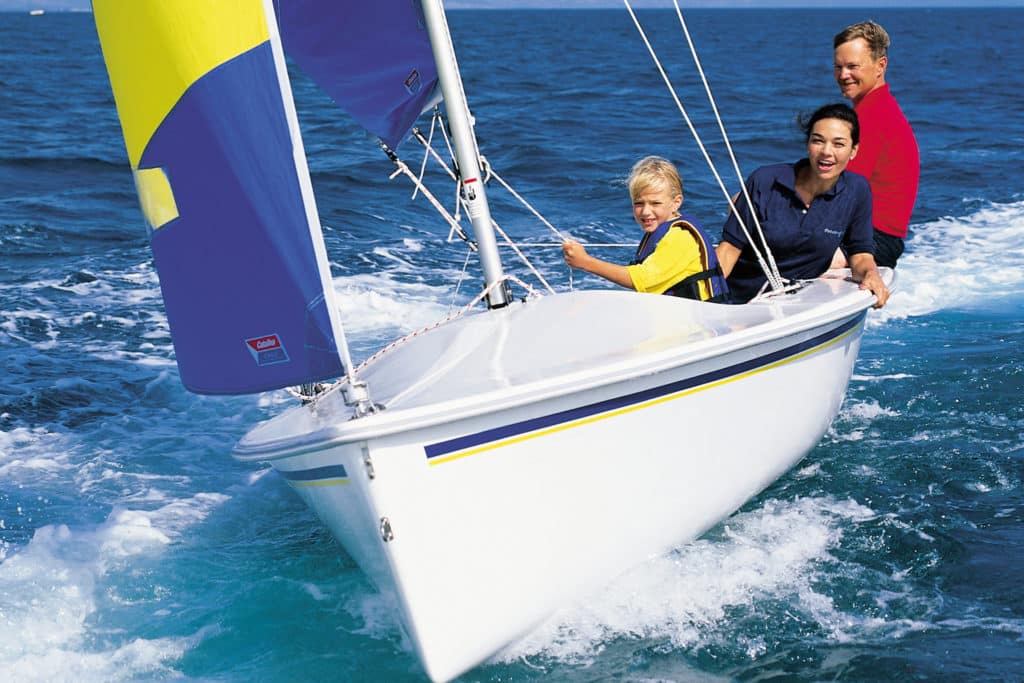
The Catalina 16.5 sits right in the middle of Catalina Yachts’ line of small sailboats, which range from the 12.5 to the 22 Capri and Sport, and it comes in both an easy-to-trailer centerboard model and a shoal-draft fixed-keel configuration. With the fiberglass board up, the 17-foot-2-inch boat draws just 5 inches of water; with the board down, the 4-foot-5-inch draft suggests good windward performance. Hull and deck are hand-laminated fiberglass. The roomy cockpit is self-bailing, and the bow harbors a good-sized storage area with a waterproof hatch. catalinayachts.com
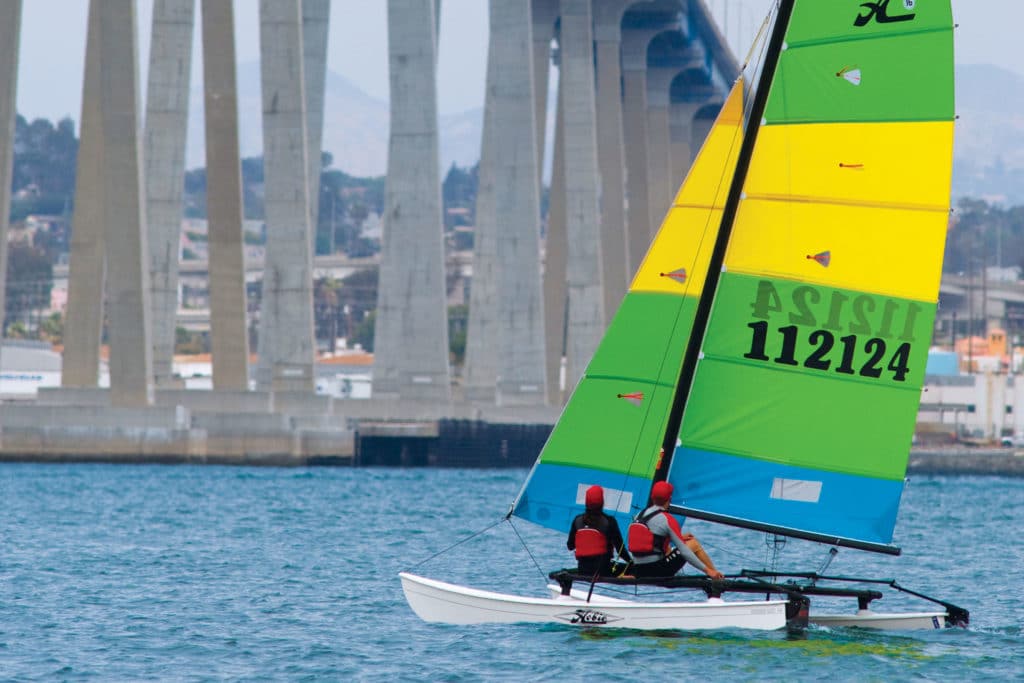
No roundup of best small sailboats (trailerable and fun too) would be complete without a mention of the venerable Hobie 16, which made its debut in Southern California way back in 1969. The company has introduced many other multihulls since, but more than 100,000 of the 16s have been launched, a remarkable figure. The Hobie’s asymmetric fiberglass-and-foam hulls eliminate the need for daggerboards, and with its kick-up rudders, the 16 can be sailed right up to the beach. Its large trampoline offers lots of space to move about or a good place to plant one’s feet when hanging off the double trapezes with a hull flying. The boat comes with a main and a jib; a spinnaker, douse kit, trailer, and beach dolly are optional features. hobiecat.com
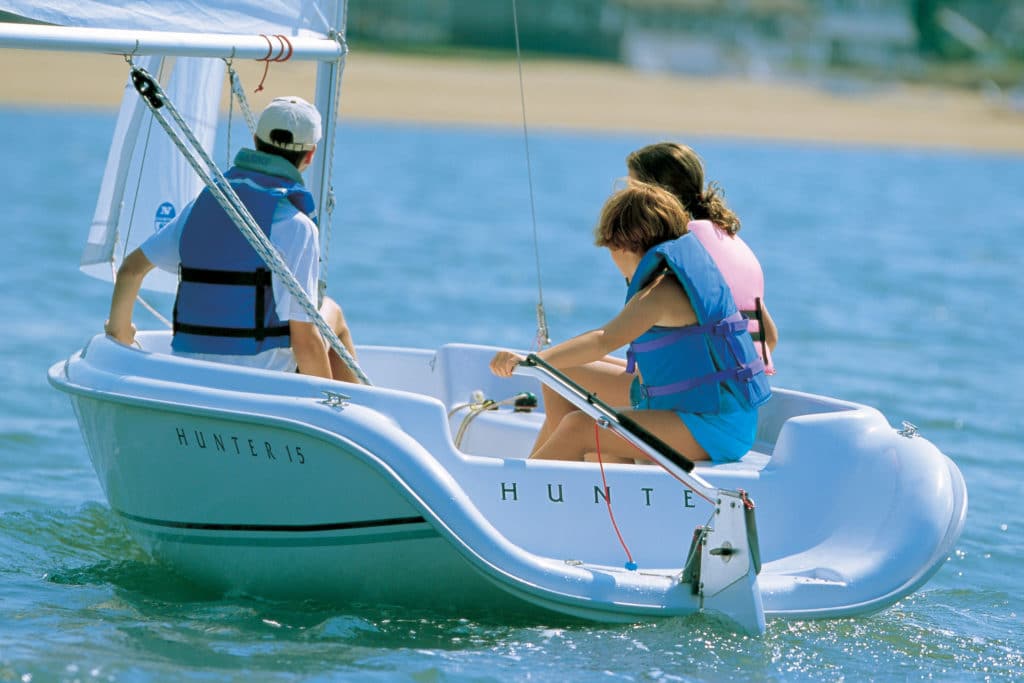
Novice sailors or old salts looking for simplicity could both enjoy sailing the Hunter 15. With a fiberglass hull and deck and foam flotation, the boat is sturdily built. The ample freeboard and wide beam provide stability under way, and the heavy-duty rubrail and kick-up rudder mean that you won’t have to worry when the dock looms or the going grows shallow. Both the 15 and its slightly larger 18-foot sibling come standard with roller-furling jibs.
$6,900/$9,500 (boat-show prices for the 15 and 18 includes trailers), (386) 462-3077, marlow-hunter.com
– CHECK THE FIT – Follow these guidelines to make sure your life jacket looks good, stays comfortable and works when you need it. Safety Tip Provided by the U.S. Coast Guard
Super Snark
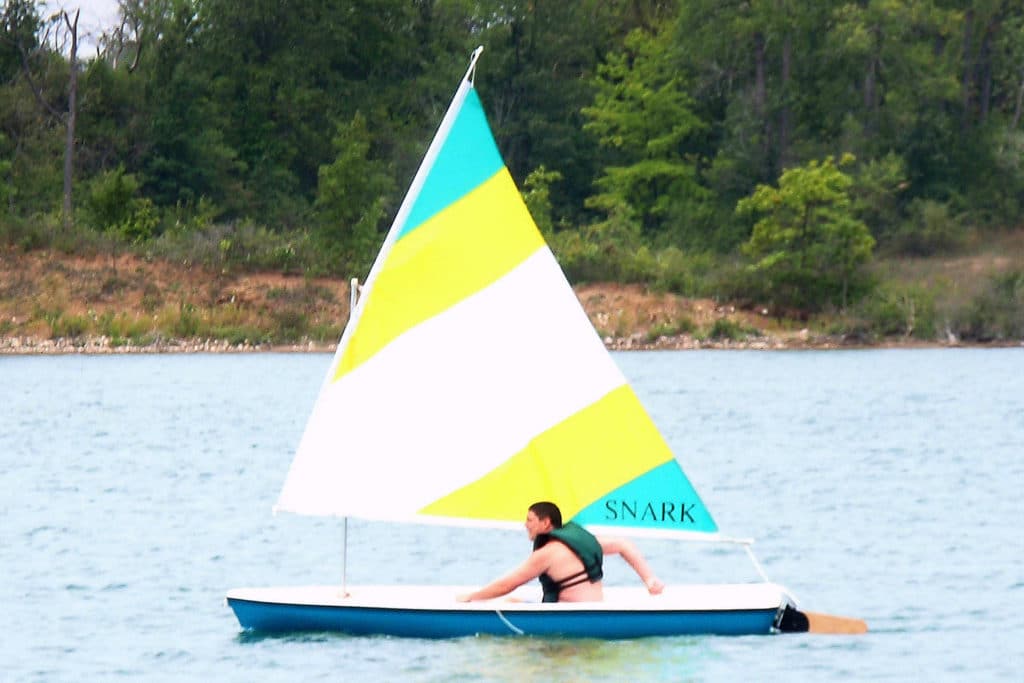
Under various owners, the Snark brand of sailboats, now built by Meyers Boat Co., has been around since the early 1970s. The Super Snark, at 11 feet, is a simple, easily car-topped daysailer that’s fit out with a lateen rig and sail. Billed as unsinkable, the five boats in the company’s line are built with E.P.S. foam, with the external hull and deck vacuum-formed to the core using an A.B.S. polymer. The Super Snark weighs in at 50 pounds, and with a payload capacity of 310 pounds, the boat can carry two.
$970, (800) 247-6275, meyersboat.com
Norseboat 21.5
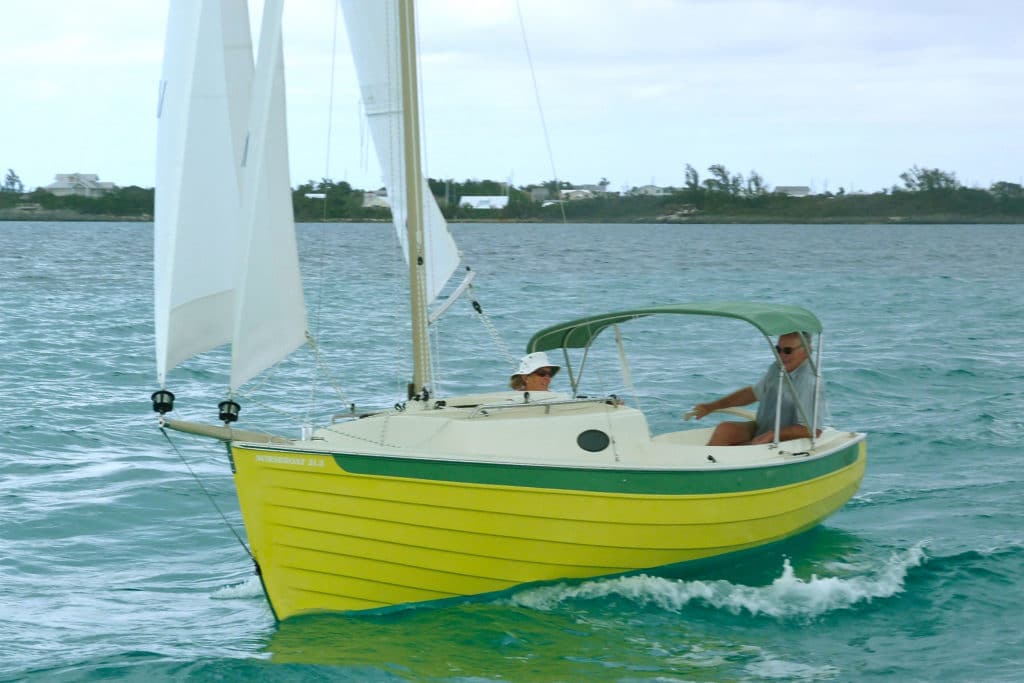
Built in Canada, the NorseBoat 21.5 is a rugged looking craft that comes in a couple of configurations: one with an open cockpit and small doghouse, and another with a smaller cockpit and cabin that houses a double berth for two adults and optional quarter berths for the kids. Both carry NorseBoat’s distinctive looking carbon fiber gaff-rigged mast with main and jib (a sprit-set drifter is optional), and come with a ballasted stub keel and centerboard. Because of its lightweight design, the boat can be rowed and is easily trailered.
$36,000 (starting), 902-659-2790, norseboat.com
Flying Scot
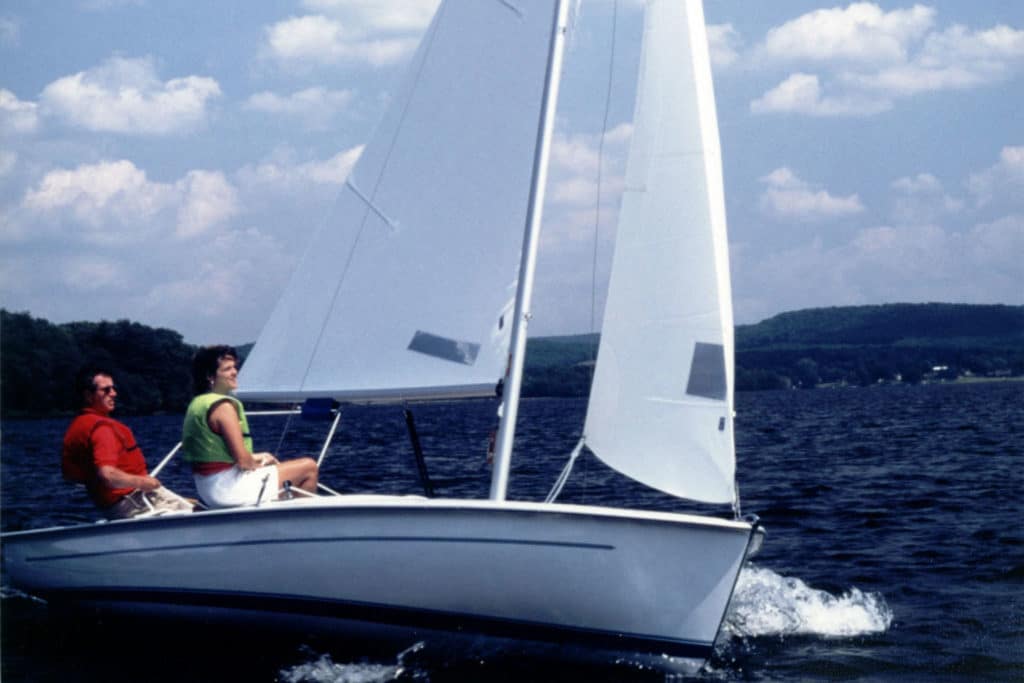
Talk about time-tested, the 19-foot Flying Scot has been in production since 1957 and remains a popular design today. Sloop rigged, with a conventional spinnaker for downwind work, the boat is an easily sailed family boat as well as a competitive racer, with over 130 racing fleets across the U.S. Its roomy cockpit can seat six to eight, though the boat is often sailed by a pair or solo. Hull and deck are a fiberglass and balsa core sandwich. With the centerboard up, the boat draws only eight inches. Though intended to be a daysailer, owners have rigged boom tents and berths for overnight trips, and one adventurous Scot sailor cruised his along inland waterways from Philadelphia to New Orleans.
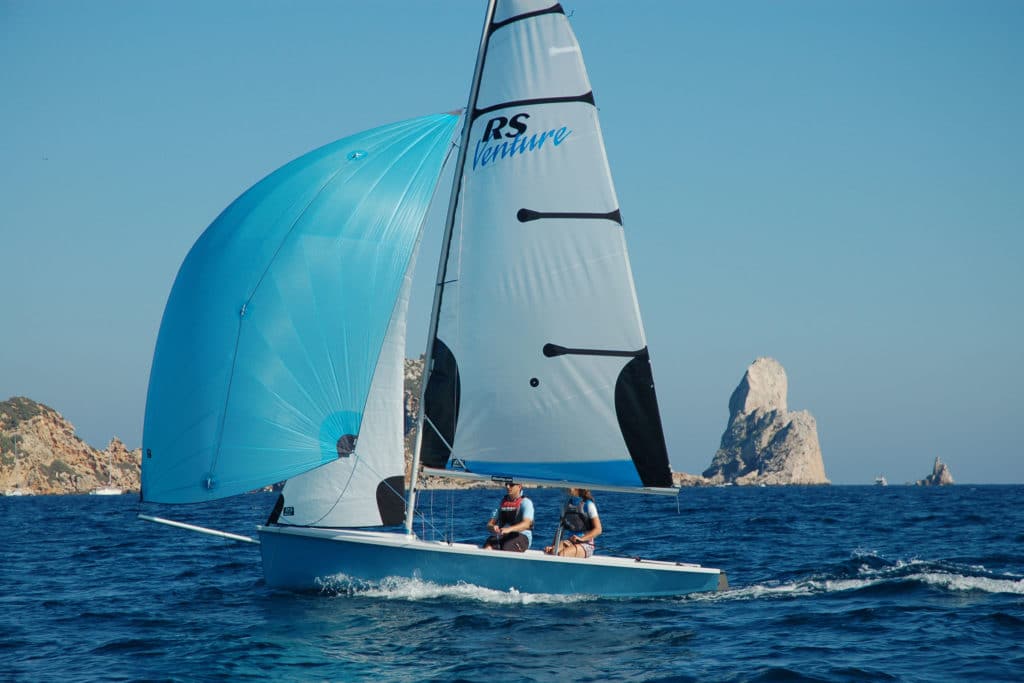
Known primarily for its line of racing dinghys, RS Sailing also builds the 16-foot, 4-inch Venture, which it describes as a cruising and training dinghy. The Venture features a large, self-draining cockpit that will accommodate a family or pack of kids. A furling jib and mainsail with slab reefing come standard with the boat; a gennaker and trapeze kit are options, as is an outboard motor mount and transom swim ladder. The deck and hull are laid up in a fiberglass and Coremat sandwich. The Venture’s designed to be both a good performer under sail, but also stable, making it a good boat for those learning the sport.
$14,900, 203-259-7808, rssailing.com
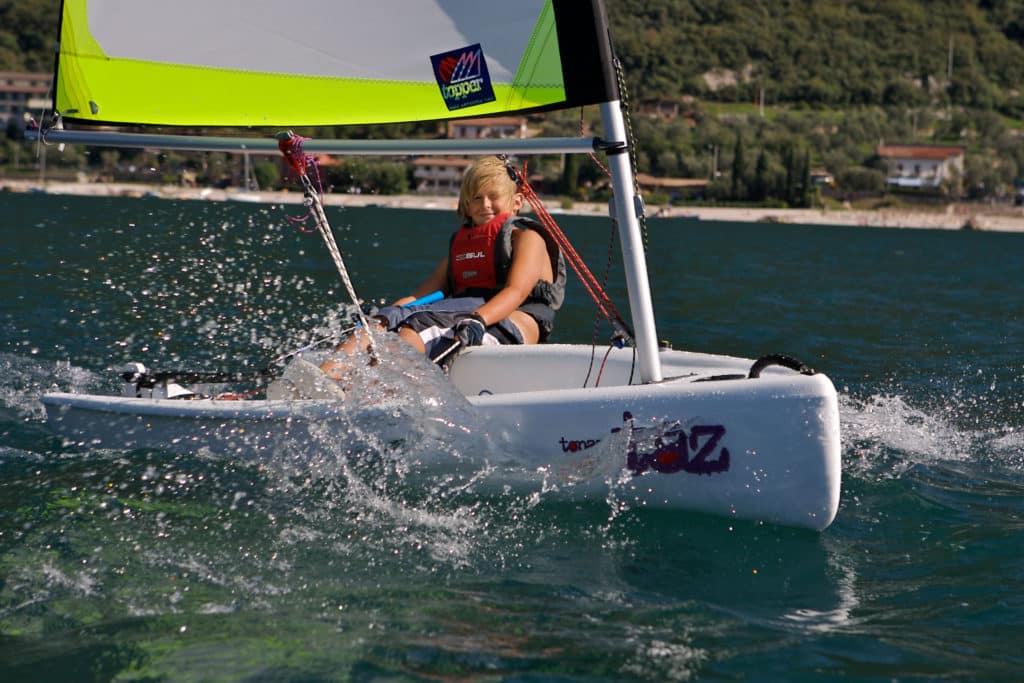
Topper makes a range of mono- and multihull rotomolded boats, but the model that caught one editor’s eye at Strictly Sail Chicago was the Topaz Taz. At 9 feet, 8 inches LOA and weighing in at 88 pounds, the Taz is not going to take the whole crowd out for the day. But, with the optional mainsail and jib package (main alone is for a single child), the Taz can carry two or three kids or an adult and one child, and would make a fun escape pod when tied behind the big boat and towed to some scenic harbor. The hull features Topper’s Trilam construction, a plastic and foam sandwich that creates a boat that’s stiff, light, and durable, and shouldn’t mind being dragged up on the beach when it’s time for a break.
$2,900 (includes main and jib), 410-286-1960, topazsailboats.com
WindRider WRTango
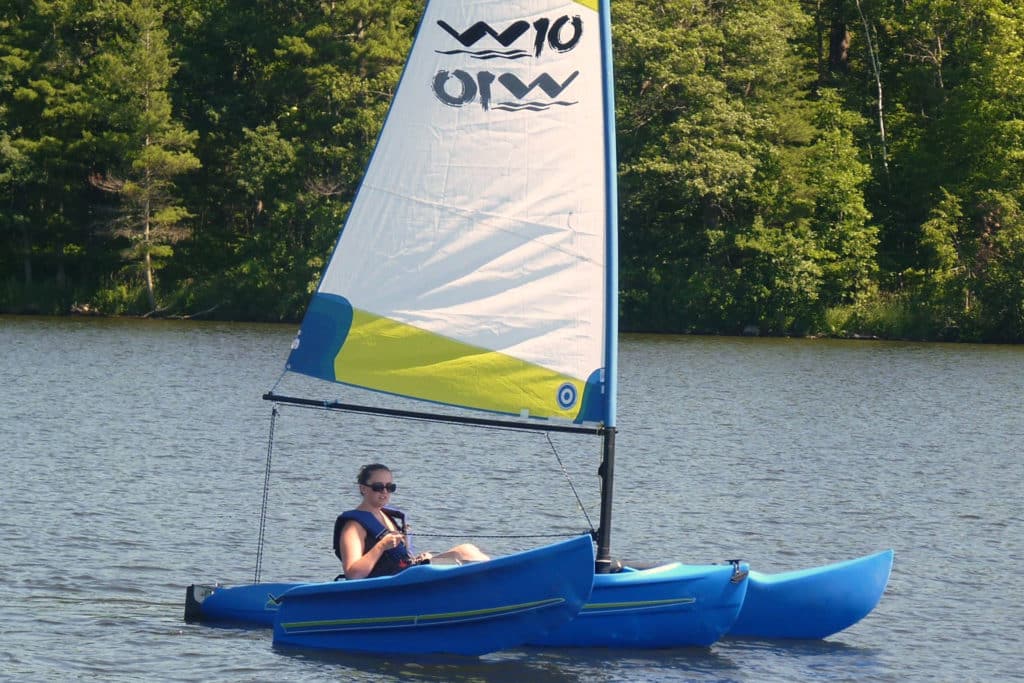
WRTango, a fast, sturdy, 10-foot trimaran that’s easy to sail, is the newest portable craft from WindRider International. It joins a line that includes the WR16 and WR17 trimarans. The Tango features forward-facing seating, foot-pedal steering, and a low center of gravity that mimics the sensation of sitting in a kayak. It weighs 125 pounds (including the outriggers and carbon-fiber mast), is extremely stable, and has single-sheet sail control. The six-inch draft and kick-up rudder make it great for beaching, while the hull and outriggers are made of rotomolded polyethylene, so it can withstand running into docks and being dragged over rocks.
$3,000, 612-338-2170, windrider.com
- More: 21 - 30 ft , Boat Gallery , day sailing , dinghy , Sailboat Reviews , Sailboats , under 20 ft
- More Sailboats

Pre-Owned: 1988 Hylas 47

Catalina Introduces the 6 Series

Sailboat Preview: Elan GT6 Explorer

For Sale: 1984 Camper & Nicholsons 58

Galápagos: A Paradise Worth the Paperwork

Around Alone

Grease the Wheels of Your Boat: A Guide to Proper Lubrication

A Bowsprit Reborn: A DIY Renovation Story
- Digital Edition
- Customer Service
- Privacy Policy
- Terms of Use
- Email Newsletters
- Cruising World
- Sailing World
- Salt Water Sportsman
- Sport Fishing
- Wakeboarding

The Different Types Of Sails And When To Use Them – Complete Guide

Sail forms an integral part of a sailboat. When you sail on the open water and observe other boats (in various sizes), you’d have noticed how each boat type has a specific model of sail. If you’re a beginner in boating, you must know that there are a ton of different sails and they each have their own purpose.
As a general setup, sailboats will use three common sails, including headsail, mainsail, and specialty sail. Due to the varying wind conditions and the model of the sailboat, there are many types of sails including jib, genoa, trysail, storm jib, code zero, gennaker, and spinnaker.
While that sounds like too many models of sails, you can easily differentiate between them and choose the ideal model based on your purpose. This article guides you on this aspect. Let’s begin!
Different Types of Sails & When To Use Them
1. mainsail.
Mainsail is by far the most widely spotted sail model, and it’s usually fixed to the boom and fitted behind the mast. This offers the highest mileage to your sailboat, thereby maximizing speed and performance.
You can use a mainsail if:
- You’re concerned about the performance
- You need to go faster and utilize all wind power
- You need to steer your boat irrespective of the wind’s status
- You’ve a large boat and can offer adequate space to this sail.
This mainsail displays a wide surface area to make the most out of the available wind condition. As a result, you can steer your boat quite easily. However, the downside is its size. It is very large and hard to store if you need to take it down for some reason.
Check out my other article all about maintaing sails!
2. Headsail
Similar to a mainsail, it’s very easy to spot a head sail. Just look at the bow of the boat and see if there is a sail. If you see one then yes that’s a headsail. Also called a jib or genoa, a headsail is smaller in size compared to a mainsail and attaches in front of the mast to the forestay. The Foresail will not have a boom for the clew of the sail to attach to. The clew will be attached to the foresails sheet. It can be used without the mainsail in certain conditions but for the most part the two sails are used together. The foresail is always forward of the main.
The headsail comes in many different forms such as a jib, genoa, spinnaker or storm jib. The most common headsail is a jib or genoa.
You can use a headsail if:
- Your sailboat is set up for it.
- You don’t want to use the mainsail at this time.
- Your mainsail is not usable.
The biggest advantage of a headsail is the option to protect yourself even if the wind turns unpredictable or wild. This all depends on the type of headsail you are using.
So, what are the different types of headsails? Let’s take a look!
As more boaters chose to use a headsail for their boats, the jib was introduced as one of its forms. The Jib is a form of headsail that is attached to a shackle present on the deck’s front region.
The Jib is a sail that does not go past the mast when it is raised and in use. If it goes past the mast then you probably have a genoa.
You can use a jib if:
- You are out for a normal day of sailing in moderate wind speeds
- You have a roller furling. Which is a sail that wraps up around itself.
Some weather conditions can make maneuvering harder or tighter than usual. As a result, it’s essential to use a jib in such cases. It functions well with boats containing a roller furling as the jib handles different positions and tackles the movement of the boat at ease.
2.2 Genoa
Just when you’ve got acquainted with the jib, genoa comes into the picture as a larger version of the jib. If you’re boating along a coastal region, the genoa sail is the one widely used and is attached to the front area of the deck as well.
Here’s a quick trick to find out if a boat has a genoa sail. This genoa is usually larger than a Jib. This means that the genoa effortlessly overlaps and extends itself beyond the mast, thereby covering the mainsail as well.
You should use a genoa sail if:
- You’re planning to sail in minimum wind conditions. Less wind means you need more sail.
- You find the wind to originate from the rear area.
- You own a large boat. Remember that genoa can partially or completely cover the mainsail too. Larger sails for larger boats!
While it’s great for sailing in regular conditions, there are downsides associated with it. A genoa can put you in a dangerous situation if you are sailing in high wind conditions and don’t have the ability to furl in the sail. Furling in the sail will reduce the area of the sail and catch less wind.
Genoas do come in many sizes as well such as 110% or 120%.
The next section of the sail list are ones that aren’t necessary but can be helpful in certain situations. Let’s look at specialty sails!
3. Specialty Sail
While headsails and mainsails are quite commonly used, there are also specialty sails in the market to address specific requirements. Some of the widely seen specialty sails are spinnakers, storm jibs, and code zeros.
3.1 Spinnakers
Spinnaker is a sail dedicated to downwind and is quite large. Think of a beautifully covered parachute.
It’s easy to spot spinnakers as they resemble kites or parachutes. However, it crosses the bow of the boat and isn’t attached to the forestay.
Unlike the genoa sail that covers the mast, a spinnaker fails to do so. The advantage of a spinnaker is the surface area. When the wind is light, the spinnaker can catch a lot more wind giving you more speed. The Spinnaker is usually fixed to three points – pole, halyard, and sheet.
You should use a spinnaker if:
- You have minimal wind on a run.
- You are trying to harness as much wind power as you can.
While it has a wide surface area, the downside is its inability to steer the boat during strong wind conditions. It can even put the passengers at risk when the wind is at high speeds.
Make sure you have experience before trying out the spinnaker.
3.2 Storm Jibs
Storm jib is another type of specialty sail meant exclusively for rough weather. It’s a tiny, triangular structure that helps during offshore racing or cruising. Just think of it as a smaller jib.
You should use a storm jib if:
- You’re going to sail in heavy weather conditions.
- You anticipate high wind speeds.
- You’re going to be in an offshore race and they are an approved sail type.
Note: In the case of an offshore racing requirement, it’s critical to take prior permission from the regulatory authority for using a storm jib.
3.3 Code Zeros
Code zero is another updated version of a spinnaker that’s meant to be a combination of genoa and gennaker sails. It resembles the look of a genoa but is a lot bigger.
You should use a code zero if:
- You’re looking for an overlapping flying headsail.
- You’re sailing only in light air conditions.
- You’re looking for an alternative to a Genoa.
Having said that, a code zero or a screecher does the job of a genoa with better efficiencies.
3.4 Trysail
Trysail is another type of specialty sail that’s tiny, triangular, and can be fixed right above a gooseneck on the sailboat.
The Trysail is less known in the market as most boaters go ahead with common mainsails and headsails. It’s essential to acknowledge trysail as a front-and-aft mainsail model. It offers excellent performance and contains a permanent pennant in it.
You should use a trysail if:
- You’re sailing in heavy weather conditions.
- You’re looking for a storm replacement.
- You are experienced with using them.
The quadrilateral sail in a trysail is usually turned and bent to a mast, and this helps in heading the vessel during windy conditions.
3.5 Gennakers
If you’ve been able to spot genoa and spinnaker in the past, identifying a gennaker is incredibly easy. A gennaker is a hybrid sail form that is small, slow, and requires no pole attached to the mast.
You should use a gennaker if:
- You’re looking for a smaller version of a spinnaker.
- You’ve no space to fix a pole to the mast.
- You require the sail to be easily manageable.
- You’re sailing in a region requiring minimum downwind levels.
Choosing a hybrid sail has a lot of benefits as it combines the usefulness of 2 sail models. However, being aware of their cons is critical to planning a safe sail.
As you begin using these sails, you can also look for better customizations. There are drifters, wind seekers, and other jib types that are meant to handle different wind conditions.
How Many Sails On A Sailboat ?
In general, a sailboat contains two sails. Two sails is the typical setup for the best performance of the boat during different wind conditions. It’s essential to pick your two sails based on your sailing plan.
Why Are There Two Sails On A Sailboat?
A sailboat uses two sails because the wind left over by the first sail is easily caught by the second sail. This helps in steering the sailboat to a better extent and gives the sailboat more power.
Final Thoughts
Sails are one of the major assets of a sailboat. From managing wind to maximizing the performance and longevity of a sailboat, the type of sails you use, plays a huge role. From the various sail types listed in this article, you can choose the best model that fits your sailing routine. Just make sure to remember to check and make sure they are the correct size for your vessel.
Make sure to plan ahead and have the right sails for your sailing weekend. Cheers!
Boatlifehq owner and author/editor of this article.
Recent Posts
How to Repair a Sailboat Hull: Step-by-Step Guide
Maintaining your sailboat's hull is crucial for ensuring its longevity and performance on the water. Hull damage can occur due to various reasons, such as collisions, grounding, or general wear and...
10 Steps For Anchoring Your Sailboat
Anchoring a sailboat is a fundamental skill every sailor must master. Proper anchoring ensures your boat remains secure, preventing it from drifting and potentially causing damage. Whether you're...
- 857-208-7772 (weekdays | 8am-4pm EST)
- International
- België/Belgique
- Deutschland
- United Kingdom
Small sailboat
Your sailboat fits in your car.
The Tiwal 3 small inflatable sailboat stows in the trunk of your car. It will take you on an ocean of nautical adventures. The weekend promises to be sunny and you’re dreaming of a trip on the water? Are you vacationing by the sea and looking forward to tacking in that windy bay? Your dinghy is in the trunk of your car, so it’s okay, we’ll get you out on the water!
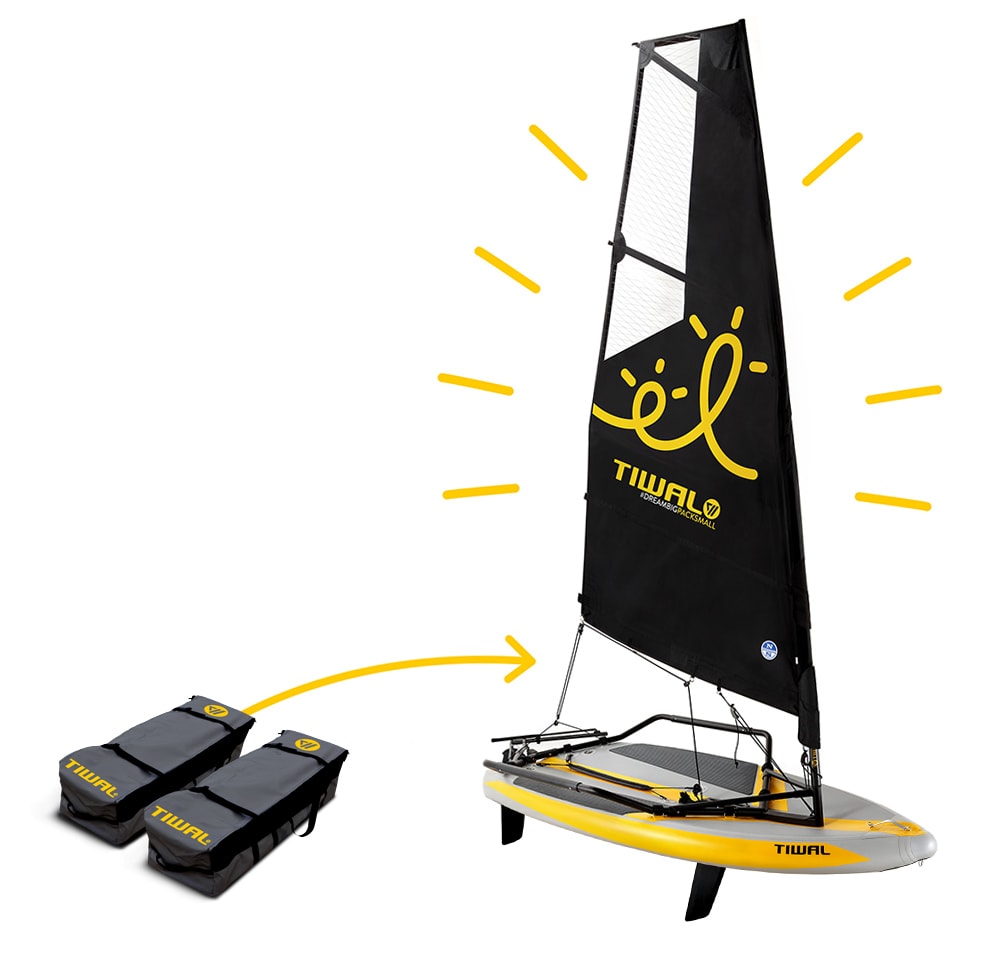
Easily transportable, your boat fits in 2 bags, with an all-up weight of 110 lbs.
Max. load onboard: 2 adults, or 1 adult + 2 kids
20 minutes…
To assemble your Tiwal 3.
440 lbs onboard
Max. load onboard: 2 adults, or 1 adult + 2 kids.
To assemble your Tiwal 3!
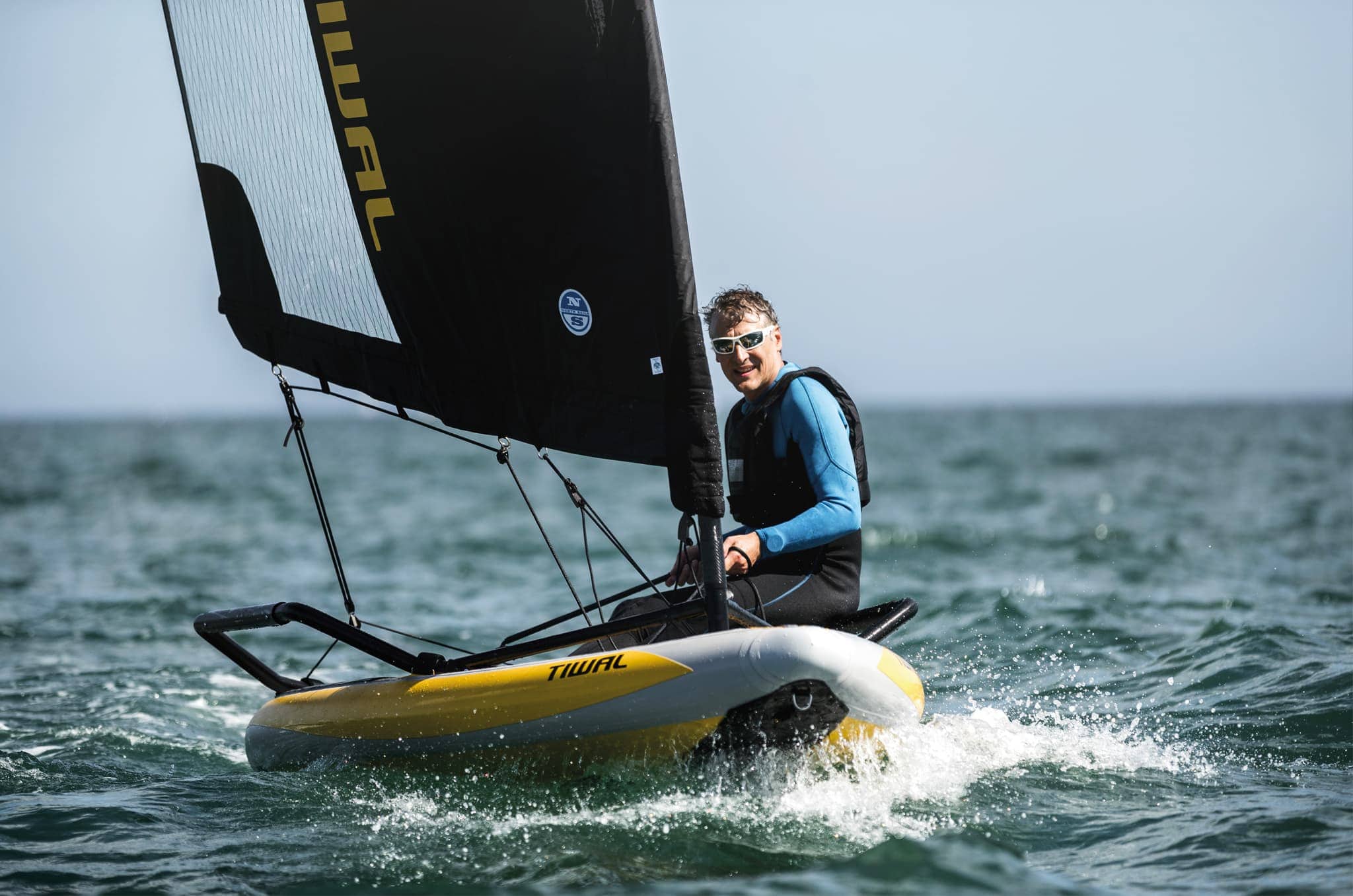
Helm a real small sailboat
The Tiwal 3 is easy to handle and is designed for enjoyment by children and adults sailors alike. Versatile, it is in its element in salt or fresh water and can be sailed in all windspeeds, by a solo sailor or double handed.
Comfortable and secure for beginners to practice on, it is a lively and fast monohull for more seasoned sailors seeking sensations and adventure.
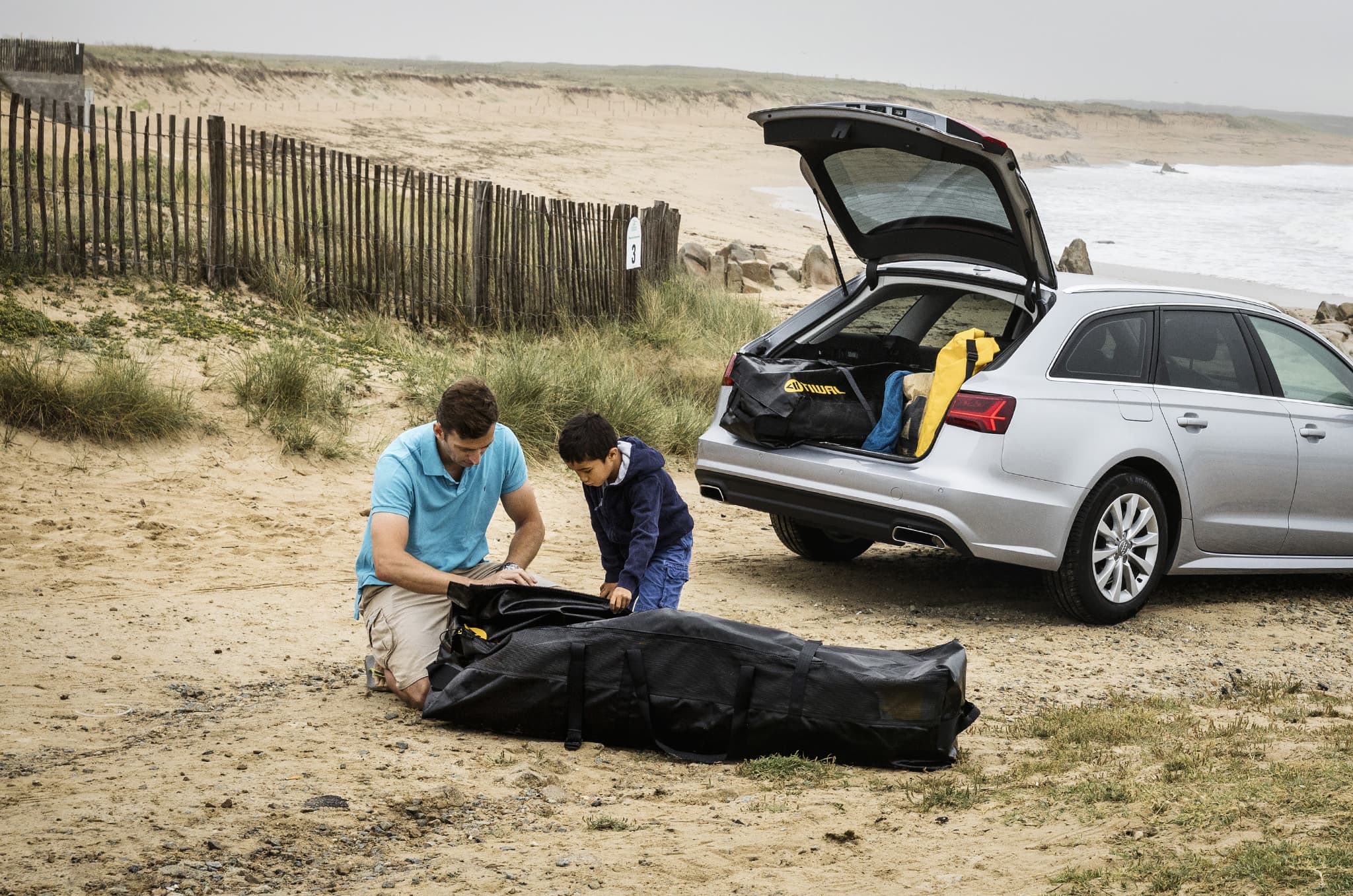
A compact daysailer easily transported
In the trunk of a car or camper van, on the plane, the deck of a yacht or towed behind a bike. Stored in its 2 bags, you can take the ten and a half foot dinghy anywhere, without a trailer, for an evening trip after work or during your holidays!
When not in use, it is discreet, can be tidied away in a closet or (small) corner of the garage.
- Structure Mast Sail & blocks Braided lines Daggerboard Rudder Manual pump Electric pump
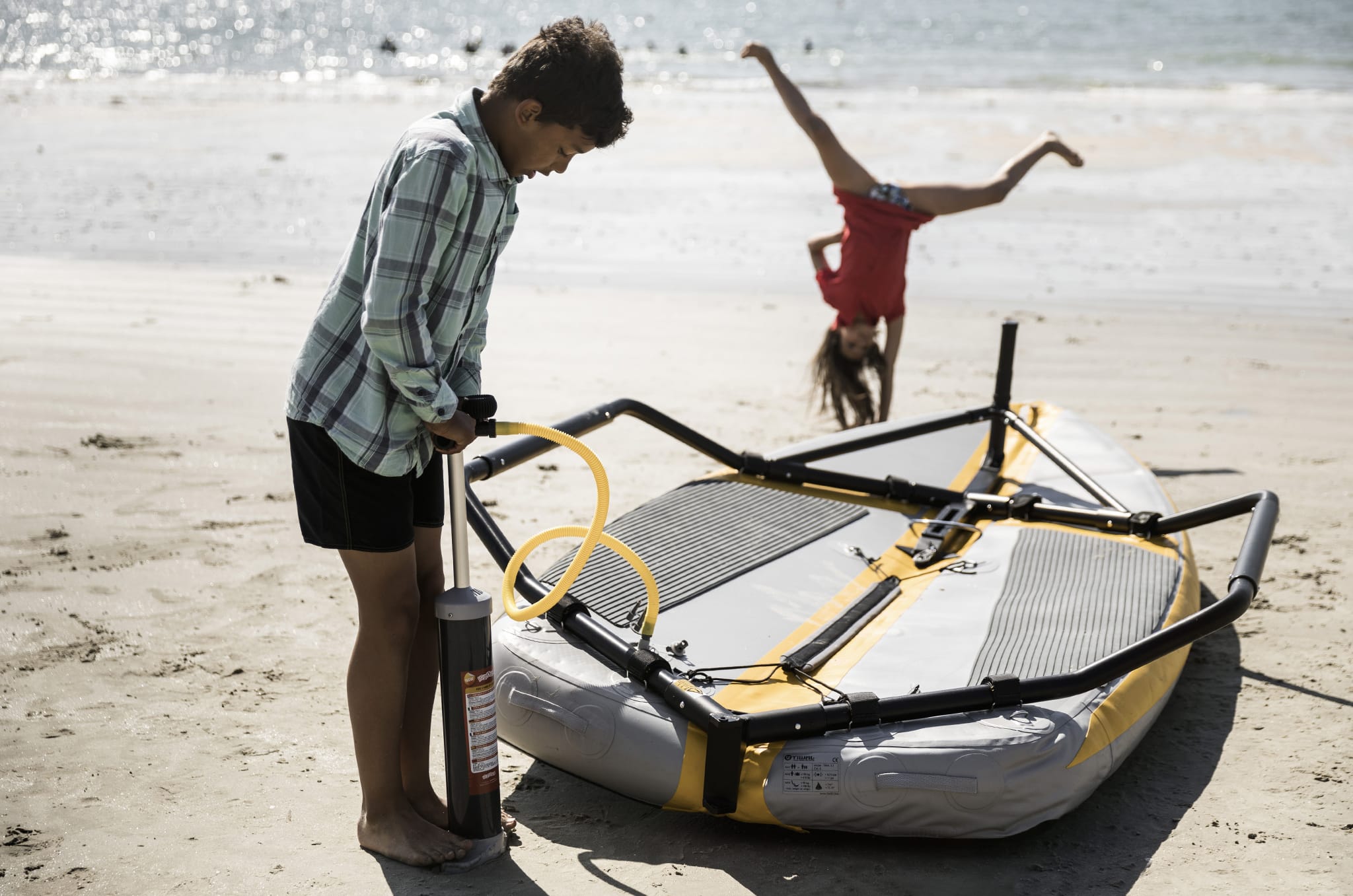
Intuitive and fast to assemble
Tiwal 3 in action.
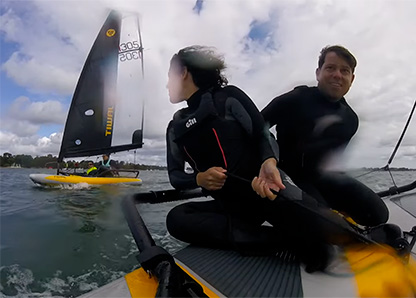
Double handed sailing
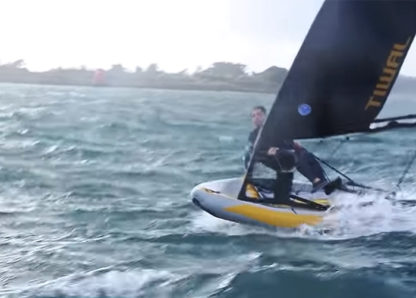
Speed, Sail and Surf
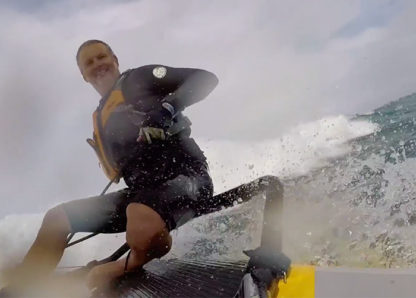
Tiwal 3 Surfing in Hawaii
Watch the video
Tiwal 3 surfing in Hawaii

A boat that’s 100% fun
The Tiwal 3 brings new ergonomics to sailing dinghies with its inflatable hull (but rigid when under way), its clear deck, simplified controls and finally a boomless sail. The result? Maximum fun for playing with the wind and water. It even has optional foam protectors on the wings for even more comfort when hiking out. It makes both single and double-handed sailing easy and enjoyable.

Innovative concept and premium manufacturing
Cutting edge materials, a rig reduced to the absolute minimum and a good touch of daring!
The Tiwal 3 small sailboat is a revolution in the world of dinghy sailing and is the result of serious engineering and realization.
The frequently rewarded combination of an inflatable hull with an aluminum structure enables the Tiwal 3 to have exceptional rigidity.
With over 2,000 boats sold, the Tiwal 3 dinghy is a tried and tested boat, made in France according to industry standards.
Learn more about how it is made!
Technical specs
Mast : carbon C50 16′ 1” – 5 parts
Framework : anodized aluminum
Hull length: 10' 6"
Sail: North Sails Dacron (Dacron, and Monofilm depending on the model)
Blocks : Harken
Boat weight (empty) : 110 lbs
Max load on wings: 1 adult / 242 lbs
Draft : 2' 5"
2 carrying bags : 4′9″ × 16″ × 14″ / 62 lbs each
Tiwal 3 sails
Sail in all weathers
The 75 ft² sail is a powerful mainsail, suitable for one or two adults out in a light to moderate breeze.
The 56 ft² sail is very versatile. It works well for adults sailing in a good breeze, and for the kids in lighter wind conditions.
Lastly, the reefable 75/56 ft² sail is an all-weather mainsail, whose area can be adapted to suit the wind strength. If the weather changes, you just need to make a quick stop on the beach to make your optimal sail area.
Units sailing
Press review

Bear Grylls 2014 – Boat International

“We were impressed by the ingenuity of the concept and the quality of the materials used, not to mention the adjustable sail, which adapts to the wind.” Read more…
Ritta Orrell 2018 - Forbes

Craig Ligibel 2018 - SpinSheet
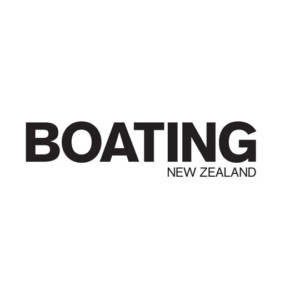
Sarah Ell 2017 - Boating New Zealand
Press reviews
Customer reviews

We pay particular attention to the construction standards of our boats. Each manufacturing stage is carefully checked here in our workshops and at our suppliers. We take great pride in the quality of our boats. That’s why all our parts are guaranteed for 3 years in private use. More details
Discover our other models

10 Best Sailboat Brands (And Why)

Last Updated by
Daniel Wade
December 20, 2023
There's no denying that sailors are certainly a passionate bunch. We’re so passionate about our boats that we always try going for the best sailboats. To make it a lot easier for you, here are the best sailboat brands.
Owning a sailboat is an indulgence that many of us only dream about but very few ever have the privilege of sailing the seas in what they can actually call their own.
While there's nothing wrong with renting a sailboat, the honor of owning one is certain what many sailors dream of.
With a perfectly crafted sailboat as company, gliding through the water, waves, and wind brings some sort of unmatched comfort and peace.
Add this to the fact that sailing takes you far away from the daily hustles and bustles that we've become accustomed to in our daily lives and you'll see why the life of sailing is very appealing to the masses.
But without a proper sailboat, all this fun and the good life of sailing are thrown out of the window.
Contrary to the widespread opinion, owning a sailboat isn't beyond anyone's reach. It's something that we can all achieve. But before getting into that, it's important to know some of the best sailboat brands.
The best sailboat brands will make your life as a sailor a lot easier and more fun. The best sailboat brands have, for decades if not centuries, mastered the art of woodworking. They've dedicated their skills and immense amount of their time to designing and manufacturing nothing but the best quality of sailboats in the industry.
So if you've been looking for the best sailboat brands from all over the world, you've come to the right place. We'll discuss the best of the best, something that will give you a perfect getaway from your normal life.
Table of contents
Must-Have Features for Your Sailboat
Before highlighting the best sailboat brands, it would be appropriate to jog your mind a little with some of the features that must be available in your sailboat.
Choosing a sailboat can sometimes be a matter of compromises. In other words, it's sometimes sensible to accept that a sailboat cannot have all the features that you desire.
As such, it's all about going with a sailboat that has the features that matter to you most.
For this reason, let's look at the most basic features that can make the difference in both safety and comfort while improving your sailing experience.
A Safe and Comfortable Sailing Cockpit
You'll most definitely be spending a huge amount of time in the cockpit. Whether you're keeping watch, trimming sails , helming, or just enjoying the scenery, there's no better place to do all these than from the cockpit. That being said, a good cockpit should have the following.
- Have a good depth for safety reasons and adequate drainage
- Should give you a quick and easy access to jammers, cleats, and other important parts of the winch system
- Should have a seat or seats that are about 35 cm high, 50 to 55 cm wide to provide ideal support
- The seats should be adjustable to offer maximum comfort and allow you to change your position
GPS Chartplotter
Use a GPS Chartplotter once and your sailing will never be the same without it. It not only allows you to map a course but is also a great way of ensuring that your sailboat exactly follows that course. It also gives you constant updates on ocean conditions, weather conditions , and potential hazards such as deadly currents and sandbars.
A GPS Chartplotter is also an important safety device that can help you in some very critical situations while out there on the water.
For instance, it has a man-overboard button that is essentially meant to allow you to receive coordinates of the exact location should someone fall off your boat.
Electric Winch System
This is an amazing addition to any sailboat. It allows you to sheet a jib even in high and strong winds with a simple press of a button. It also gives you the chance of trimming a mainsail easily while still carry out other essential tasks in the sailboat.
An electric winch system can be of great importance, especially if you're short on crew. This is because it can free up some crew members to carry other important tasks. In other words, it can make duties that would otherwise require more crew members a lot easier.
More importantly, an electric winch system can maintain safety even in the roughest of conditions, thereby preventing you and your crew from getting injured. In essence, an electric winch system will make your sailing a lot safer, less stressful, and more enjoyable.
Reverse Osmosis Watermaker
This is a very valuable accessory, especially if you're going on long sea voyages. You can spend days on end without drinking clean and safe water.
As the name suggests, you can use this accessory to turn seawater into purified drinking water. It uses the reverse osmosis method that's essential not only in removing bacteria and parasites from the water but also in turning the water into purified and safe drinking water.
Even though this device is pricey, it's a great way to mitigate the over-reliance on huge water tanks. All you have to do is to ensure that it's properly maintained and you'll have an endless streak of safe drinking water no matter where you are.
Wide and Clutter-free Deck
While the deck is often an overlooked feature of a sailboat, it can be the difference between a great sailing experience and a stressful one. In essence, the deck of a sailboat should be wide enough and clutter-free.
This is significant as it can enable you to quickly access different parts of your sailboat with hindrance or getting tangled. As you can see, this is particularly important in improving safety and reducing stress.
With that in mind, make sure that the deck is organized in such a way that you can have easy access to sails, masts, and winches.
You should, therefore, avoid sailboats with decks that are designed in such a way that you have to climb on top of the cabin just to access these features. Needless to say, this can be quite unstable and very dangerous especially when conditions are rough.
The Best Sailboat Brands and Why
1. hallberg-rassy.
Hallberg-Rassy is a Swedish yacht maker that's very well-known in the blue water cruising circles for making some of the highest quality and sturdiest sailboats. For many sailors, this is the number one sailboat brand as it offers absolute comfort, utmost safety, and good and easy handling.
This brand is not only synonymous with sturdy construction but you won't worry getting soaking wet while out there on the water. This is because it has a well-protected deck and cockpit, finished with nice woodwork, and has a powerful engine with a big tankage just to ensure that you can go on long voyages.
When designing its sailboats, this brand has made it a norm to add some features that stand out from the rest. For instance, the bowsprit is an integral feature that makes sailing a Hallberg-Rassy quite easy and much enjoyable. This is because it grants easy access to and from the deck. Its electric anchor winches facilitate smooth maneuvering. Even more, its large steering wheels makes it much easier to control the boat even in the roughest of conditions. In essence, this brand has features that provide good control and an extra sense of safety.
Although this brand has evolved over the years, you'll easily recognize it even from a distance. And why is this? A Hallberg-Rassy never goes out of style. This is a unique sailboat brand that has always stayed true to its principles and concept. No matter which part of the world you go, Hallberg-Rassy will remain the undisputed king of blue water cruising.
2. Nautor's Swan
For over 50 years, Nautor's Swan has endlessly raised the sailing levels by designing and manufacturing new sailboat models that not only push the boundaries but also meet that many requirements and demands of sailors across the world. Thanks to its wide range of seaworthy, timeless, elegant, and highly-performing sailboats, the Nautor's Swan remains one of the best if not the best sailboat makers in the world.
Based in Jakobstad, Finland, this brand has severally set the industry standard with its speedy and sleek models such as the Swan 48, Swan 65, Swan 98, Swan 78, and Swan 120. These models have one thing in common: they never compromise on safety. As a brand that puts safety first, it ensures that its models are made of foam-cored glass fiber and reinforced both with carbon-fiber and epoxy. In essence, Nautor's Swan is widely revered for its unmatched seafaring and safety records.
Additionally, Nautor's Swan models are incredibly responsive. You can easily tell this just by the feel of the wheel. This brand has models that will gracefully slice through the biggest of waves with ease. That's not all; the interior of these models that are very comfortable even when the going gets tough. This is, without a doubt, a brand that strives to create self-contained worlds with each model.
3. Beneteau
This is perhaps the most selling sailboat brand in the world. For over a century now, this brand has based its models in a combination of simplicity and performance. This is a brand that will serve you just right across all latitudes and in all circumstances. Whether you prefer the Oceanis Yacht 62 or the Figaro Beneteau 3, this brand will never let you down on all fronts.
This brand revolves around a simple concept of creating a link around the world. From the deck space to its design and light, this brand does everything possible not just to uniformly transform life at sea but also to open doors to new horizons in a very luxurious yet practical way. Its models are designed with clear deck plans, stable hulls, simplified maneuvering and interior materials and equipment that can be easily personalized.
Whether you're looking for a racing sailboat or something that's designed to explore and enjoy the world in the company of friends and family, Beneteau is a true combination of sensations and simplicity. This is a brand that brings to the seas fun, simplicity, smartness, toughness, safety, intuitiveness, as well as dazzling reinvention.
4. Amel Yachts
Based on the ethos of designing and manufacturing comfortable, robust, and easy-to-handle boats, this French brand has, for over five decades, offered sailors and other sailing enthusiasts the perfect opportunity to explore the seas with the utmost quality, comfort, and more importantly, safety.
Using 100% French know-how, this brand has brought to the sailing world some of the best boats such as the Santorini, the Mango, the Super Maramu, and the Maramu. We would be doing this brand total injustice if we said that they're distinctive. Truth be told, there's nothing comparable to an Amel model. Well Amel was and still is, the ultimate standard by which other sailboat models are measured.
From items such as electric winches and furling, to generators, Watermaker , and washing machine down to the simplest of items such as towels. Spare filters, bathrobes, deck brush, and a boat safe, the Amel is in reality with what the real life of a sailor is and should be.
Although some may say that Amel still has room for improvement in terms of specifications and personalization, it cannot be denied that the Amel is a serious brand that designs and manufactures complete boats. With this brand, you'll be guaranteed of a higher degree of reliability, safety, and an edge of fun while out there on the water.
5. Hinckley Yachts
Based in Maine, United States, Hinckley Yachts is a brand that has been building robust, luxury, and safe sailboats for more than 90 years now. In its sailboat class, you'll find several sailboats that have classic shapes, inner strength, dramatic lines, and features that are absolutely essential in dealing with the challenges of the North Atlantic.
This brand has been successful in integrating impeccable craftsmanship with new technologies to ensure that their models always stand out while articulating advanced sailing practices, timeless aesthetic, robust construction, and the utmost safety. Whether you choose the Bermuda 50, the Sou'wester 53 or any model for that matter, you'll never be short of advanced performance based on the best design and technology.
In terms of features, this brand provides sailboat models with modern performance hulls. These hulls are constructed with inner layers of carbon, outer layers of Kevlar, and are aligned with computer-designed load paths. Every feature is designed without compromising comfort.
To this end, this brand offers you a perfect combination of both fun and sail. This brand offers more than just sailing. Instead, it offers a unique sailing experience that's combined with the pure joys of sailing in the blue waters with an ease of ownership and maneuverability.
6. Oyster Yachts
If you've been looking for luxury more than anything else, Oyster Yachts provides you with numerous solutions. This British brand is widely known for manufacturing a wide range of luxury cruising sailing yachts. Its sailboats are among the finest in the world and are immensely capable of taking you to some of the far-flung places in the world without having to worry about high winds and hellish waves.
Whether you choose the iconic Oyster 565 or the immense Oyster 595 you never fall short of experiencing the new world like never before. These are models that will enable you to own your adventure, choose your destination, set your courses, pick your anchorage, and stay safe at all times. If you want to hold the wheel and pull the sail while feeling the tang of salt spray on your face, Oyster Yachts is the way to go.
This is, unquestionably, a brand that's meant for you if you want to explore the seas in comfort, luxury and utmost safety. From craftsmanship, sailboat design, to hull, deck, and keel configurations, everything is designed to allow you to circumnavigate the world in comfort, elegance, and style.
7. Tartan Yachts
Based in Fairport Harbor, Ohio, there's arguably no better to begin your sailing adventures than with a sailboat designed and manufactured by Tartan Yachts. With several award-winning designs and construction, this brand is widely known for providing easy handling, great performance, and an ultimately stable platform.
This brand always strives to deliver a unique and the best possible experience to every sailor. As a brand, Tartan fully understands that every sailor has his/her unique sailing needs. As such every component of their models is designed with engineering levels that guarantee optimum performance, excellent on-deck visibility, and luxurious interior.
From the Tartan 5300, the Tartan 4300, the Tartan 345 to the New 365 and the Fantail, this brand makes it a priority to ensure that its models are among the strongest, lightest, and more importantly, the safest in the sailing industry. In essence, this brand can be ideal if you appreciate performance. It has rewarding sailing features both in narrow water lines and wider passages. Add this to its easy handling and you'll have a top-notch performer in virtually every condition.
8. Catalina Yachts
As one of the most popular boat manufacturers in the world, this American brand is widely revered for building the sturdiest boats that can hold up perfectly well in real-world conditions. These are generally family-oriented boats that are intelligently designed to ensure that your entire family can have fun out there on the water.
Some of the models include the cruiser series such as the Catalina 315, the Catalina 385, the Catalina 425 while the sport series include the Catalina 12.5 Expo, the Catalina 16.5, and the Catalina 14.2 Expo. As the current winner of the "Boat of the Year" Cruising World, you'll rarely go wrong with a Catalina model.
It offers a wide range of sailboat sizes that suits your lifestyle. This brand makes it a priority to ensure that all their models are not only safe but offer the best ownership and sailing experience. If anything, this brand is widely known to have one of the most excellent resale values in the sailing industry.
9. Island Packet Yachts
From the IP 525, the IP 439 to the IP 379, the Island Packet Yachts is a brand that encourages its customers not to keep the world waiting. This brand is meant for sailors who want to explore the world in utmost comfort and safety.
The first thing you'll notice in an IP sailboat is its large aft deck. This is not only perfect for sunbathing but can also serve you well if you want an impromptu dinner with friends and family while out there on the water. The living space is also large enough to carry most of your belongings, which is an added advantage especially if you've been planning to spend longer periods in the seas.
With modern evolution and refinement, as well as proven features, this brand is known to offer sailors maximum comfort, luxury, and safety. You'll have better access to the cockpit, have enough space, and are excellently designed to provide superior seafaring and the best features to enable you to spend extended periods when cruising.
10. Sparkman & Stephens
For more than 90 years, Sparkman & Stephens has been at the forefront of the belief that sailboat excellence goes beyond hull lines and deck plans. Instead, this brand believes in excellent naval architecture, innovation, sophistication, and beauty. This is a brand that has laid the foundation of sailboat as a sport not just in America but all over the world.
These models have graced the world for decades and bring immense pleasure to their owners in terms of innovation, performance, and excellence. Though rooted in tradition, the brand has pushed sophistication, technology, and sailing experience to a whole new level. You'll be a proud owner of the Sparkman & Stephens model.
There you have it; these are the best sailboat brands in the world. Although there are several other sailboat brands to choose from, the-above described brands stand shoulder above others in terms of quality, safety, performances and luxury.
Hopefully, you're at a much better place when it comes to choosing a sailboat that suits your lifestyle, needs, and budget .
Happy sailing!
Related Articles
10 Best Sailboats To Live In
Common Issues With Hallberg-Rassy Sailboats
Common Issues With Catalina Yacht Sailboats
Common Issues With Island Packet Yacht Sailboats
I've personally had thousands of questions about sailing and sailboats over the years. As I learn and experience sailing, and the community, I share the answers that work and make sense to me, here on Life of Sailing.
by this author
Best Sailboats

Most Recent

What Does "Sailing By The Lee" Mean?
October 3, 2023

The Best Sailing Schools And Programs: Reviews & Ratings
September 26, 2023
Important Legal Info
Lifeofsailing.com is a participant in the Amazon Services LLC Associates Program, an affiliate advertising program designed to provide a means for sites to earn advertising fees by advertising and linking to Amazon. This site also participates in other affiliate programs and is compensated for referring traffic and business to these companies.
Similar Posts

Affordable Sailboats You Can Build at Home
September 13, 2023

Best Small Sailboats With Standing Headroom
December 28, 2023

Best Bluewater Sailboats Under $50K
Popular posts.


Best Liveaboard Catamaran Sailboats

Can a Novice Sail Around the World?
Elizabeth O'Malley
June 15, 2022

4 Best Electric Outboard Motors

How Long Did It Take The Vikings To Sail To England?

7 Best Places To Liveaboard A Sailboat

9 Best Trailerable Sailboats
Get the best sailing content.
Top Rated Posts
© 2024 Life of Sailing Email: [email protected] Address: 11816 Inwood Rd #3024 Dallas, TX 75244 Disclaimer Privacy Policy
Guide to Understanding Sail Rig Types (with Pictures)
There are a lot of different sail rig types and it can be difficult to remember what's what. So I've come up with a system. Let me explain it in this article.
What are the different types of sail rig? The sail rig is determined by the number of masts and the layout and shape of sails. Most modern ships are fore-and-aft rigged, while old ships are square-rigged. Rigs with one mast are sloops and cutters. Ketches, yawls, brigs, and schooners have two masts. Barques have three masts. Rigs can contain up to seven masts.
'Yeah, that's a gaff brig, and that a Bermuda cutter' - If you don't know what this means (neither did I) and want to know what to call a two-masted ship with a square-rigged mainsail, this article is definitely for you.
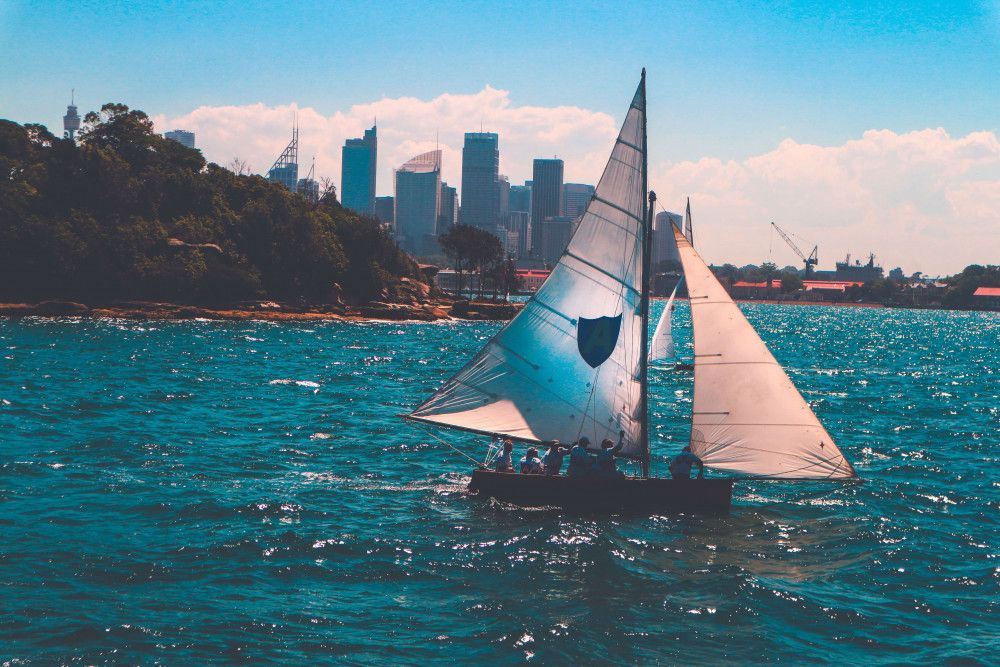
On this page:
More info on sail rig types, mast configurations and rig types, rigs with one mast, rigs with two masts, rigs with three masts, related questions.
This article is part 2 of my series on sails and rig types. Part 1 is all about the different types of sails. If you want to know everything there is to know about sails once and for all, I really recommend you read it. It gives a good overview of sail types and is easy to understand.
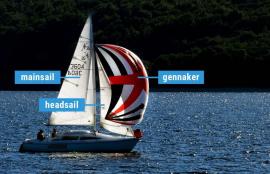
The Ultimate Guide to Sail Types and Rigs (with Pictures)
First of all, what is a sail rig? A sail rig is the way in which the sails are attached to the mast(s). In other words, it's the setup or configuration of the sailboat. The rig consists of the sail and mast hardware. The sail rig and sail type are both part of the sail plan. We usually use the sail rig type to refer to the type of boat.
Let's start by taking a look at the most commonly used modern sail rigs. Don't worry if you don't exactly understand what's going on. At the end of this article, you'll understand everything about rig types.
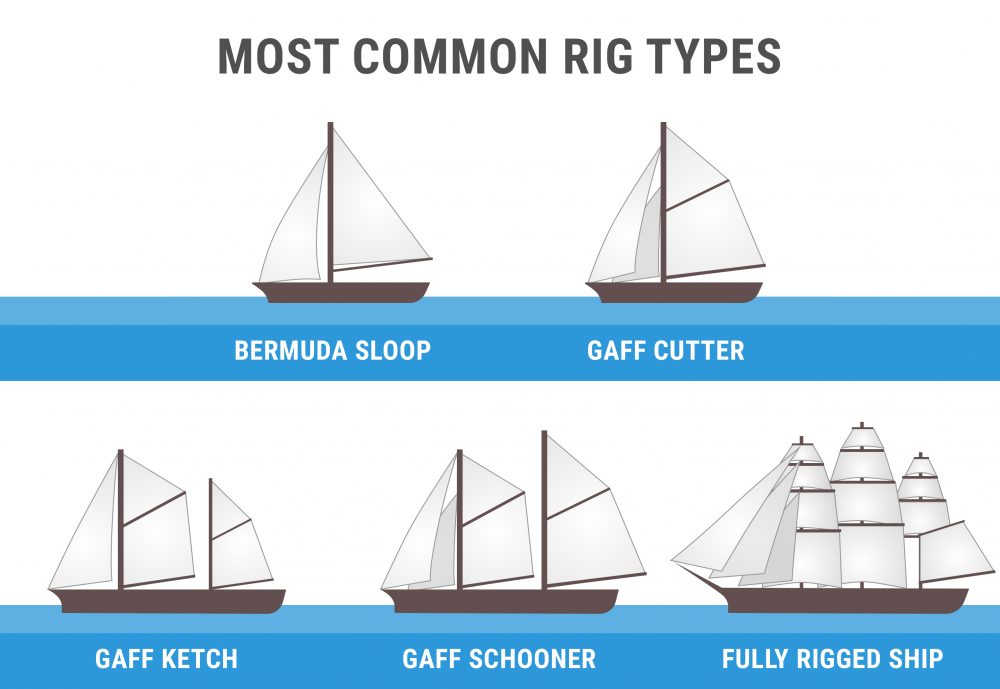
The sail rig and sail plan are often used interchangeably. When we talk of the sail rig we usually mean the sail plan . Although they are not quite the same. A sail plan is the set of drawings by the naval architect that shows the different combinations of sails and how they are set up for different weather conditions. For example a light air sail plan, storm sail plan, and the working sail plan (which is used most of the time).
So let's take a look at the three things that make up the sail plan.
The 3 things that make up the sail plan
I want to do a quick recap of my previous article. A sail plan is made up of:
- Mast configuration - refers to the number of masts and where they are placed
- Sail type - refers to the sail shape and functionality
- Rig type - refers to the way these sails are set up on your boat
I'll explore the most common rig types in detail later in this post. I've also added pictures to learn to recognize them more easily. ( Click here to skip to the section with pictures ).
How to recognize the sail plan?
So how do you know what kind of boat you're dealing with? If you want to determine what the rig type of a boat is, you need to look at these three things:
- Check the number of masts, and how they are set up.
- You look at the type of sails used (the shape of the sails, how many there are, and what functionality they have).
- And you have to determine the rig type, which means the way the sails are set up.
Below I'll explain each of these factors in more detail.
The most common rig types on sailboats
To give you an idea of the most-used sail rigs, I'll quickly summarize some sail plans below and mention the three things that make up their sail plan.
- Bermuda sloop - one mast, one mainsail, one headsail, fore-and-aft rigged
- Gaff cutter - one mast, one mainsail, two staysails, fore-and-aft rigged
- Gaff schooner - two-masted (foremast), two mainsails, staysails, fore-and-aft rigged
- Gaff ketch - two-masted (mizzen), two mainsails, staysails, fore-and-aft rigged
- Full-rigged ship or tall ship - three or more masts, mainsail on each mast, staysails, square-rigged
The first word is the shape and rigging of the mainsail. So this is the way the sail is attached to the mast. I'll go into this later on. The second word refers to the mast setup and amount of sails used.
Most sailboats are Bermuda sloops. Gaff-rigged sails are mostly found on older, classic boats. Square-rigged sails are generally not used anymore.
But first I want to discuss the three factors that make up the sail plan in more detail.
Ways to rig sails
There are basically two ways to rig sails:
- From side to side, called Square-rigged sails - the classic pirate sails
- From front to back, called Fore-and-aft rigged sails - the modern sail rig
Almost all boats are fore-and-aft rigged nowadays.
Square sails are good for running downwind, but they're pretty useless when you're on an upwind tack. These sails were used on Viking longships, for example. Their boats were quicker downwind than the boats with fore-and-aft rigged sails, but they didn't handle as well.
The Arabs first used fore-and-aft rigged sails, making them quicker in difficult wind conditions.
Quick recap from part 1: the reason most boats are fore-and-aft rigged today is the increased maneuverability of this configuration. A square-rigged ship is only good for downwind runs, but a fore-and-aft rigged ship can sail close to the wind, using the lift to move forward.
The way the sails are attached to the mast determines the shape of the sail. The square-rigged sails are always attached the same way to the mast. The fore-and-aft rig, however, has a lot of variations.
The three main sail rigs are:
- Bermuda rig - most used - has a three-sided (triangular) mainsail
- Gaff rig - has a four-sided mainsail, the head of the mainsail is guided by a gaff
- Lateen rig - has a three-sided (triangular) mainsail on a long yard
The Bermuda is the most used, the gaff is a bit old-fashioned, and the lateen rig is outdated (about a thousand years). Lateen rigs were used by the Moors. The Bermuda rig is actually based on the Lateen rig (the Dutch got inspired by the Moors).

Other rig types that are not very common anymore are:
- Junk rig - has horizontal battens to control the sail
- Settee rig - Lateen with the front corner cut off
- Crabclaw rig
Mast configuration
Okay, we know the shape of the mainsail. Now it's time to take a look at the mast configuration. The first thing is the number of masts:
- one-masted boats
- two-masted boats
- three-masted boats
- four masts or up
- full or ship-rigged boats - also called 'ships' or 'tall ships'
I've briefly mentioned the one and two mast configurations in part 1 of this article. In this part, I'll also go over the three-masted configurations, and the tall ships as well.
A boat with one mast has a straightforward configuration because there's just one mast. You can choose to carry more sails or less, but that's about it.
A boat with two masts or more gets interesting. When you add a mast, it means you have to decide where to put the extra mast: in front, or in back of the mainmast. You can also choose whether or not the extra mast will carry an extra mainsail. The placement and size of the extra mast are important in determining what kind of boat we're dealing with. So you start by locating the largest mast, which is always the mainmast.
From front to back: the first mast is called the foremast. The middle mast is called the mainmast. And the rear mast is called the mizzenmast.

What is the mizzenmast? The mizzenmast is the aft-most (rear) mast on a sailboat with three or more masts or the mast behind the mainmast on a boat with two masts. The mizzenmast carries the mizzen sail. On a two-masted boat, the mizzenmast is always (slightly) smaller than the mainmast. What is the purpose of the mizzen sail? The mizzen sail provides more sail area and flexibility in sail plan. It can be used as a big wind rudder, helping the sailor to have more control over the stern of the ship. It pushes the stern away from the wind and forces the bow in the opposite way. This may help to bring the bow into the wind when at anchor.
I always look at the number of masts first, because this is the easiest to spot. So to make this stuff more easy to understand, I've divided up the rig types based on the number of masts below.
Why would you want more masts and sail anyways?
Good question. The biggest advantage of two masts compared to one (let's say a ketch compared to a sloop), is that it allows you to use multiple smaller sails to get the same sail area. It also allows for shorter masts.
This means you reduce the stress on the rigging and the masts, which makes the ketch rig safer and less prone to wear and tear. It also doesn't capsize as quickly. So there are a couple of real advantages of a ketch rig over a sloop rig.
In the case of one mast, we look at the number of sails it carries.
Boats with one mast can have either one sail, two sails, or three or more sails.
Most single-masted boats are sloops, which means one mast with two sails (mainsail + headsail). The extra sail increases maneuverability. The mainsail gives you control over the stern, while the headsail gives you control over the bow.
Sailor tip: you steer a boat using its sails, not using its rudder.
The one-masted rigs are:
- Cat - one mast, one sail
- Sloop - one mast, two sails
- Cutter - one mast, three or more sails
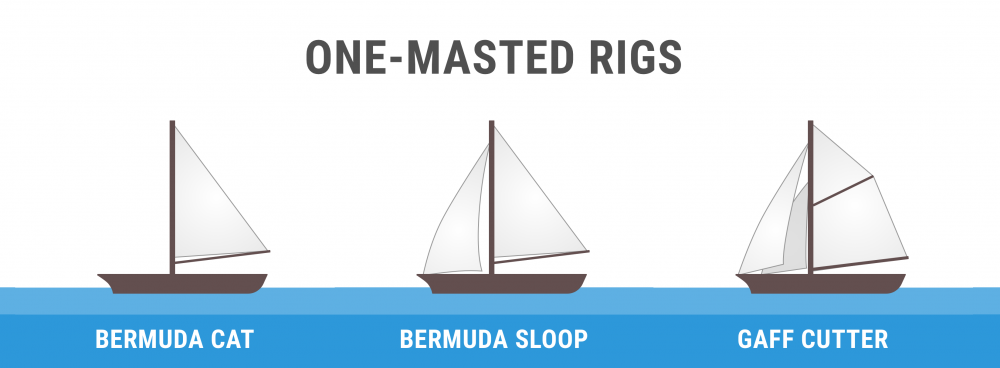
The cat is the simplest sail plan and has one mast with one sail. It's easy to handle alone, so it's very popular as a fishing boat. Most (very) small sailboats are catboats, like the Sunfish, and many Laser varieties. But it has a limited sail area and doesn't give you the control and options you have with more sails.
The most common sail plan is the sloop. It has one mast and two sails: the main and headsail. Most sloops have a Bermuda mainsail. It's one of the best racing rigs because it's able to sail very close to the wind (also called 'weatherly'). It's one of the fastest rig types for upwind sailing.
It's a simple sail plan that allows for high performance, and you can sail it short-handed. That's why most sailboats you see today are (Bermuda) sloops.
This rig is also called the Marconi rig, and it was developed by a Dutch Bermudian (or a Bermudian Dutchman) - someone from Holland who lived on Bermuda.
A cutter has three or more sails. Usually, the sail plan looks a lot like the sloop, but it has three headsails instead of one. Naval cutters can carry up to 6 sails.
Cutters have larger sail area, so they are better in light air. The partition of the sail area into more smaller sails give you more control in heavier winds as well. Cutters are considered better for bluewater sailing than sloops (although sloops will do fine also). But the additional sails just give you a bit more to play with.
Two-masted boats can have an extra mast in front or behind the mainmast. If the extra mast is behind (aft of) the mainmast, it's called a mizzenmast . If it's in front of the mainmast, it's called a foremast .
If you look at a boat with two masts and it has a foremast, it's most likely either a schooner or a brig. It's easy to recognize a foremast: the foremast is smaller than the aft mast.
If the aft mast is smaller than the front mast, it is a sail plan with a mizzenmast. That means the extra mast has been placed at the back of the boat. In this case, the front mast isn't the foremast, but the mainmast. Boats with two masts that have a mizzenmast are most likely a yawl or ketch.
The two-masted rigs are:
- Lugger - two masts (mizzen), with lugsail (a cross between gaff rig and lateen rig) on both masts
- Yawl - two masts (mizzen), fore-and-aft rigged on both masts. Main mast is much taller than mizzen. Mizzen without a mainsail.
- Ketch - two masts (mizzen), fore-and-aft rigged on both masts. Main mast with only slightly smaller mizzen. Mizzen has mainsail.
- Schooner - two masts (foremast), generally gaff rig on both masts. Main mast with only slightly smaller foremast. Sometimes build with three masts, up to seven in the age of sail.
- Bilander - two masts (foremast). Has a lateen-rigged mainsail and square-rigged sails on the foremast and topsails.
- Brig - two masts (foremast), partially square-rigged. The main mast carries small lateen-rigged sail.

The yawl has two masts that are fore-and-aft rigged and a mizzenmast. The mizzenmast is much shorter than the mainmast, and it doesn't carry a mainsail. The mizzenmast is located aft of the rudder and is mainly used to increase helm balance.
A ketch has two masts that are fore-and-aft rigged. The extra mast is a mizzenmast. It's nearly as tall as the mainmast and carries a mainsail. Usually, the mainsails of the ketch are gaff-rigged, but there are Bermuda-rigged ketches too. The mizzenmast is located in front of the rudder instead of aft, as on the yawl.
The function of the ketch's mizzen sail is different from that of the yawl. It's actually used to drive the boat forward, and the mizzen sail, together with the headsail, are sufficient to sail the ketch. The mizzen sail on a yawl can't really drive the boat forward.
Schooners have two masts that are fore-and-aft rigged. The extra mast is a foremast which is generally smaller than the mainmast, but it does carry a mainsail. Schooners are also built with a lot more masts, up to seven (not anymore). The schooner's mainsails are generally gaff-rigged.
The schooner is easy to sail but not very fast. It handles easier than a sloop, except for upwind, and it's only because of better technology that sloops are now more popular than the schooner.
The brig has two masts. The foremast is always square-rigged. The mainmast can be square-rigged or is partially square-rigged. Some brigs carry a lateen mainsail on the mainmast, with square-rigged topsails.
Some variations on the brig are:
Brigantine - two masts (foremast), partially square-rigged. Mainmast carries no square-rigged mainsail.
Hermaphrodite brig - also called half brig or schooner brig. Has two masts (foremast), partially square-rigged. Mainmast carries a gaff rig mainsail and topsail, making it half schooner.
Three-masted boats are mostly barques or schooners. Sometimes sail plans with two masts are used with more masts.
The three-masted rigs are:
- Barque - three masts, fore, and mainmast are square-rigged, the mizzenmast is usually gaff-rigged. All masts carry mainsail.
- Barquentine - three masts, foremast is square-rigged, the main and mizzenmast are fore-and-aft rigged. Also called the schooner barque.
- Polacca - three masts, foremast is square-rigged, the main and mizzenmast are lateen-rigged.
- Xebec - three masts, all masts are lateen-rigged.

A barque has three or four masts. The fore and mainmast are square-rigged, and the mizzen fore-and-aft, usually gaff-rigged. Carries a mainsail on each mast, but the mainsail shape differs per mast (square or gaff). Barques were built with up to five masts. Four-masted barques were quite common.
Barques were a good alternative to full-rigged ships because they require a lot fewer sailors. But they were also slower. Very popular rig for ocean crossings, so a great rig for merchants who travel long distances and don't want 30 - 50 sailors to run their ship.
Barquentine
The barquentine usually has three masts. The foremast is square-rigged and the main and mizzenmast fore-and-aft. The rear masts are usually gaff-rigged.
Faster than a barque or a schooner, but the performance is worse than both.
The polacca or polacre rig has three masts with a square-rigged foremast. The main and mizzenmast are lateen-rigged. Beautiful boat to see. Polacca literally means 'Polish' (it's Italian). It was a popular rig type in the Mediterranean in the 17th century. It looks like the xebec, which has three lateen-rigged masts.
Fun fact: polaccas were used by a Dutch sailor-turned-Turkish-pirate (called Murat Reis).
The xebec is a Mediterranean trading ship with three masts. All masts are lateen-rigged. I couldn't find any surviving xebecs, only models and paintings. So I guess this rig is outdated a long time.
A boat with three or more masts that all carry square-rigged sails is called a ship, a tall ship, or a full-rigged ship. So it's at this point that we start calling boats 'ships'. It has nothing to do with size but with the type of rigging.
More sails mean less stress on all of them. These ships use a lot of sails to distribute the forces, which reduces the stress on the rigging and the masts. Square sails mean double the sail area in comparison to triangular sails.
They are quite fast for their size, and they could outrun most sloops and schooners (schooners were relatively a lot heavier). The reason is that tall ships could be a lot longer than sloops, giving them a lot of extra hull speed. Sloops couldn't be as large because there weren't strong enough materials available. Try making a single triangular sail with a sail area of over 500 sq. ft. from linen.
So a lot of smaller sails made sense. You could have a large ship with a good maximum hull speed, without your sails ripping apart with every gust of wind.
But you need A LOT of sailors to sail a tall ship: about 30 sailors in total to ie. reef down sails and operate the ship. That's really a lot.
Tall ships are used nowadays for racing, with the popular tall ship races traveling the world. Every four years I go and check them out when they are at Harlingen (which is very close to where I live).
Check out the amazing ships in this video of the tall ship races last year near my hometown. (The event was organized by friends of mine).
What is the difference between a schooner and a sloop? A schooner has two masts, whereas the sloop only has one. The schooner carries more sails, with a mainsail on both masts. Also, sloops are usually Bermuda-rigged, whereas schooners are usually gaff-rigged. Most schooners also carry one or two additional headsails, in contrast to the single jib of the sloop.
What do you call a two-masted sailboat? A two-masted sailboat is most likely a yawl, ketch, schooner, or brig. To determine which one it is you have to locate the mainmast (the tallest). At the rear: schooner or brig. In front: yawl or ketch. Brigs have a square-rigged foremast, schooners don't. Ketches carry a mainsail on the rear mast; yawls don't.
What is a sloop rig? A sloop rig is a sailboat with one mast and two sails: a mainsail and headsail. It's a simple sail plan that handles well and offers good upwind performance. The sloop rig can be sailed shorthanded and is able to sail very close to the wind, making it very popular. Most recreational sailboats use a sloop rig.
What is the difference between a ketch and a yawl? The most important difference between a ketch and a yawl are the position and height of the mizzenmast. The mizzenmast on a yawl is located aft of the rudder, is shorter than the mainmast and doesn't carry a mainsail. On a ketch, it's nearly as long as the mainmast and carries a mainsail.

There are a wonderful lots of DIY changeability shows on the cable airwaves these days.
Rick the rigger
There are SO many errors on this site it really should be taken down.
First major mistake is to say you are no longer afraid of the sea.
One that truly gets up my nose is the term ‘fully’ rigged ship. It’s a FULL rigged ship!! Your mast names are the wrong way round and just because there may be 3 it doesn’t automatically mean the one in the middle is the main.
I could go on and totally destroy your over inflated but fragile ego but I won’t. All I will say is go learn a lot more before posting.
Shawn Buckles
Thanks for your feedback. If you like to point out anything more specific, please let me know and I will update the articles. I’ve changed fully-rigged to full-rigged ship - which is a typo on my part. I try to be as concise as I can, but, obviously, we all make mistakes every now and then. The great thing about the internet is that we can learn from each other and update our knowledge together.
If you want to write yourself and share your knowledge, please consider applying as a writer for my blog by clicking on the top banner.
Thanks, Shawn
Well, I feel that I’ve learned a bit from this. The information is clear and well laid out. Is it accurate? I can’t see anything at odds with the little I knew before, except that I understood a xebec has a square rigged centre mainmast, such as the Pelican ( https://www.adventureundersail.com/ )
Hi, Shawn, You forgot (failed) to mention another type of rig? The oldest type of rig known and still functions today JUNK RIG!
Why are so many of the comments here negative. I think it is wonderful to share knowledge and learn together. I knew a little about the subject (I’m an Aubrey-Maturin fan!) but still found this clarified some things for me. I can’t comment therefore on the accuracy of the article, but it seems clear to me that the spirit of the author is positive. We owe you some more bonhomme I suggest Shawn.
As they say in the Navy: “BZ” - for a good article.
Been reading S.M. Stirling and wanted to understand the ship types he references. Thank you, very helpful.
This site is an awesome starting point for anyone who would like to get an overview of the subject. I am gratefull to Shawn for sharing - Thanks & Kudos to you! If the negative reviewers want to get a deeper technical knowledge that is accurate to the n-th then go study the appropriate material. Contribute rather than destroy another’s good work. Well done Shawn. Great job!
Good stuff Shawn - very helpful. As a novice, it’s too confusing to figure out in bits and pieces. Thanks for laying it out.
First of all I have to say that Rick ‘the rigger’ is obviously the one with the “over inflated but fragile ego” and I laughed when you suggested he share his knowledge on your blog, well played!
As for the content it’s great, hope to read more soon!
Alec Lowenthal
Shawn, I have a painting of a Spanish vessel, two masted, with. Lateen sails on both masts and a jib. The mainsail is ahead of the main mast (fore) and the other is aft of the mizzen mast. Would this be what you call lugger rig? I have not seen a similar picture. Thanks, Alec.
Thank you for your article I found easy to read and understand, and more importantly remember, which emphasises the well written.. Pity about the negative comments, but love your proactive responses!
This vessel, “SEBASTIAN” out of Garrucha, Almería, España, was painted by Gustave Gillman in 1899.
Sorry, picture not accepted!
Thank you for a very informative article. I sail a bit and am always looking for more knowledge. I like the way you put forth your info and I feel if you can’t say anything positive, then that person should have their own blog or keep their opinions to their-self. I will be looking for more from you. I salute your way of dealing with negative comments.
Thank you for a great intro to sailing boats! I searched different sailboats because I use old sails tp make bags and wanted to learn the difference. Way more than I ever expected. Thanks for all the work put in to teach the rest of us.
Your description of a cutter is lacking, and your illustrations of “cutters” are actually cutter-rigged sloops. On a true cutter, the mast is moved further aft (with more than 40% of the ship forward of the mast). A sloop uses tension in the backstay to tension the luff of the foresail. The cutter can’t do this.
Also, a bermuda-rigged ketch will have a line running from the top of the mainmast to the top of the mizzenmast.
wow great guide to rig types! thanks
Interesting guide, however I am confused about the description of the brig. You say the main mast on a brig can have a lateen sail, but in your picture it looks like a gaff sail to me. How is it a lateen sail?
Hi Shawn, thank you for taking the time to share this information. It is clear and very helpful. I am new to sailing and thinking of buying my own blue water yacht. The information you have supplied is very useful. I still am seeking more information on performance and safety. Please keep up the good work. Best Regards
mickey fanelli
I’m starting to repair a model sailboat used in the lake I have three masts that have long been broken off and the sails need replacement. So my question is there a special relationship between the three masts I do have reminents of where the masts should go. they all broke off the boat along with the sails I can figure out where they go because of the old glue marks but it makes no sense. or does it really matter on a model thank you mickey
Cool, total novice here. I have learnt a lot. Thanks for sharing - the diagrams along with the text make it really easy to understand, especially for a beginner who hasn’t even stepped on a sailing boat.
Daryl Beatt
Thank you. Cleared up quite a few things for me. For example, I was familiar with the names “Xebecs” and “Polaccas” from recent reading about the Barbary War. I had gathered that the two Barbary types were better suited to sailing in the Med, but perhaps they were less able to be adaptable to military uses,(but one might assume that would be ok if one plans to board and fight, as opposed to fight a running gun duel). Specifically, the strangely one sided August 1, 1801 battle between the USS Enterprise under Lt. John Sterett and the Polacca cruiser Tripoli under Admiral Rais Mahomet Rous. On paper both ships seemed nearly equal in size, guns and crew, but pictures of the battle are confusing. While the Enterprise is usually rendered as the familiar schooner, the polacca Tripoli has been pictured in radically different ways. Thus the Wikipedia picture by Hoff in 1878 used to illustrate the Battle shows a Brig design for Tripoli, indicating 77 years later, polaccas were no longer common.
Lee Christiansen
I am curious as to what you would call a modern race boat with a fractional jib,not equipped for full masthead hoist? Thanks Lee
Thanks Guy: The information and pictures really eliminate a lot of the mystery of the terminology and the meanings. Also appreciate the insight of the handling idiosyncrasies “hand” (staff) requirements to manage a vessel for one that has not been on the water much. I long to spend significant time afloat, but have concern about the ability to handle a vessel due to advancing age. The Significant Other prefers to sit (in AC comfort)and be entertained by parties of cruise line employees. Thanks again for the information.
Gordon Smith
Your discussion made no mention of the galleon, a vessel with either square-rigged Fore and Main masts and a shorter lateen-rigged Mizzen, or, on larger galleons, square-rigged Fore and Main masts, with a lateen-rigged Mizzen and a lateen-rigged Bonaventure mast, both shorter than either the Fore or Main masts. Also, it was not uncommon for a galleon to hoist a square-rigged bowsprit topsail in addition to the usual square-rigged spritsail.
Leave a comment
You may also like.
What's that sail for? Generally, I don't know. So I've come up with a system. I'll explain you everything there is to know about sails and rigs in this article.

17 Sailboat Types Explained: How To Recognize Them

Different Types of Sailing and Racing Explained

How Are Sail Numbers Assigned? (And how to pick yours)
The 15 Different Types Of Sailing Ships
The 15 types of sailing ships are listed below.
- The Schooner
- The Carrack
- The Brigantine
- The Barquentine
- The Clipper
- The Windjammer
- The Fully Rigged Ship
Throughout centuries, there have been many different types of sailing ships seen from harbors and coastlines around the world.
This article will show the various types of sailing vessels that have made their mark in maritime history and we showcase their purposes and why they are still remarkable feats of marine engineering.
The different sizes, shapes, and masts of the ships required different numbers of sailors to handle them and each type of ship was crafted with a different purpose in mind.
All ships are unique with no two types of ships being the same with each coming with its own experiences, features and requirements.
1. The Schooner
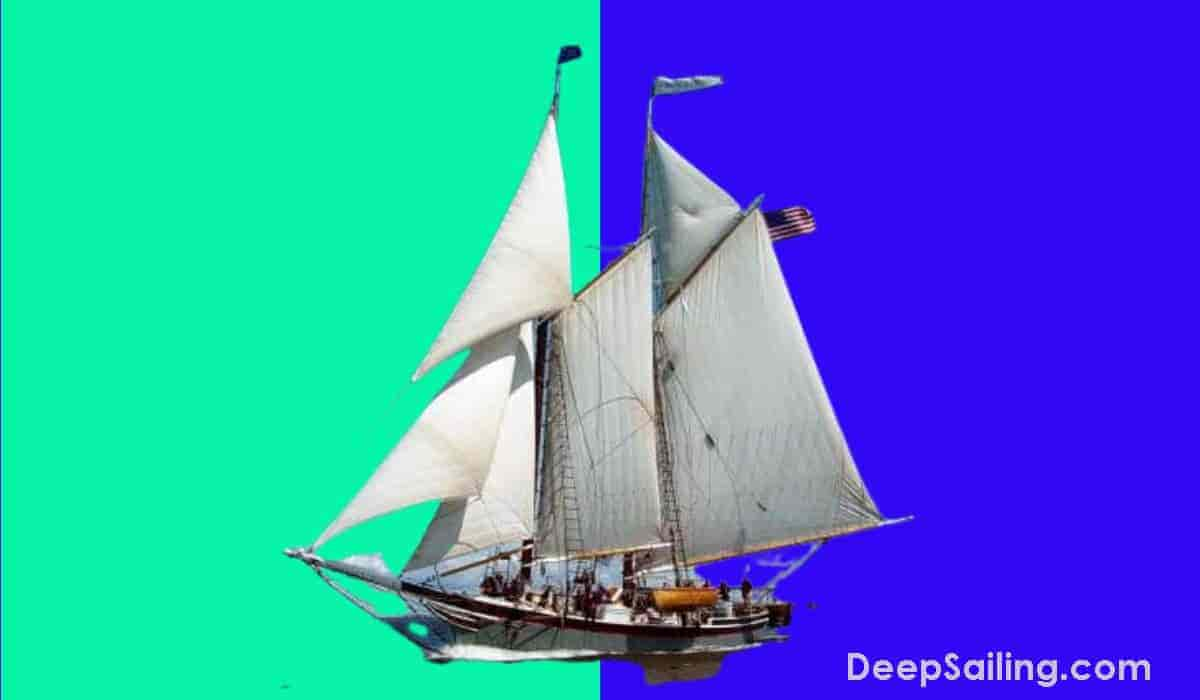
The Schooner sailing vessel, with an average size of 46m (152 feet) in length, was developed in the early 17th century and first used by the Dutch.
The ship came with fore and aft sails and they were created to operate in the toughest of wind and ocean conditions.
The Schooner was a multi-purpose sailing vessel used for transporting slaves to transporting cargo and it was used for fishing and racing too.
There are 5 different schooner types that are characterized by their rig configurations listed below.
- Tern schooner : This was a 3-masted schooner most popular between 1880 and 1920 capable of carrying up to 400 tons in cargo and it required a crew of 6-8 people
- 4-6 masts schooner : These schooners spread the sail area over smaller sails
- Grand Bank Fishing schooner : Similar to the famous Bluenose, it carries the main gaff topsail and a fisherman's staysail set between the masts.
- Square Topsail schooner : This was a combination of fore and aft sails and small square sails, most popularly used for coastal cargo transportation in the 1800s
- Coastal schooner : This was a coastal schooner sailing ship used for carrying goods and general cargo to nearby islands along the coast ( 1 )
The 19th Century schooner came with two or three masts, the one at the fore being shorter than the others.
Modern schooners, with Bermuda rigged sails, remain powerful, economical coastal liners traversing the Pacific.
Famous schooner sailing ships are listed below.
- America : The Schooner named " America " was designed for racing and it became the first winner of the America's Cup international sailing trophy ( 2 )
- Thomas W Lawson : The schooner “ Thomas W Lawson ” had a unique seven masts, with interchangeable sails and gear
- Wawona : The schooner " Wawona " was one of the largest lumber carriers and fishing vessels between 1897 and 1947
2. The Carrack
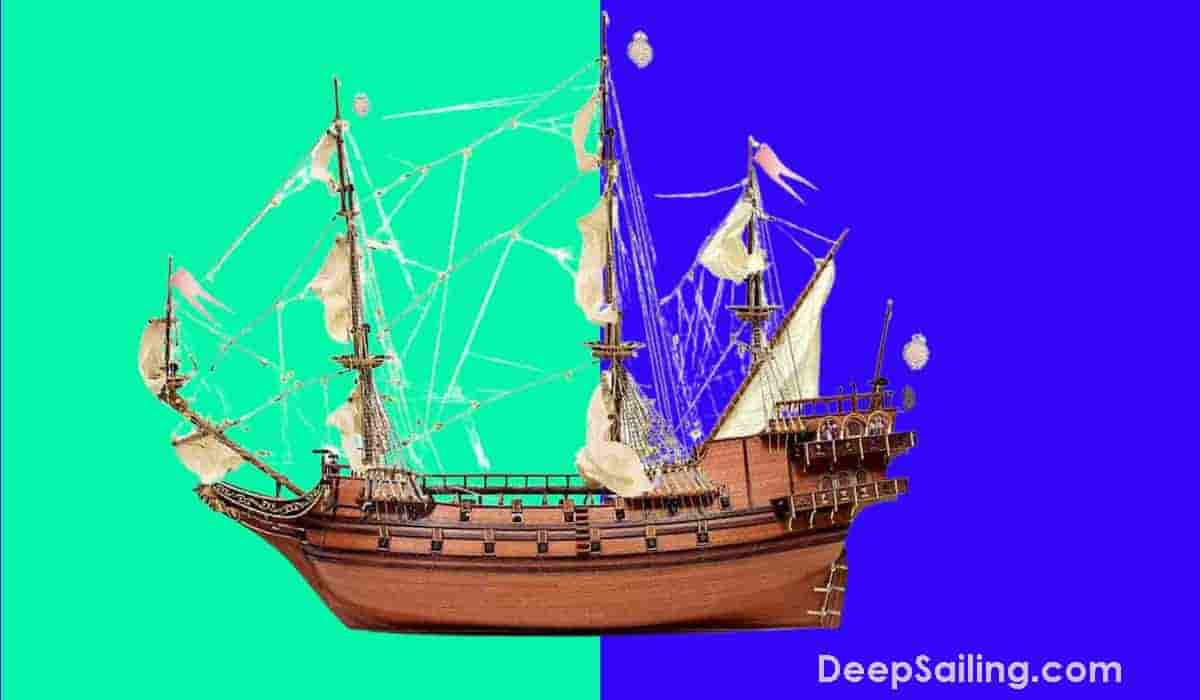
The Carrack, developed in the 14th and 15th centuries with the first built in Portugal, is a nautically-rigged wooden ship with three or four masts each having square sails or triangular sails and it was heavily used between the 14th to 15th Centuries and remained popular until the 18th Century. It is the sailing ship Christopher Columbus used to sail the world.
It was the largest ship in Europe with the Spanish Carrack being more than 1,000 tons in weight and 150 feet (45 meters) in length. More modern versions of the Carrack were developed by the Portuguese and they could hold up to 2,000 tons. ( 3 ).
The Carrack had 4 decks with the lower 2 used for cargo, the 3rd was for accommodation and the 4th was for cargo owned by the crew ( 4 ) and this bulky ship was the standard trading ship along the Baltic, Mediterranean, Asian, and Atlantic coasts in the mid-16th century useful for carrying cargo across seas.
The Carrack had a strange shape which made it cumbersome to sail close to the wind and after a lot of engineering experiments, parts of the ship were stripped off giving the ship a high stern and a low bow.
The modern Carrack features a square-rigged mainmast, foremast, and a latten-rigged Mizzen mast, along with a rounded stern, sizable bowsprit, forecastle, and aft castle.
This is a large ship, built to carry heavy freight for long-distance hauls since it was very steady even in the worst weather with the British Army calling it the “Great Ship” because of its highly-functional ship design.
Famous carrack shipping vessels are listed below.
- Santa Maria : This was the famous ship that Christopher Columbus used to sail and discover America in 1492
- Victoria : The first ship to circumnavigate the globe
- Grace Dieu : This was commissioned by King Henry V and it was one of the largest carrack ships in the world in 1418
- Cinco Chagas : This was presumed to be the richest ship at that time. it was sunk in battle in 1594 ( 5 )
3. The Brigantine
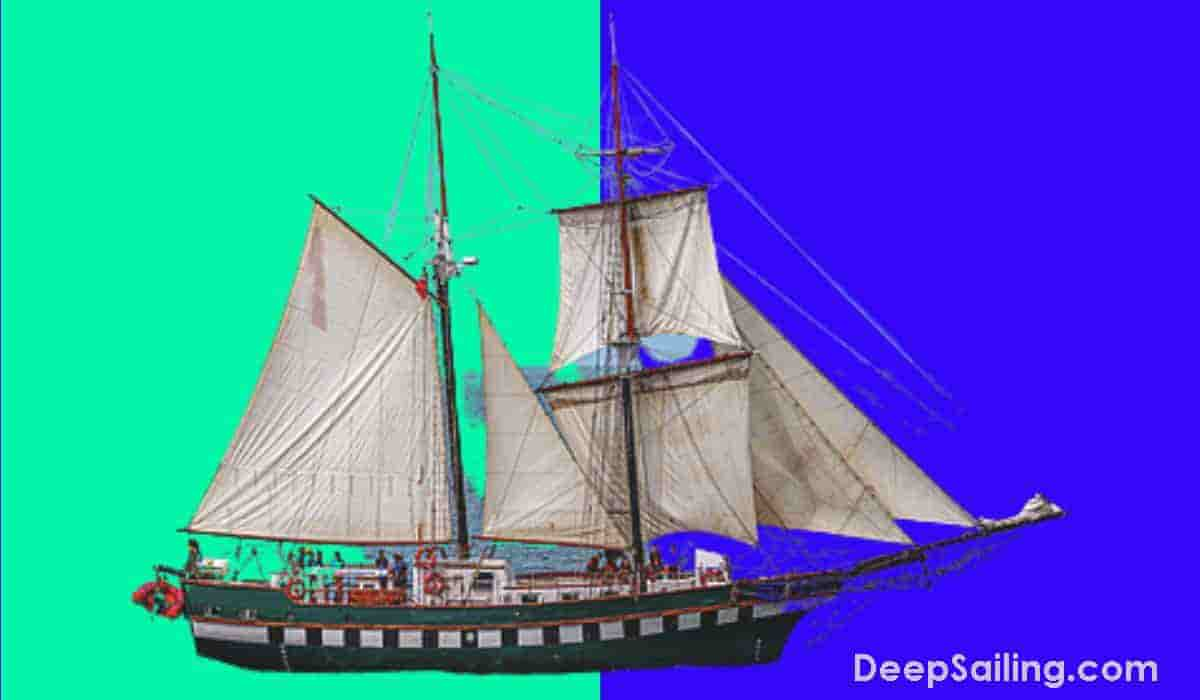
A Brigantine is a two-masted sailing ship with the main mast both a fore-and-aft main sail, a triangular type of sail and a square main topsail that came in various sizes ranging from 30 tons to 150 tons and it could carry a crew of up to 125 people but the shipping vessel could still be handled by a smaller crew if needed.
These ships were similar to the sailing vessel called the Brig as they both had top-gallant sails and were used by the Royal Navy to scout and monitor enemies on the high seas while also being popular amongst pirates as they were faster and easily maneuverable sailing vessels.
It is unclear when the ship was originally built with loose definitions date the ship back to the 13th century when it was originally referred to as the "sail and oar-driven war vessel" ( 6 ) and early academic definitions where the vessel was referred to as the "Brigantine" was first seen in books in the early to mid-16th century ( 7 ).
They would sail across the trade routes of the Baltics and Northern Europe, all the way from Germany to Scandinavia.
The mid-size ships had two sails on the-mainmast with a stripped-down fully-squared rig.
4. The Barquentine
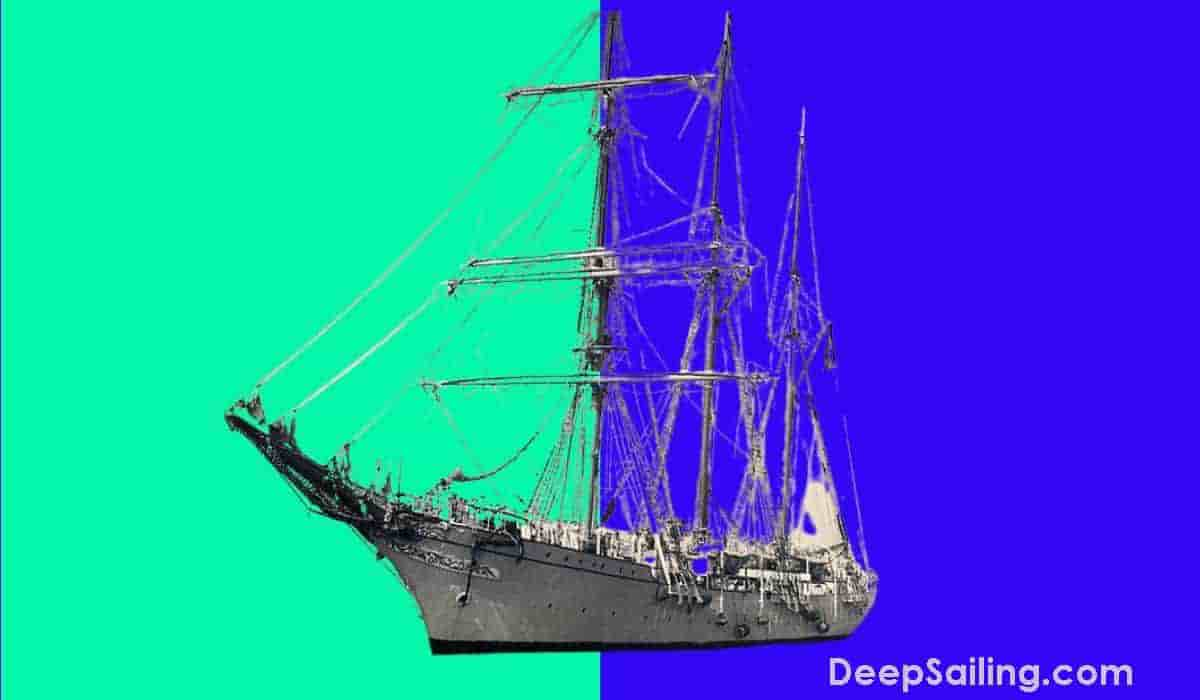
The Barquentine, first built in the 17th century and also referred to as a " schooner barque ", " barkentine " or " schooner bark ", is a sailing ship similar to a barque but with only the foremast square-rigged and the remaining masts rigged fore and aft ( 9 ). They weighed 250 to 500 tons.
The Barquentine has three or more masts and square sails on the fore and aft masts with the main mast had topmast and gaff sails and these had been stripped down to facilitate operation by a slimmer crew and basic rig.
The Barquentine sailed the waters of Northern Europe which were dominated by variable wind speeds and they were popularly used to carry lumber from Scandinavia and Germany to England and the Baltic Areas.
5. The Xebec
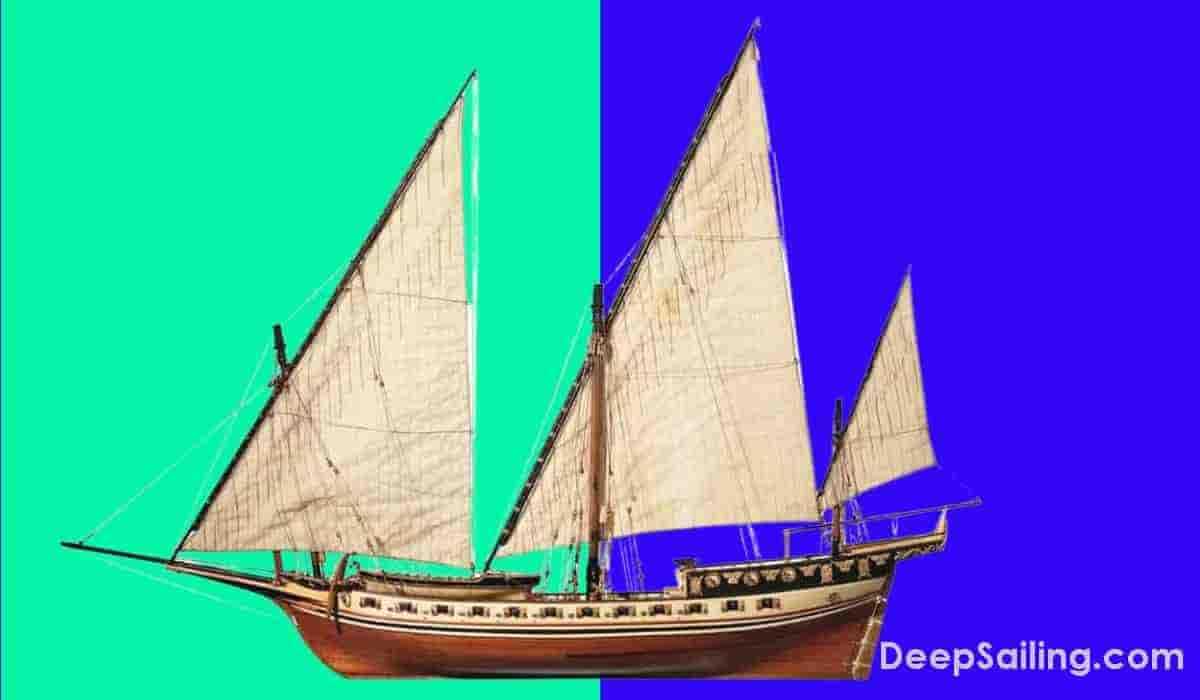
The Xebec, also known as " Zebec ", a name derived from the Arabic word for "Small Ship", was a sailing ship built in the 16th to mid-19th century that was used mainly for moving cargo.
The Xebec sailing vessel held between 90 and 400 crew and was 103ft 9 inches in length with a tonnage of between 200 - 300 tons ( 10 ) and they were very agile and popular with European navies.
The features of the Xebec are listed below.
- Long-prow bulkheads
- Narrow elongated hulls
- Huge lateen yards
- One aft-set mizzen mast
- 3 lateen-pillared masts, both raked forward and having a single triangular sail
Their shallow draft and lateen rig allowed for a closer pinch to the wind allowing them to flee quickly or turn around and fire a broadside volley quickly.
After a lot of engineering experiments, the Xebec gave rise to the Polacre-Xebec, which replaced the mizzen mast. The mainmast of the new derivative also had a square rig and these new vessels were light and could not carry a heavy load with the shallow draft and low free-board making them unsuitable for open-seas sailing.
6. The Barque
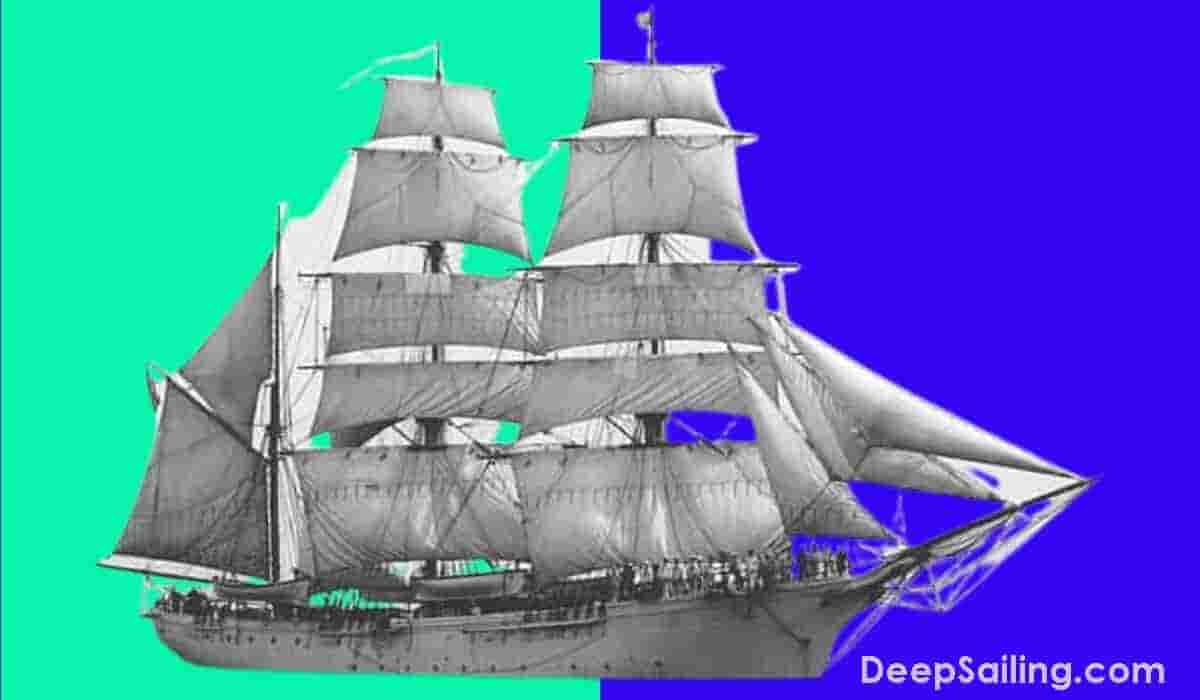
The barque, also referred to as " barc " or " bark ", is a sailing ship first introduced in the 15th century ( 11 ) with 3 or more masts with square sails on all masts, except the aft or mizzen mast. It could carry approximately 500 tons and could hold a crew of 100 people.
Although they are quite similar, the barque should not be confused with the Schooner Bark which is a different vessel.
The Barque ship was commonly used by traders to carry extremely high volumes of cargo from Australia to Europe with cargo mainly consisting of Nitrates and Guano destined for the Western South American coast and they were popular in the period prior to the start of World War II.
7. The Clipper
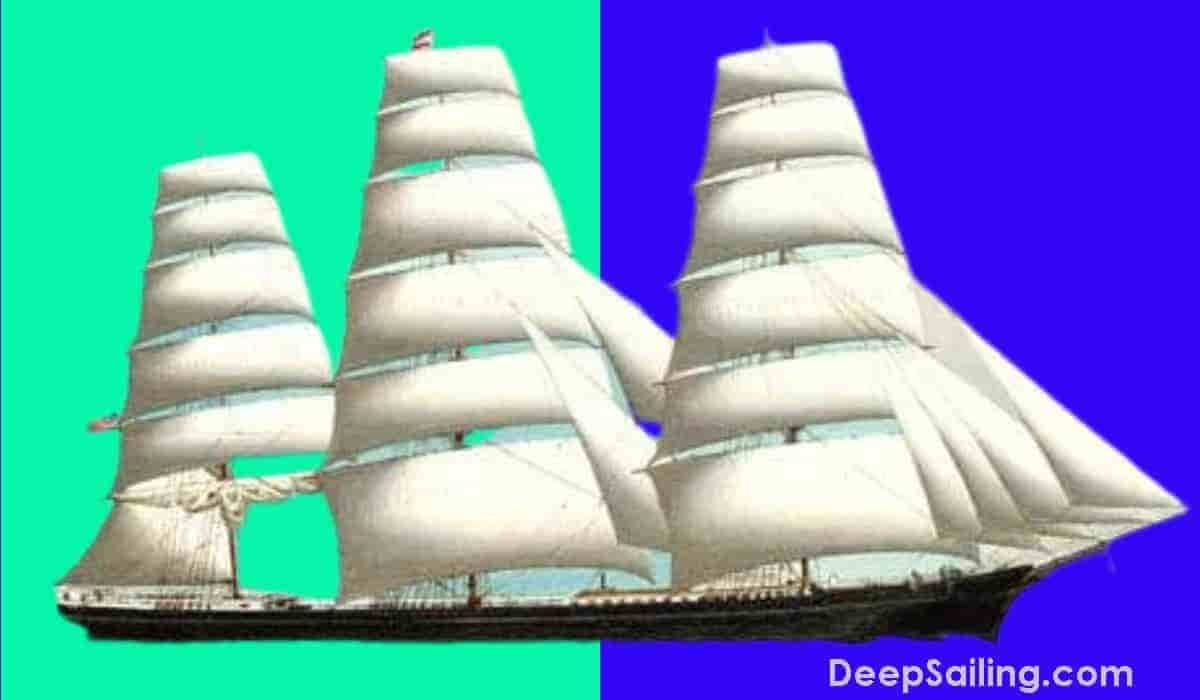
A clipper was a sailing vessel introduced in the mid-19th century that was mainly used as a merchant ship for transporting goods and it was designed for speed.
Clipper ships ranged in size from a few hundred tons to over 4000 tons ( 12 ) and they all had a narrow build, a protruding stern, 3 to 5 masts for speed, and a square rig.
They were most commonly used by British and American traders to ship goods from China to their countries and they were also used to ferry Gold and Tea back to Great Britain and the Americas.
Famous clipper ships are listed below.
- Cisne Branco : This is a steel-hulled built like the original clipper. It is used as a training vessel by the Brazilian navy to this day
- Race Horse : This clipper ship set the record of getting from New York to San Francisco in 109 days in 1850 which was a record at that time
- Marco Polo : This clipper vessel was the first boat of the time to make around trip between England & Australia in under 6 months in 1852
8. The Windjammer
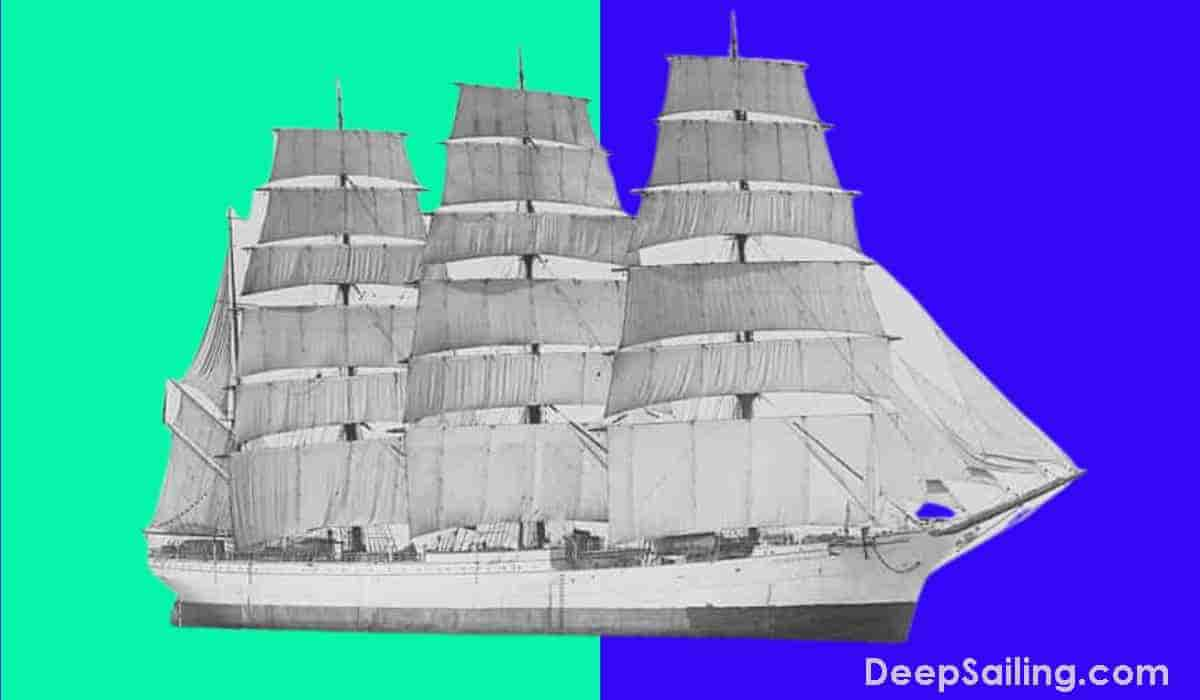
The Windjammer is a commercial sailing ship built in the 19th century with a capacity between 2,000 to 8,000 tons and the speed ranged from 14 to 21 knots ( 13 ).
It came with three to five square-rigged masts and it had a cost-effective extended hull that allowed for larger storage space.
It was a general-class merchant ship and was mainly used to transport bulky cargo and it ferried lumber, coal, and many other goods from one continent to another before evolving from carrying cargo to carrying passengers on cruises in later generations.
9. The Fluyt
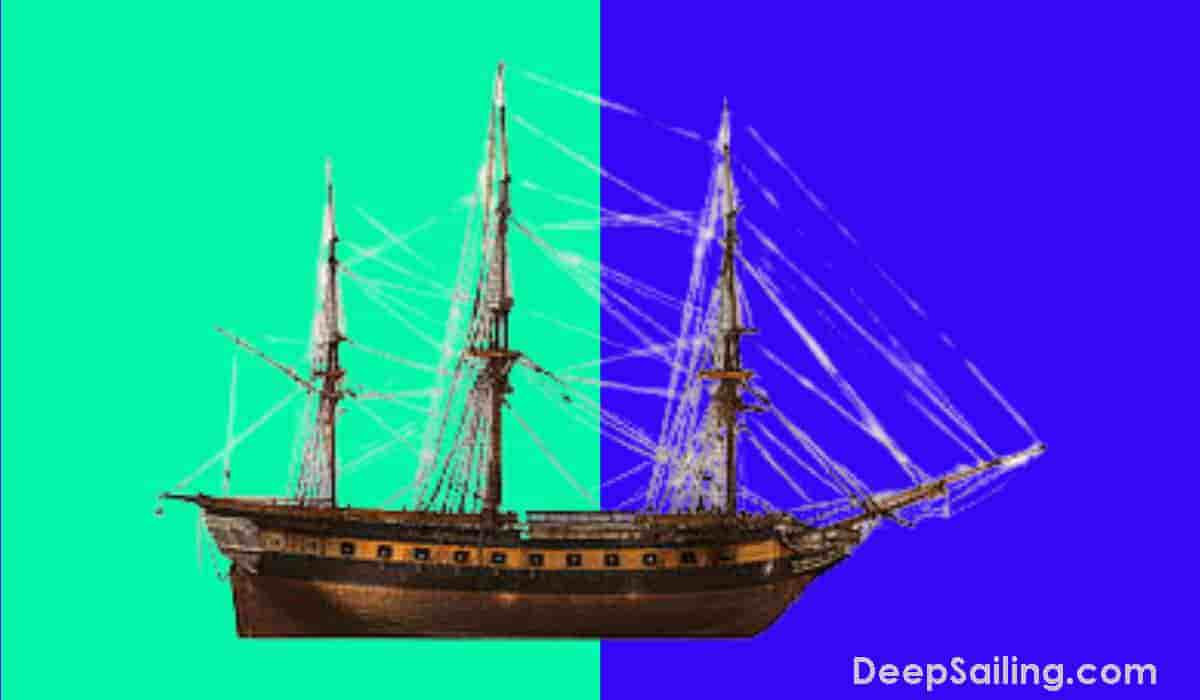
The Fluyt, also known as " fleut " or " fluit " is a sailing ship that originated in the 16th century in the Dutch Republic with a weight between 200 and 300 tons, approximately 80 feet (24 meters) in length, and a crew capacity of 12 - 15 people ( 14 ).
The Fluyt has three squared-rigged masts and was primarily used as a merchant ship to transport cargo.
It was lightly fortified, had a small stern and extended box-style structure, and was crafted using specialized tools to reduce the costs of production and make them affordable to merchants.
10. The Fully-Rigged Ship

A fully rigged ship, also referred to as a "full-rigged ship", is a sailing ship with three or more masts, with all of the masts being square-rigged and the rig, hull, mast, and yards made of iron, wood, or steel.
A full-rigged ship weighed an average 325 tons and could carry a crew of up to 36 people and these ships required a larger crew because of their fully rigged construction ( 15 ).
During the 18th century, a full-rigged ship was also referred to as a " frigate " and they were mainly used for patrolling and for attacking.
A full-rigged ship weighed an average 325 tons and could carry a crew of up to 36 people ( 16 ).
However, towards the end of the 19th century, these ships were stripped down so they could be handled by a smaller crew which helped in easier handling of the sails during the monsoon period when winds would change speed and direction without any warning.
This helped in easier handling of the sails during the monsoon period when winds would change speed and direction without any warning.
A fully rigged ship masts from stern to bow consists of: ( 17 )
- Mainmast : This is the tallest mast on the ship
- Foremast : This is the second tallest mast on the ship
- Mizzenmast : This is the third tallest mast on the sailing vessel
- Jiggermast : If there is a 4th mast, it will be the jiggermast and will be the smallest mast on the ship
11. The Cutter
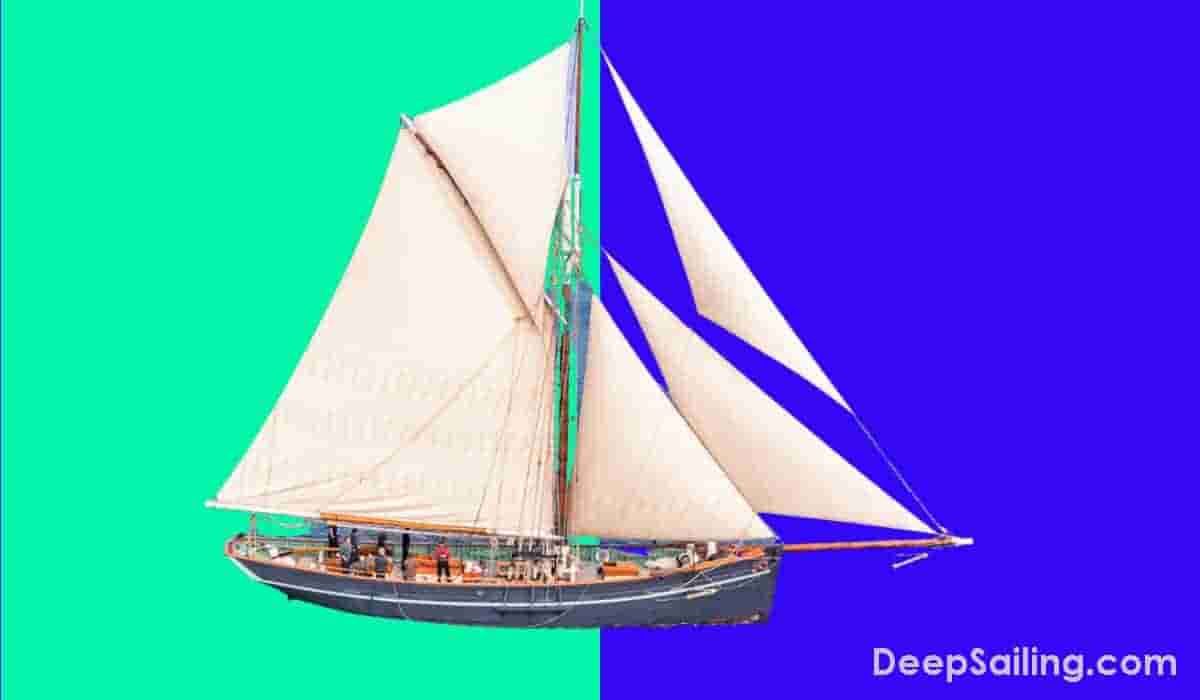
The cutter is a smaller sailing ship built in the early 18th century with a single mast rigged fore and aft and it varied in size from 20ft to 34 ft in length on average with a crew capacity of between 21 to 66 people ( 19 ).
A cutter sailing vessel features: ( 18 )
- Narrow hull
- 2 or more headsails
- Decked sailcraft
- Raking transom
- Vertical stem
- A gaff-rigged long bowsprit
This sailing ship was used for patrolling territorial waters and other enforcement activities during the 18th century and it was used to ferry soldiers and government officials because it was very fast and could outrun any enemy.
Modern-day cutters have a rugged appearance, are small and aptly fit into their intended purpose – speed and agility and the British Sailing Club still has open-oared cutters in their fleet of sailing ships.
12. The Yawl
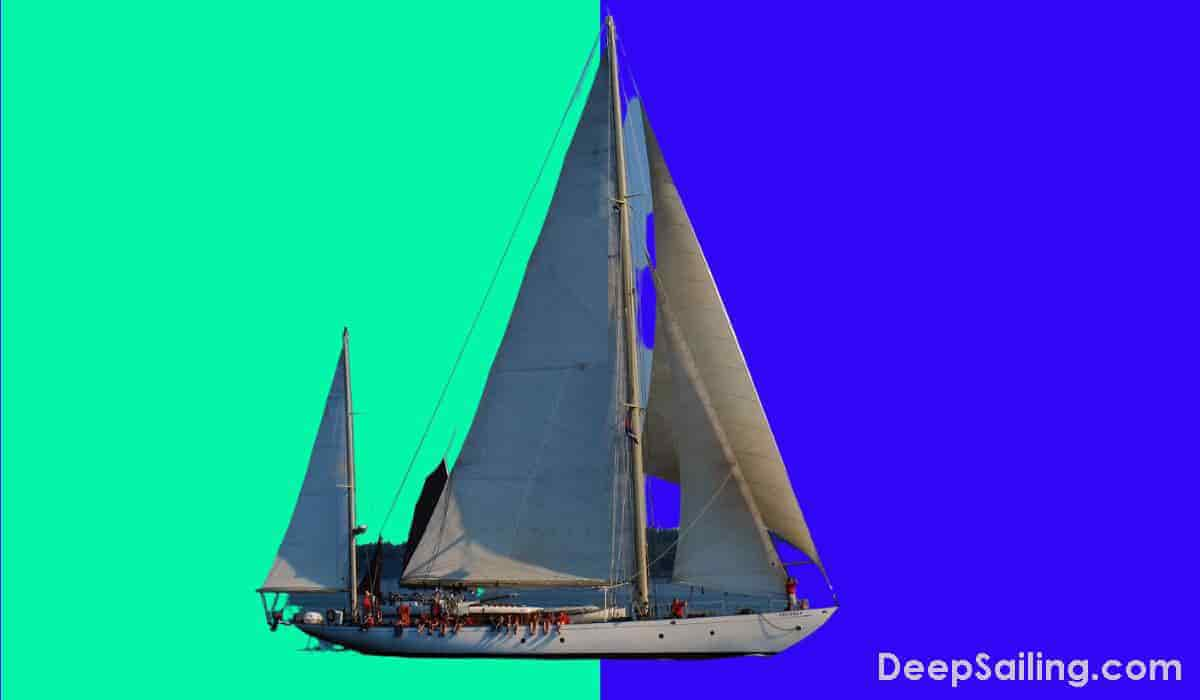
A Yawl is a sailing ship that was originally that was originally a dutch ship nicknamed " Dandy " or " Jol " in Dutch built in the 19th century with a speed range from 10-14 knots, an average crew size of 25 people and a ship size ranging from 30ft to 75ft in length with beam sizes ranging from 10ft to 12ft.
They bore two fully-equipped masts and a fore-and-aft sail, a smaller jigger-mast and a mizzen mast that leans towards the rudder post of the ship with the mizzen sail in this case purposely designed to aid in balancing and trimming the ship on rough waters.
One famous yawl sailing ship is the Islander which was a 34ft yawl that Harry Pidgeon sailed around the world on. He was the second person in 1918 to sail around the world at that time.
13. The Brig
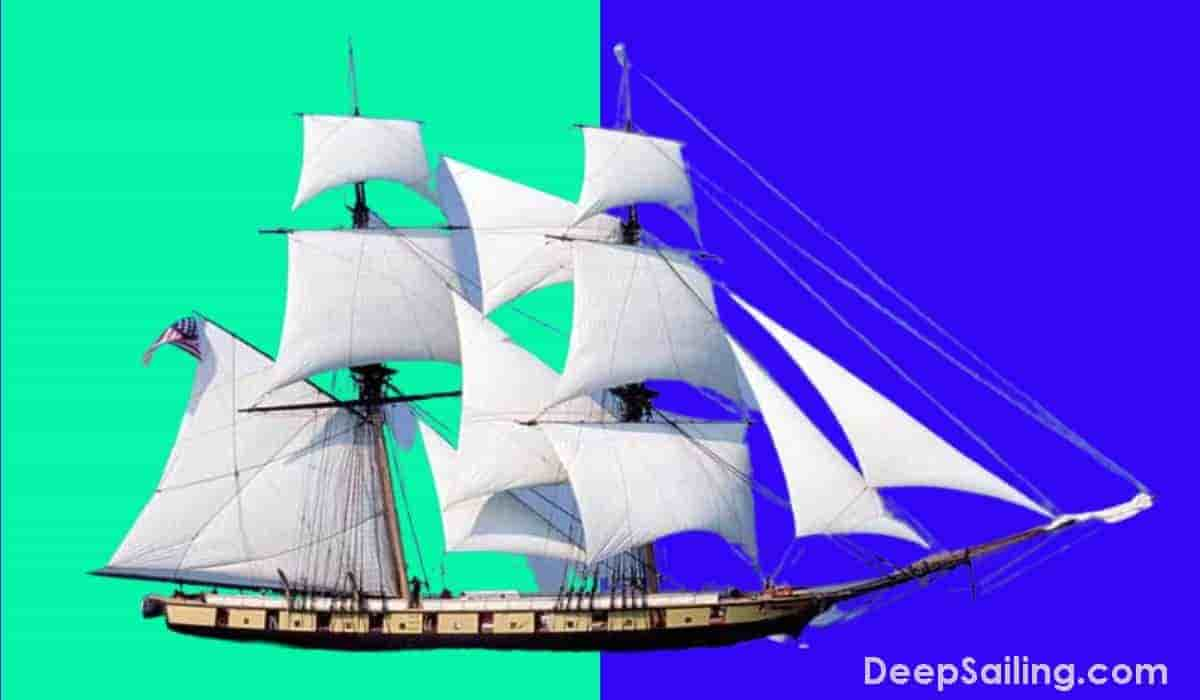
The brig is a two-masted sailing ship that was originally built in the 18th century with square rigging on both masts and sometimes had a spanker on the aft mast.
The length of a brig varied from 75ft to 165ft with tonnages up to 480 ith tonnages up to 480 and it needed a crew of 22 people ( 20 ).
The brig was used as a war vessel and a cargo ship for transporting goods and they were later used to ferry large cargo on the open seas since they could easily follow the direction of the prevailing winds.
It came with a berthing deck that had sleeping quarters for cabin crew and marine officials, storage areas, a sail bin, a wood-paneled stove room, guns, and carronades.
They would be brought into the harbor without using tugs and could maneuver well in small areas.
Famous brig ships are listed below.
- USS Argus : This was a United States Navy brig that fought in the First Barbary War, taking part in the blockage of Tripoli and the war of 1812
- USS Reprisal : This was the first ship of the United States Navy
- USS Somers : This was a brig in the United States Navy that became infamous for being the only US Navy ship to undergo a mutiny
14. The Ketch

A ketch is a two-masted sailboat that originated in the 17th century with most ketch ships ranging from 40ft to over 120ft in size and weighing between 100 and 250 tons. A ketch ship needed a smaller crew of only 4 people to operate ( 21 ).
The ketch looked just like the Yawl and as stated had two masts each having a fore-and-aft rig with the difference between the two being that the ketch had a mizzen mast placed on the taller mainmast but at a position in front of the rudder post. The mizzen in this case aided in maneuvering the vessel.
A ketch ship was used for:
- Cargo Transportation
15. The Hulk
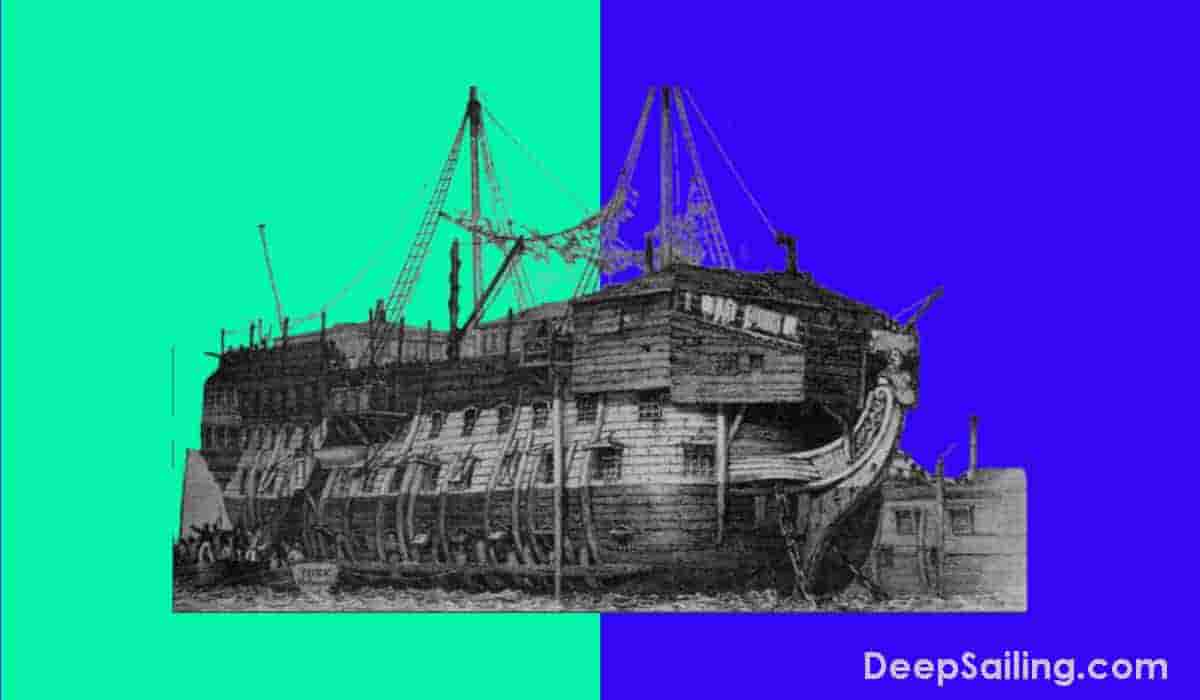
A hulk is an 18th-century ship that is a derivative of the Carrack with a weight of 400 tons that is afloat but incapable of going to sea. In maritime terms, the name "Hulk" was given to ships that were outdated, stripped down or unprofitable to run.
The bulk of the hulk fleet was comprised of abandoned ships, stripped down and therefore could not continue to ply across the Mediterranean Sea as cargo or transport ships.
They are stationary and kept for their buoyancy and were used as a prison, a place for gambling.
- Maritime Museum Of The Atlantic. " Sailing Ship Rigs ".
- The New York Times. " America's Cup Held Here Since 1851 ", PDF.
- World History Encyclopedia. " Carrack Definition ," Paragraph 3.
- Same As Reference 3
- Military History. " Carracks, Famous Carracks ," Paragraph 9.
- " Aken, tjalken en kraken " by Hans Haalmeijer & Dirk Adrianus Vuik, Page 12.
- Google Books Ngram Viewer. " Brigantine ".
- Gaspee Info. " Brigentines Described ," Paragraph 3.
- Wikipedia. " Barquentine ," Paragraph 1.
- " Ship: 5000 Years Of Maritime Adventure " by Brian Lavery, Page 137.
- Oxford English Dictionary (Online Edition). " Barque ".
- University of Houston. " No. 338 Clipper Ship ". Paragraph 2
- Marine Insights. " Windjammer Sailing Ships: From Past to Present ". Paragraph 8
- History Today. " Dutch Shipbuilding in the Golden Age ". Volume 34, No. 1
- " The Story Of The Sea, Volume 1 " by Arthur Quiller-Couch, Page 20.
- Whaling Museum. " Rigs Of Vessel, Ship ," Paragraph 1.
- " A Dictionary of Sea Terms " by Anstead, A, Page 96.
- Britannia. " Cutter, Sailing Craft ". Paragraph 1.
- " The Boats Of Men Of War " by William May & Simon Stephens
- Texas Navy Association. " Glossary Of Nautical Terms ". Page 1
- National Museum Of American History. " Ship Model, Ketch ". Paragraph 1
Virtual sailing
Sail around the world, sailaway is a sailing simulator on a global scale., real weather, simulates the actual weather, accurate navigation, practise your navigation skills, spectacular racing, compete in races.
| |
AMAZING SAIL TRIM
True sail trim, customize boats, easy customization, beautiful boats, boat designs, make friends, socialize and meet other sailors.
| | |
Better Sailing
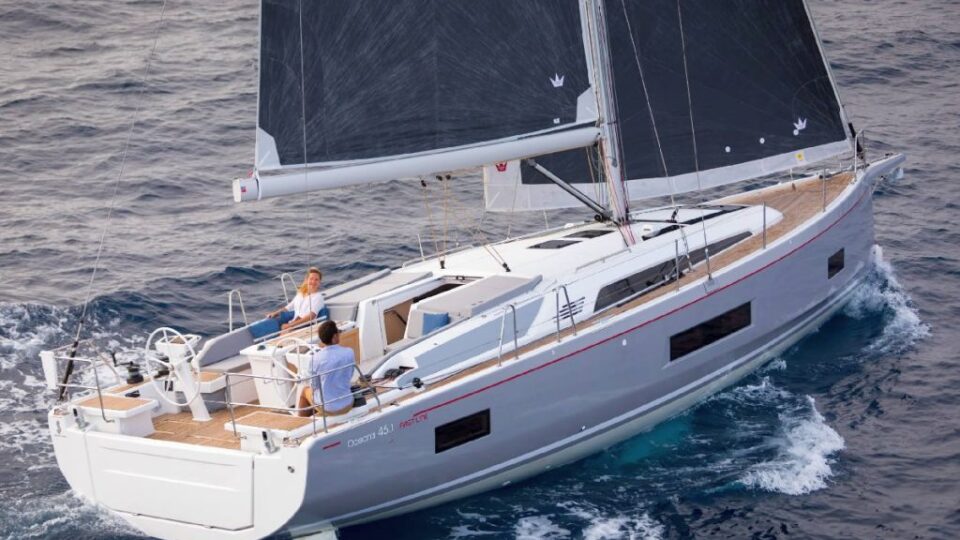
Best Sailboats with 3 Cabins
Are you looking for chartering or buying a new or used 3-cabin sailboat? Do you want to sail around the world with your family, friends, or partner? Nowadays, there are a lot of spacious and reliable 3-cabin sailboats that can serve your needs and preferences. Always remember to conduct thorough research before buying a sailboat in order for you to live or sail on it with adequate comfort and space. Choosing a well-designed, robust, spacious, and seaworthy sailboat is the key to successful passagemaking. So, are you looking to accomplish your dream and sail overseas with a 3-cabin sailboat? Then, continue reading this article. I’m going to list the best 3-cabin sailboats to live on and travel overseas as well as their characteristics. Follow me!
For more than four decades the Amel brand has managed to build robust and reliable long-range cruising yachts. The Amel 55 ensures a comfortable motion while sailing and her long waterline length offers great speed potential. Moreover, she provides excellent protection on deck because of her wheel shelter at the end of the cockpit as well as ample space in the cockpit area. As for the rigging, the cutter headed ketch rig is fully furling, and has electric reefing on the mainsail, genoa, and a set of electric sheet winches. Another great characteristic is that she has double bow rollers which allow two anchors to be carried on the bow. The saloon has a huge table with wrap-around seating, plenty of handholds, and enough space for stowage.
Furthermore, she has a three-cabin layout; forward is situated the main cabin with enough headroom, and aft you can choose either a huge stateroom or a pair of cabins with double or side-by-side beds. Lastly, forward, aft and main bulkheads are watertight with rubber seals on the door and have a strongback so as to close firmly. All these amenities, space, easy-handling, and excellent performance while sailing, should be considered by anyone planning long-term cruising.
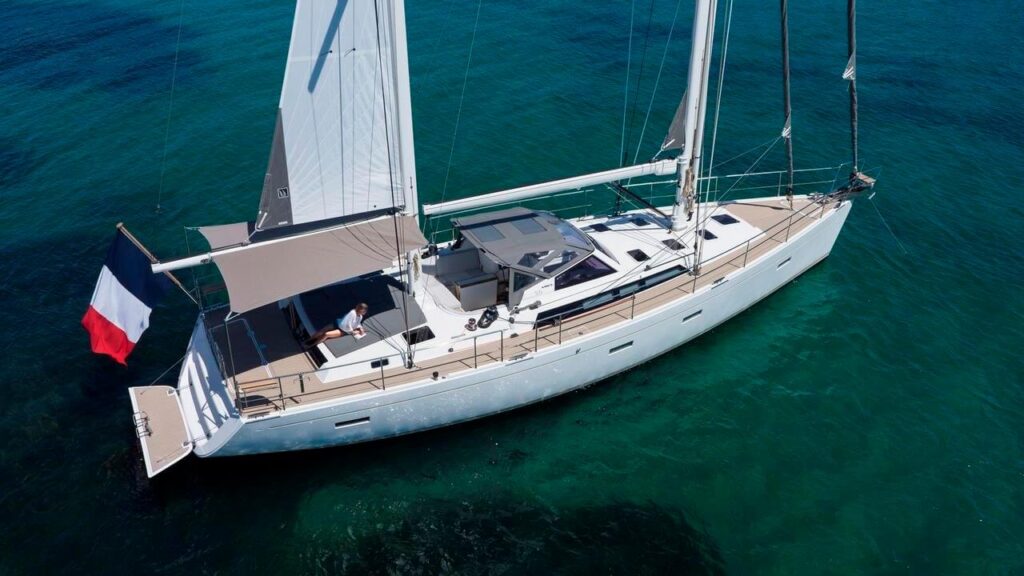
Elan Impression 40.1
This sailboat is widely popular in the charter market. She offers great volume aft that allows for extra storage under the helmsman seats and has extra space forward in the cockpit. The rig features a powerful overlapping headsail which is the main driving force behind the sailboat when the engine is off. Moreover, she has a simple overall set-up which makes her easy to handle. The interior layout features a linear affair running down the starboard side including a large fridge. To port, there’s a very large convertible saloon sofa as well as a chart table.
Furthermore, there’s a double berth forward and a bunk room just to port with the heads/shower to starboard. So, you benefit from a larger double berth with heads to port and a separate shower room to starboard. Lastly, you can choose between four different cabin layouts; for the 3-cabin layout, there are two roomy cabins aft and an en-suite forward cabin with enough storage under the bed.
Oceanis 40.1
The 39ft Oceanis 40.1 offers plenty of deck volume, interior space and ensures high performance while sailing. She is available in different layouts, draughts, and rigs, so as to satisfy each sailor’s needs and preferences. A spacious family cruiser, with a wide cockpit, and enough speed without minimizing her capabilities in terms of performance and handling. She has the standard in-mast furling mainsail and as well as an optional genoa and a standard self-tacking jib. Below, there’s a big saloon, a C-shaped galley, a double cabin forward, and one double cabin or two cabins aft with bunk beds. So, you have all amenities to satisfy a family’s needs. A comfy cockpit, a spacious saloon, 3 roomy cabins, and a large practical galley for use in port. You can buy a new Oceanis 40.1 for $257,400 and even schedule a test drive through the company’s website.

Jeanneau Sun Odyssey 36i
This high-performance cruiser with her exceptional hi-tech construction ensures powerful offshore sailing. With her fractional rig, high-aspect blade rudders, 3rd generation hull construction, and perfectly capable of sailing upwind, she’s a classic example of a modern performance cruiser. You can select the 3-cabin option, aft cabin with a double bed and the other two with bunks or doubles. The central saloon has clever design touches with a removable dining table leaf to seat and extra settee space. Also, a big L-shaped galley at the foot of the companionway, to starboard, and the head and shower stall just opposite, to port. As you can see the boat’s overall appeal offers great amenities along with excellent sailing performance.
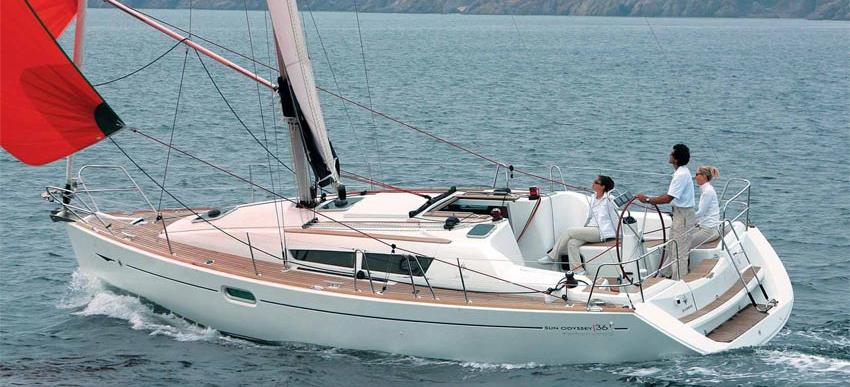
This is a 39ft 3-cabin sailboat adequate for 6 or 8 persons. She has a wide and straight hull as well as a spacious cockpit that provides enough space to move around, relax, and dine outdoors. On the stern, there’s a platform that is located lower to the hull of the ship. The platform is separated from the cockpit with a bench below and is very easy to lower and raise, as well as store items and additional equipment. Furthermore, you can choose between three different types of interior or 2 different cabin layouts. She has a modern and functional interior equipped with comfy furniture. Due to her abundant space below deck, the sailboat can offer a three-bath double cabin layout or 3 small but comfortable cabins with enough headroom.
This sailboat is carefully designed so as to ensure comfort and a spacious interior to live in. The layout of Hunter 38 has an L-shaped galley to starboard at the foot of the companionway, a nav station to port, and a dining area amidships. Moreover, the salon has a 6’6” headroom and the galley has a fridge, a sink, a stove/oven, and cabinets for storage. The V-berth and both aft cabins can accommodate 2 people each. Also, all 3 cabins have hanging lockers and enough storage space. Also, the 2-compartment single head is connected with doors to both the main cabin and the aft stateroom. Her base price starts from $144,990 and is ideal for coastal cruising and family outings.
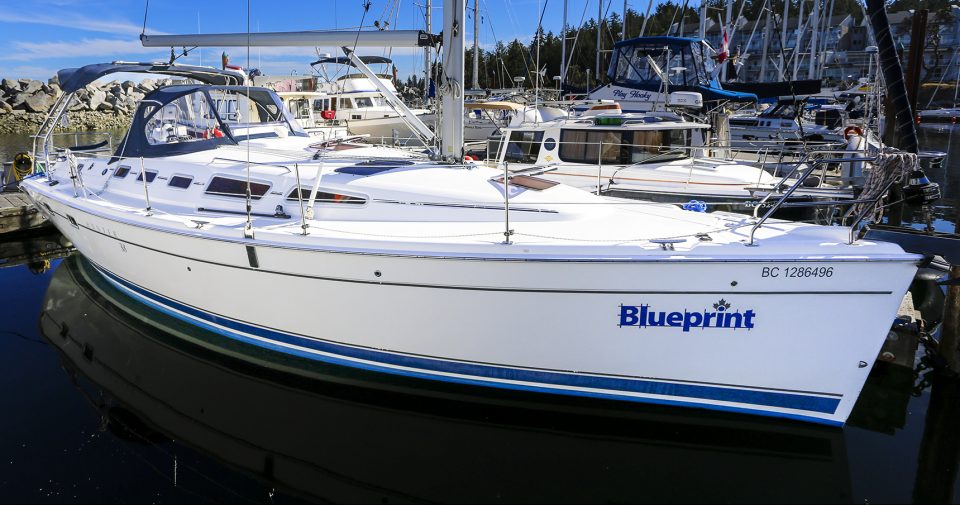
Bavaria Cruiser 34
The Bavaria 34 has similar hull construction with her previous models 32 and 33. However, this one is more spacious and with a few new bits of restyled bodywork as well as more interior options. She’s generally responsive and enjoyable on the helm while sailing. Despite this, deck stowage around the cockpit is limited to just two depth lockers in the aft cockpit seating. But below deck, there’s a quite large saloon, big and functional galley with all basic amenities, and 3 roomy cabins. The option of three double cabins can accommodate a family of 6 and the port cabin offers a big head compartment. Lastly, she’s easy to sail and handle and ensures a great combination of quality and value. In other words, she’s like a home away from home!
Best Sailboats with 3 Cabins – Final Thoughts
These are some great 3-cabin sailboats adequate for either offshore sailing or just for coastal cruises and family outings. Remember that everything depends on some important factors that determine which 3-cabin sailboat is the right for you. These factors are your sailing routes, your budget, your needs, interior comforts, sailing performance, and your crew members. So, you need to consider everything before buying a new or used 3-cabin sailboat. For example, if you’re just sailing around a bay and anchoring a lot with your family, you don’t need a high-performance sailboat. On the other hand, if you’re sailing offshore for a long time and you have 5 more persons in your crew then you’d require a spacious, reliable, and fast sailboat. In any case, there’s a wide variety of different options out there to choose from and you’ll definitely find what you’re looking for. Bon voyage!
Peter is the editor of Better Sailing. He has sailed for countless hours and has maintained his own boats and sailboats for years. After years of trial and error, he decided to start this website to share the knowledge.
Related Posts

The Ultimate Guide to Choosing the Best Fishing Line for Trolling

Lagoon Catamaran Review: Are Lagoon Catamarans Good?

Best Inboard Boat Engine Brands

Are O’Day Sailboats Good? A Closer Look at a Classic Brand
- Buyer's Guide
- Destinations
- Maintenance
- Sailing Info
Hit enter to search or ESC to close.

Oahu: Waikiki Snorkel and Sailing Day Trip With Lunch
Oahu’s Waikiki Snorkel and Sailing Day Trip With Lunch offers an enticing blend of ocean adventure and culinary delight. Aboard the spacious Gold Coast Catamaran , guests embark on a 2-3 hour excursion that promises unforgettable experiences. From snorkeling in crystal-clear waters to sailing along the stunning coastline, this excursion caters to thrill-seekers and nature enthusiasts alike. With a delicious onboard lunch , unlimited non-alcoholic drinks, and two complimentary alcoholic beverages, the experience promises to satisfy both adventurous and indulgent palates. But the true allure lies in the opportunity to spot captivating marine life , including turtles and dolphins, during this highly-rated adventure .
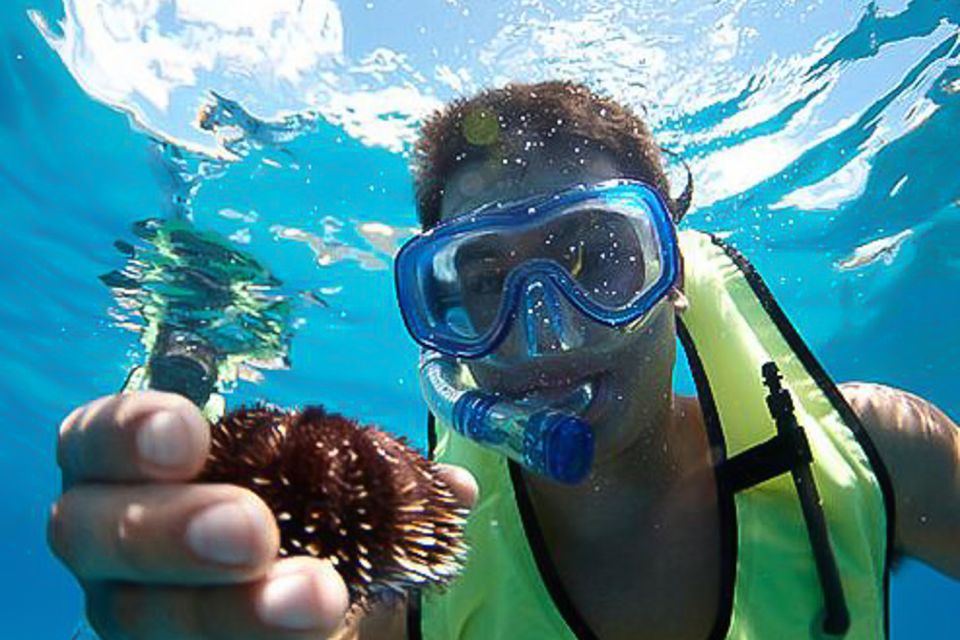
- This 2-3 hour snorkel and sailing trip departs from Kewalo Basin Harbor and includes snorkeling, sailing, and wildlife watching around Oahu.
- The 80-passenger Gold Coast Catamaran offers complimentary lunch, unlimited non-alcoholic drinks, and 2 alcoholic beverages for participants.
- Snorkel gear, life vests, and towels are provided, allowing guests to focus on enjoying the crystal-clear waters and marine life.
- The experience is suitable for all ages, from infants to seniors, making it ideal for families and solo travelers.
- With an overall rating of 4.6/5 from 101 reviews, the trip is praised for its professionalism, scenic beauty, and wildlife encounters.
More tours and experiences nearby.
- Beginner Scuba Diving Adventure With Videos in Honolulu
- Circle Island Tour With Waimea Waterfall
- Chiefs Luau Admission
- Hawaiian Sea Turtle Snorkel Sail From Waikiki With Lunch Included
Overview of the Experience
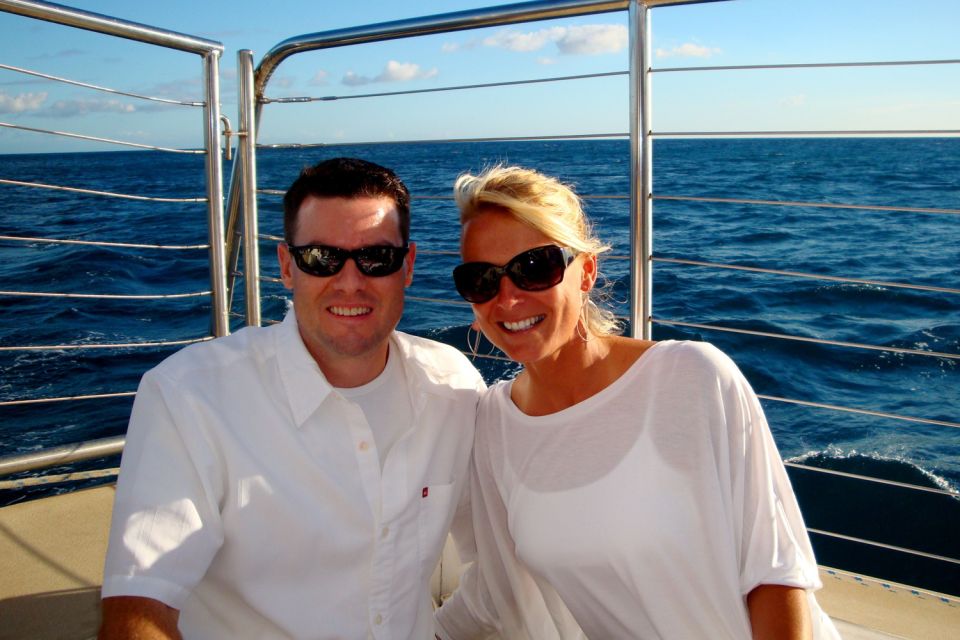
This Oahu snorkel and sailing day trip offers a comprehensive adventure, providing visitors an opportunity to explore the island’s vibrant underwater world and relax on a spacious catamaran.
Priced at €96.85 per person, the 2-3 hour excursion includes snorkeling, sailing, and the chance to spot turtles, dolphins, and possibly whales, depending on the season.
Sailing aboard the 80-passenger Gold Coast Catamaran , guests can enjoy a complimentary lunch , unlimited non-alcoholic beverages, and 2 alcoholic drinks.
With an overall rating of 4.6/5 based on 101 reviews, the tour is suitable for adults, children, and infants.
Cancellation is free up to 24 hours in advance, and a reserve now, pay later option is available.
Itinerary and Activities
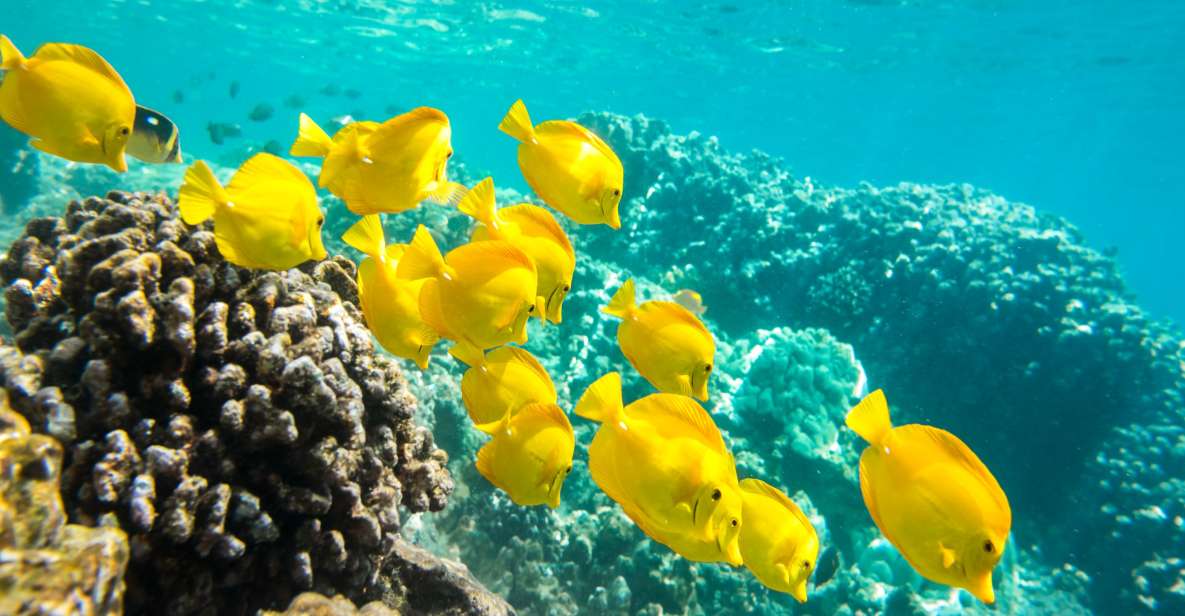
The adventure includes snorkeling in crystal-clear waters to explore the vibrant underwater world, as well as sailing and the opportunity to spot turtles, dolphins, and possibly whales, depending on the season. Relax on the spacious deck of the 65-foot catamaran and enjoy a delicious lunch, unlimited non-alcoholic beverages, and two alcoholic drinks on board.
| Activity | Description |
|---|---|
| Snorkeling | Explore the underwater world and witness the vibrant marine life. |
| Sailing | Relax and take in the stunning views from the catamaran’s deck. |
| Turtle & Whale Watching | Spot these magnificent creatures, depending on the season. |
| Lunch | Enjoy a delicious meal with unlimited non-alcoholic drinks and two alcoholic beverages. |
| Amenities | Snorkel gear, life vests, and towels are provided on board. |
Catamaran Details
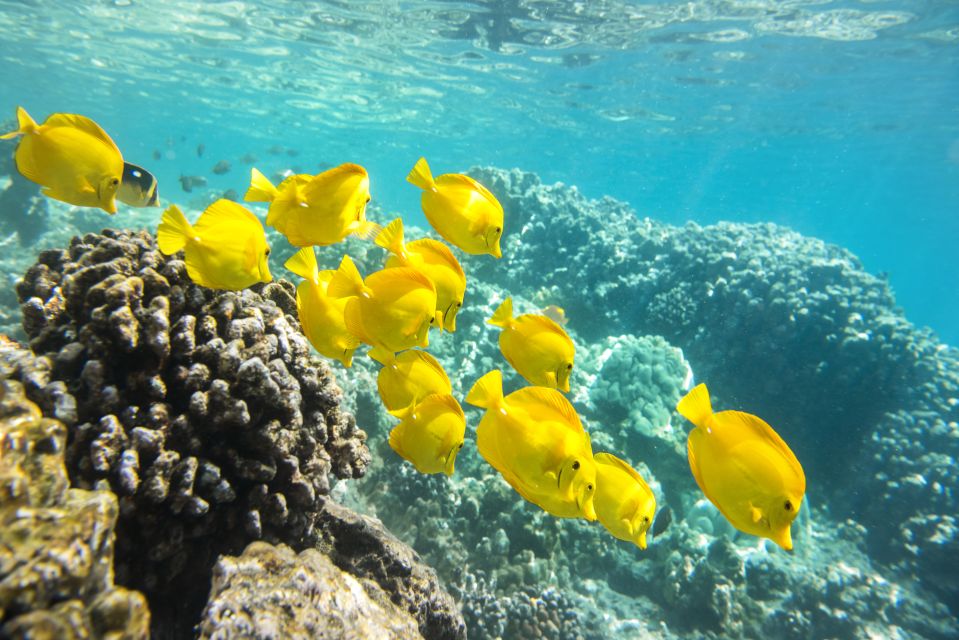
Guests embark on the adventure aboard the Gold Coast Catamaran , an 80-passenger vessel that departs from Kewalo Basin Harbor , slip F28. Meter parking is available nearby for $1 per hour.
The spacious catamaran offers a range of onboard amenities , including snorkel gear, life vests, and towels, as well as complimentary non-alcoholic beverages. Guests can relax on the catamaran’s expansive deck and enjoy the scenic views as they sail along the beautiful Oahu coastline.
The catamaran’s knowledgeable crew ensures a smooth and enjoyable experience for all participants, making this Waikiki snorkel and sailing adventure an unforgettable highlight of any visit to the island.
Participant Information
Adventurers of all ages, from children as young as 4 to adults up to 99 years old, can join this Oahu snorkel and sailing day trip.
The tour is suitable for both families and solo travelers seeking an immersive experience exploring Oahu’s vibrant underwater world and coastal landscapes. Infants aged 3 and younger are also welcome to accompany their families on this adventure.
Guests should come prepared with swimwear, towels , and sunscreen to fully enjoy the activities and scenery.
With the catamaran’s onboard amenities, such as snorkel gear and life vests, participants can focus on making the most of their time in the crystal-clear waters and on the open sea.
Customer Reviews and Ratings

Overwhelmingly positive customer reviews and high ratings underscore the popularity of this Oahu snorkel and sailing day trip, with an overall score of 4.6 out of 5 based on 101 reviews.
Travelers consistently praise the professionalism and friendliness of the crew, as well as the cleanliness of the catamaran.
The guided snorkeling and sailing experience also receives high marks, with a 4.8 rating for the guide.
Transportation logistics and overall service quality are likewise well-received, scoring 4.7 and 4.8 respectively.
While some customers noted limited snorkeling time due to weather conditions, the vast majority of reviewers enthusiastically recommend this excursion for its scenic beauty , wildlife encounters , and unforgettable island adventure .
Departure and Parking
Travelers depart for the Oahu snorkel and sailing day trip from Kewalo Basin Harbor, slip F28. Meter parking is available nearby at $1 per hour.
Once aboard the 65-foot Gold Coast Catamaran, guests can expect:
- Snorkel gear, life vests, and towels provided
- Complimentary non-alcoholic beverages and 2 alcoholic drinks
- A spacious deck to relax and take in the scenic ocean views
- The opportunity to spot turtles, dolphins, and possibly whales
- A delicious lunch served on board the 80-passenger vessel
With convenient parking and all the necessary equipment and amenities provided, this Oahu snorkel and sailing adventure ensures a stress-free and enjoyable day out on the crystal-clear waters.
Included Amenities
The Gold Coast Catamaran offers a range of amenities to ensure a comfortable and enjoyable snorkel and sailing experience. Guests can expect to find snorkel gear , life vests , and towels provided on board, allowing them to focus on exploring the vibrant underwater world.
In addition, the catamaran features complimentary non-alcoholic beverages , as well as two alcoholic drinks per person, ensuring everyone can stay refreshed throughout the journey.
The spacious deck provides ample room for guests to relax and take in the stunning ocean views.
With these thoughtful amenities, the Oahu Snorkel and Sailing Day Trip is designed to cater to the needs of all participants, making it a truly memorable experience.
Suitable for All Ages
This Oahu Snorkel and Sailing Day Trip caters to guests of all ages, from young children to older adults. The experience is suitable for adults (ages 13-99), children (ages 4-12), and even infants (ages 3 and younger), making it an ideal choice for families and groups with diverse age ranges.
Whether you’re exploring the vibrant underwater world through snorkeling or relaxing on the spacious deck of the catamaran, this adventure offers something for all:
Suitable for all ages, from infants to seniors
Opportunity to spot marine life like turtles and dolphins
Enjoy a delicious lunch and complimentary drinks on board
Convenient transportation and parking options available
Perfect for families, groups, and solo travelers alike
Here's a few more nearby tours and experiences we think you'll like.
- Honolulu Xtreme Parasail
- Oahu Circle Island Tours
- Oahu Shark Dive
- Oahu Submarine Scooter Adventure
- Turtle Canyons Snorkel Excursion From Waikiki, Hawaii
- Waikiki Trolley Hop-On Hop-Off Tour of Honolulu
Frequently Asked Questions
What type of food is served for lunch.
The trip includes a lunch served on board, which features a selection of local Hawaiian dishes and non-alcoholic beverages. The specific menu may vary, but it give you a tasty and satisfying midday meal for participants.
Can I Bring My Own Snorkel Gear?
Yes, participants can bring their own snorkel gear. However, the tour operator provides complimentary snorkel equipment on board the catamaran. Using the provided gear ensures proper fit and safety for the snorkeling activity.
Is There a Minimum Group Size Requirement?
There is no minimum group size requirement for this activity. Individuals can book this experience as solo travelers or with any number of companions. The tour accommodates a wide range of group sizes.
Are There Any Age Restrictions for the Activity?
The activity is suitable for both adults and children, with participants ages ranging from 4 to 99. Infants 3 and younger are also welcome. There are no age restrictions for this experience.
How Often Do the Tours Depart Throughout the Day?
The tours typically depart multiple times throughout the day, though the exact frequency may vary depending on demand and weather conditions. Customers should check with the operator for the latest schedule and availability.
Not for you? Here's more of our most recent tour reviews happening neaby
- Oahu: Diamond Head Hiking and Breakfast at Eggsn Things
- Oahu: Honolulu Harbor Cruise Terminal Transfer
- From Waikiki: Best of Oahu Photo Tour With Pickup
- Oahu: Aerial Adventure, Climbing, & Freefall Experience
- Oahu: Polynesian Cultural Center Island Villages Ticket
- Oahu: Waikiki Eco-Friendly Afternoon Whale Watching Trip
- Oahu: Cultural Day Excursion on Polynesian Canoe
- Oahu: Friday Night Fireworks Sail From Hilton Hawaiian Pier
- Oahu: Wreck & Reef Scuba Dive for Certified Divers
- Oahu: Kailua Guided Kayak Excursion With Lunch
- Oahu: Pearl Harbor Premium Tour
- Oahu: Ka Moana Luau Dinner and Show at Aloha Tower
- Oahu: Authentic Hawaiian Sailing Adventure to Mokuluas
- West Oahu: Dolphin Watching and Snorkeling Catamaran Cruise
- Oahu: Surfing Lessons for 2 People
The Oahu: Waikiki Snorkel and Sailing Day Trip With Lunch offers an unbeatable combination of ocean adventures , delicious cuisine, and stunning scenery .
With its high customer ratings, spacious catamaran, and inclusive amenities, this excursion is the perfect choice for those seeking an unforgettable experience in Waikiki.
Whether you’re a seasoned adventurer or a first-time explorer, this trip caters to all ages and interests, promising an unforgettable day on the water.
Similar Posts

Land Rover Safari on Lassithi Route
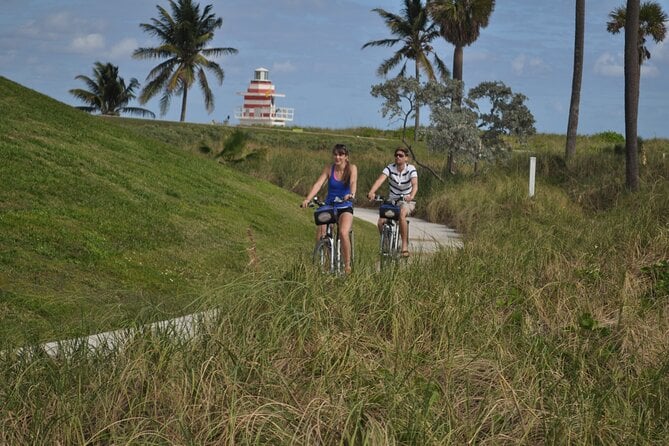
Bicycle Rental in Miami Beach
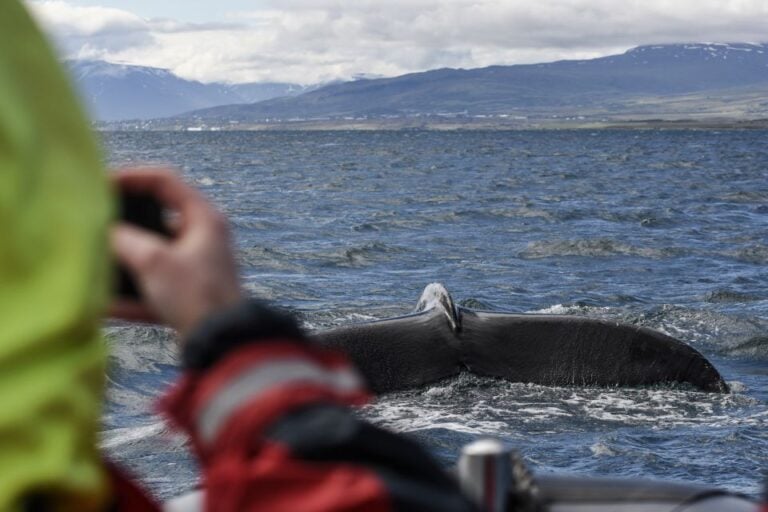
Akureyri: 2–Hour Whale Watching Express by RIB Speedboat

Local Food and Wine Walking Tour Around Rome

4 Hour Jeep Tour (Morning or Sunset) – Wadi Rum Desert Highlights

Mywinecountry Experience Premium Wine Tours and Tastings

- Find my AS Number
- Clubs & Classes
- Training Training Training Discover Sailing Centres Our Programs Safety & Sea Survival e-Learning Courses Instructors Coaches Training in Focus - Live Events RYA Programs International Certificate of Competence Duke of Edinburgh's International Award Training in Focus
- Officials Officials Officials All Officiating Officials Courses Accreditation and Re-accreditation Officials Resources Racing Rules & Appeals Race Officials Committee Equipment Auditors Para Classifiers Find an Official or Assessor
- Safety Safety Safety Safety Code Induction- Online Course Safety information notices Risk & Incident Management Get Safety Support Equipment Auditing Special Regulations Special Regs Interpretations Safety Committees Major Incident Reports Maritime Regulatory Authorities Safety in Focus
- Ratings & Measurement Ratings & Measurement Ratings & Measurement Measurement Certificates Sail Numbers IRC Ratings ORC Ratings IRC Forms
- Rules Rules Rules Racing Rules of Sailing Rules Specialist Group Opinions Appeals Appeal Decisions Disciplinary- Misconduct (RRS 69) Jury Approvals Officials Resources World Sailing Documents Rules in Focus
Equipment Auditing Forms
Equipment audit forms.
Clubs are reminded that these forms are updated in line with any amendments to the Special Regulations. Clubs are requested to download the forms directly from this website to avoid using out of date forms. Alternatively you can place a hyperlink to the forms page from your website.
Files available for download

IMAGES
VIDEO
COMMENTS
Parsifal III is a distinctly sophisticated superyacht promising unforgettable luxury yacht charters. The multi-award winning 54m/177'2" sail yacht 'Parsifal III' by the Italian shipyard Perini Navi offers flexible accommodation for up to 12 guests in 5 cabins and features interior styling by Remi Tessier. A majestic sight at sea, Parsifal III ...
The most common kind of sailboat is the sloop, as it's simple to operate and versatile. Other common sailboat types include the schooner, cutter, cat, ketch, schooner, catamaran, and trimaran. Other sailboat variations include pocket cruisers, motorsailers, displacement, and shoal-draft vessels. The information found in this article is sourced ...
Catalina 16.5. jlodrummer. Catalina Yachts are synonymous with bigger boats but they have some great and smaller boats too such as Catalina 16.5. This is one of the best small sailboats that are ideal for family outings given that it has a big and roomy cockpit, as well as a large storage locker.
Its enduring popularity, strong class association, and supportive community make it a beloved classic in the world of small sailboats, embodying a perfect blend of performance, comfort, and inclusivity for sailors of all levels. 8. Hobie Cat. Start a fun hobby with the Hobbie Cat. Length: 16.7ft / 5.04 m.
A sailboat refers to any class and subclass of boat that is designed with one or more masts and rigging system as the main source of propulsion. Sailboats are available in a variety of models and rigs, including racing boats, sloops, schooners, catamarans, trimarans, sailing cruisers, and others. Some of the first sailboats on record date back ...
Traditionally sailboats are monohull displacement hulls, but catamarans and multi-hulls are becoming more common. There are many kinds of sailboats and they carry different rigs (masts, supporting shrouds and stay, and sail combinations). Sloops have one mast and generally two sails - a mainsail and a headsail called a jib or genoa.
Boats with one mast can have either one sail, two sails, or three or more sails. The 3 most common one-masted rigs are: Cat - one mast, one sail; Sloop - one mast, two sails; Cutter - one mast, three or more sails; 1. Gaff Cat Cat boat with single gaff-rigged sail 2. Gaff Sloop Sloop with gaff rig 3. Cutter
The boat is designed with positive flotation and offers good load-carrying capacity, which you could put to use if you added the available canvas work and camping tent. NorseBoats offers a smaller sibling, the 12.5, as well; both are available in kit form. $19,000, (902) 659-2790, norseboat.com.
June 17, 2024. Sailboats are powered by sails using the force of the wind. They are also referred to as sailing dinghies, boats, and yachts, depending on their size. Sailboats range in size, from lightweight dinghies like the Optimist dinghy (7'9") all the way up to mega yachts over 200 feet long. The length is often abbreviated as LOA (length ...
However, since the total sail area is distributed between multiple smaller sails forces on the boat are more equally dispersed and can be controlled and manipulated easier. This sail design can be especially handy when sailing short-handed as it means that sail trim and reefing are easier. Multiple masts also effect the boat design.
The boat's interior is elegant and traditional, exquisitely finished, with more opening portlights and improved ventilation. Under sail the X4.3 is fast and nimble, with a newly designed rudder that grips the water tenaciously even when over-pressed. Best of all, given its build quality, the boat is competitively priced. J/Boats J/45
As a general setup, sailboats will use three common sails, including headsail, mainsail, and specialty sail. Due to the varying wind conditions and the model of the sailboat, there are many types of sails including jib, genoa, trysail, storm jib, code zero, gennaker, and spinnaker. While that sounds like too many models of sails, you can easily ...
The 75 ft² sail is a powerful mainsail, suitable for one or two adults out in a light to moderate breeze.. The 56 ft² sail is very versatile.It works well for adults sailing in a good breeze, and for the kids in lighter wind conditions. Lastly, the reefable 75/56 ft² sail is an all-weather mainsail, whose area can be adapted to suit the wind strength.
one mast. triangular mainsail (called a Bermuda sail) a foresail (also called the jib) fore-and-aft rigged. medium-sized (12 - 50 ft) Fore-and-aft rigged just means "from front to back". This type of rigging helps to sail upwind. Any sailboat with one mast and two sails could still be a sloop.
1. Hallberg-Rassy. Hallberg-Rassy is a Swedish yacht maker that's very well-known in the blue water cruising circles for making some of the highest quality and sturdiest sailboats. For many sailors, this is the number one sailboat brand as it offers absolute comfort, utmost safety, and good and easy handling.
The fore-and-aft rig, however, has a lot of variations. The three main sail rigs are: Bermuda rig - most used - has a three-sided (triangular) mainsail. Gaff rig - has a four-sided mainsail, the head of the mainsail is guided by a gaff. Lateen rig - has a three-sided (triangular) mainsail on a long yard.
Discount Sails. Electric Yacht. SeaWaterPro. SBD App Non-BR. top 1 ads row1. top 2 ads row2. top 3 ads row2. SailboatData.com …is a database that contains information on over 9000 production and semi-production sailboats dating back to the late 1800's. COMPARE BOATS.
A Brigantine is a two-masted sailing ship with the main mast both a fore-and-aft main sail, a triangular type of sail and a square main topsail that came in various sizes ranging from 30 tons to 150 tons and it could carry a crew of up to 125 people but the shipping vessel could still be handled by a smaller crew if needed.
Sailaway is a sailing simulator on a global scale. Just like in real life sailing from the US to Europe will take several weeks. The boat will continue to sail when you log off. Check in every now and then to adjust sail trim, change course, set a reef or enjoy a sunset.
Sailboat. A typical monohull sloop with Bermuda rig. Sailboat on Lake Constance, Germany. A sailboat or sailing boat is a boat propelled partly or entirely by sails and is smaller than a sailing ship. Distinctions in what constitutes a sailing boat and ship vary by region and maritime culture.
The following is a partial list of sailboat types and sailing classes, including keelboats, dinghies, and multihull (catamarans and trimarans). Olympic classes. Laser. Name Year of first construction Designer Builder Notes 470: 1963: André Cornu: Several [1] 49er: 1999: Julian Bethwaite: Several [2] 49er FX: 2010: Julian Bethwaite: Several [3]
Three sail boats docking on blue water. Senglea, Malta - January 17th 2022: Protecting the entrance to the fortified city of Senglea is the Saint Michael Bastion. At its base are sailing boats and yachts moored in Dockyard Creek. Three sail boats in a row on the turquoise water of the Atlantic ocean against the horizon visible through the white ...
1. Twelve of the best training boats Sailing schools, clubs and training centers use a variety of boats with beginners, including singlehanders such as the Pico, Hartley 10 and the RS Quba, the latter having three rigs catering from entry level to more experienced sailors. There's also a range of larger training dinghies from builders such as RS, Topper, Laser and Hartley Boats.
The Moorings 46.3 is boat for demanding owners who are on the lookout for a cruiser which will whet the appetites of both crews and bystanders hanging around the marina. The superb design of the hull is the brainchild of Finot-Conq, the famous naval architects working out of Vannes. ... The agile multi-tasker is SAIL magazine's Best Boat ...
Dufour 390. This is a 39ft 3-cabin sailboat adequate for 6 or 8 persons. She has a wide and straight hull as well as a spacious cockpit that provides enough space to move around, relax, and dine outdoors. On the stern, there's a platform that is located lower to the hull of the ship.
18ft Skiff in Kiel Harbor. High-performance sailing is achieved with low forward surface resistance—encountered by catamarans, sailing hydrofoils, iceboats or land sailing craft—as the sailing craft obtains motive power with its sails or aerofoils at speeds that are often faster than the wind on both upwind and downwind points of sail. Faster-than-the-wind sailing means that the apparent ...
Story Links HANOVER, N.H. - On Tuesday, Head Coach of the open and women's sailing programs Justin Assad announced the first half of the Big Green's 2024-25 schedule. The Big Green's season will get underway this weekend, September 7, when they travel to four regattas over the weekend, three of which will take place on the Charles River.
Overview of the Experience. This Oahu snorkel and sailing day trip offers a comprehensive adventure, providing visitors an opportunity to explore the island's vibrant underwater world and relax on a spacious catamaran.. Priced at €96.85 per person, the 2-3 hour excursion includes snorkeling, sailing, and the chance to spot turtles, dolphins, and possibly whales, depending on the season.
Mi Dushi has been sailing in Aruba for more than 30 years. The catamaran has 4 outdoor decks, 53ft long and can easily accommodate large groups up to 60 guests. ... The boat made 3 stops to snorkel and 2 of the sites were murky and dark. What fish we could see on the other stop were tiny boring fish and a couple of parrot fish. Big waste of ...
Equipment Audit Forms. Clubs are reminded that these forms are updated in line with any amendments to the Special Regulations. Clubs are requested to download the forms directly from this website to avoid using out of date forms.